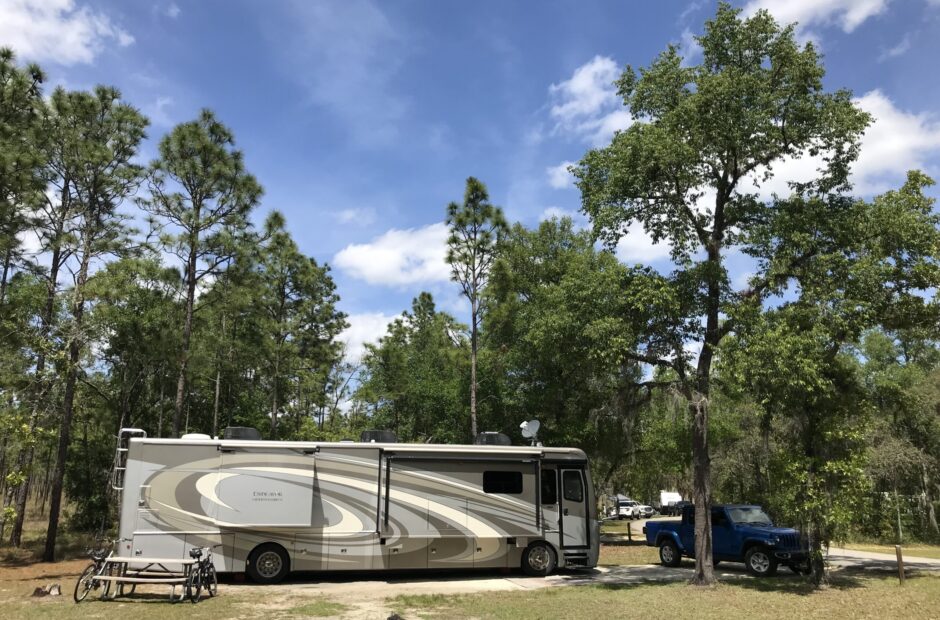Maumelle COE, Little Rock, Arkansas
The man (servant) did as Joseph told him and took the men (Joseph’s brothers) to Joseph’s house. Now the men were frightened when they were taken to his house. They thought, “We were brought here because of the silver that was put back into our sacks the first time. He wants to attack us and overpower us and seize us as slaves and take our donkeys.” ~ Genesis 43:17-18 It seems the brothers are glass half-empty people. As well they should be given their history. Some, if not all, of them have lived lives full of deceit and committed what we consider horrible deeds. In other words, they know what men are capable of because they’ve done it. I found it interesting that they seem most concerned about becoming slaves – the same fate they sent their brother, Joseph into without a moment’s hesitation. How often in our lives do the very things we become fearful of, or don’t care for, end up being the very things we ourselves have exhibited in some similar form? Lying? Stealing? Road rage? Just to name a few. When we stop ourselves and think about what we’re doing, how often does Jesus’s admonition “He who is without sin, cast the first stone.” (John 8:7) pop up in our minds? That thought should bring us up short, and steer us toward becoming more Christ-like.

Beginning in the early 1800’s (1830 in this area of the Arkansas Territory), bathhouses that contained mineral contents and/or hot springs water, became all the rage. In 1832, President Andrew Jackson signed legislation establishing the Hot Springs Reservation (reservation meaning something like the government was holding the land in reserve so it couldn’t be developed). In 1849, The Department of the Interior was established and the reservation was placed under its control, but it took until 1877 for Benjamin Kelley to be named as the first reservation superintendent and he ordered people to leave their make-shift camps around the springs and directed the opening of the first free government bathhouse. It took until 1892 to begin construction on the formal entrance to the reservation. In 1901, to protect the thermal water and retain heat, a water collection and distribution system was installed and all the springs were enclosed. Then in 1911, the DOI required that the wooden bathhouses be replaced with safer, more sanitary masonry structures. In 1916 the National Park Service was established and the Arkansas Reservation is put under their control. In 1921, it’s named a National Park. Hot Springs, Arkansas soon became “America’s First Resort” which often was a patient’s last resort as they searched for healing.
Between 1892 and 1923, eight masonry bathhouses were erected and put into use. The one built in 1892 (Hale) is the oldest surviving. It’s now a hotel, but it still contains a sauna in a thermal cave carved from the mountainside. There are still two houses open for spa business, privately owned but under the auspices of the National Park Service – as are all seven former bathhouse buildings on Bathhouse Row.
One of them, The Fordyce now serves as the National Park Visitor Center.

When I went looking as to why they chose this house, this is what I found on the National Park Service website, along with a wonderful picture of the place in the bright sunlight. 😊
The Fordyce opened March 1, 1915. Designed by Little Rock architects Mann and Stern and constructed under the supervision of owner Sam Fordyce’s son John, the building eventually cost over $212,000 to build, equip, and furnish. Totaling approximately 28,000 square feet, the Fordyce is the largest bathhouse on the Row. It has three main floors, two courtyards, and a basement under most of the building. The Fordyce became the first bathhouse on the Row to go out of business when it suspended operations on June 30, 1962, but it was extensively restored by 1989 and is now enjoying a renaissance as a historically furnished museum.

Most of those who came to Hot Springs (at least in the early years) were seriously ill with anything from physical ailments or pain, to diseases like immune disorders, to arthritis. It wasn’t the type of spa resort for relaxing the “rich and famous” we’ve come to know in the US.
We didn’t realize there was a museum inside the Visitor Center! What an absolutely fascinating place this was! And a little scary when you consider some of the ‘treatments’ they used. Yikes! And as usual, I took waaay too many pictures. Sorry. Can’t help it!


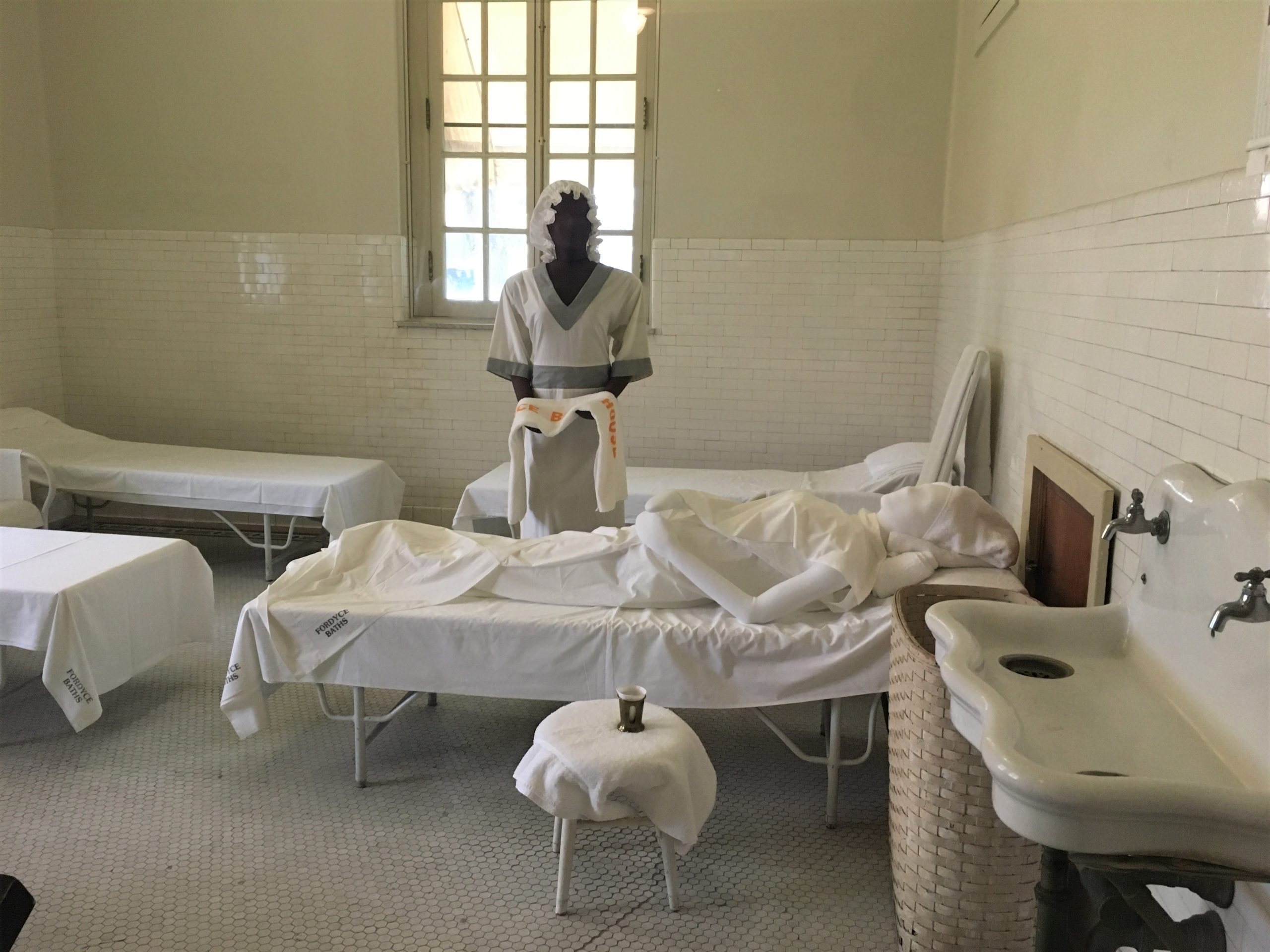
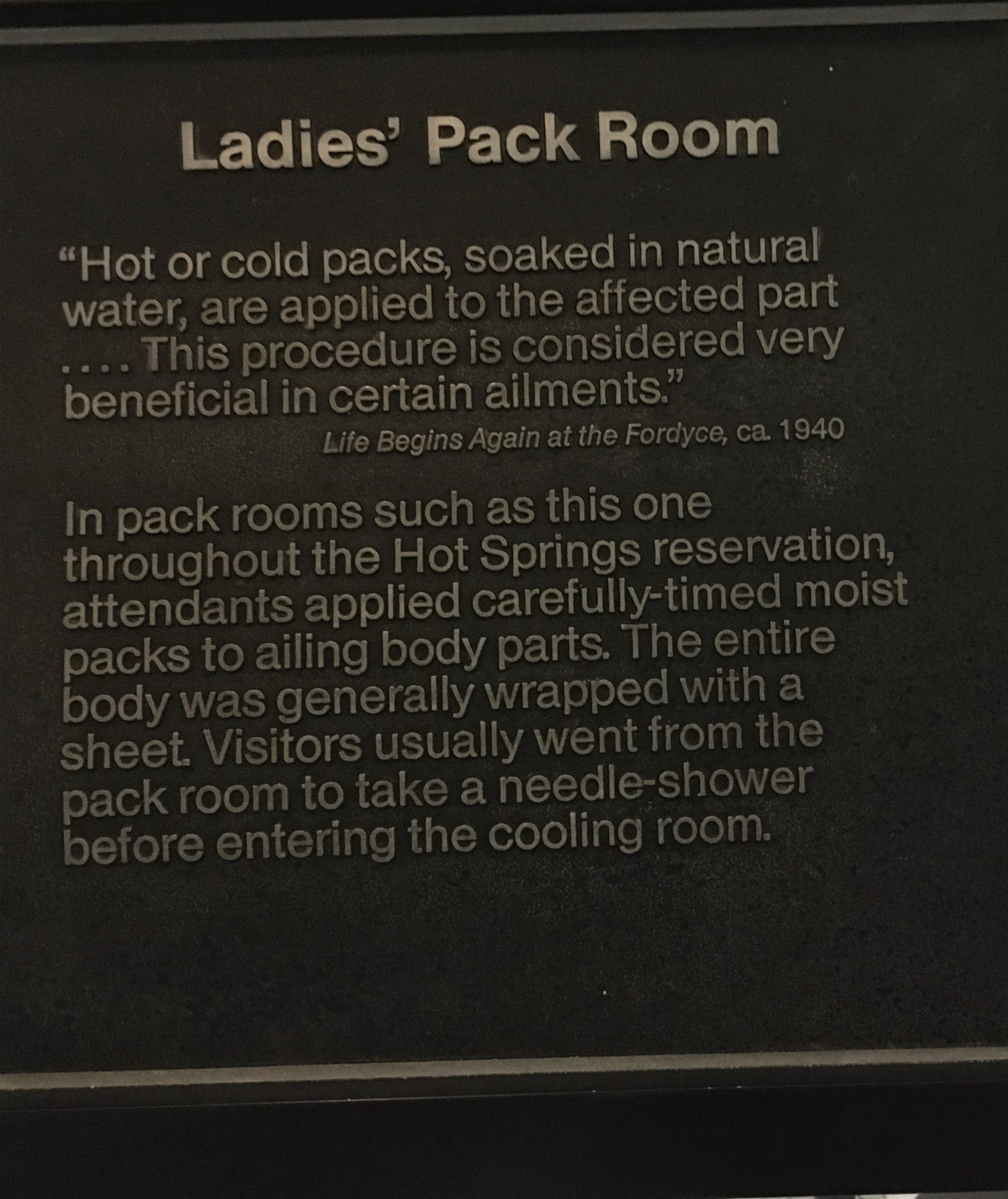

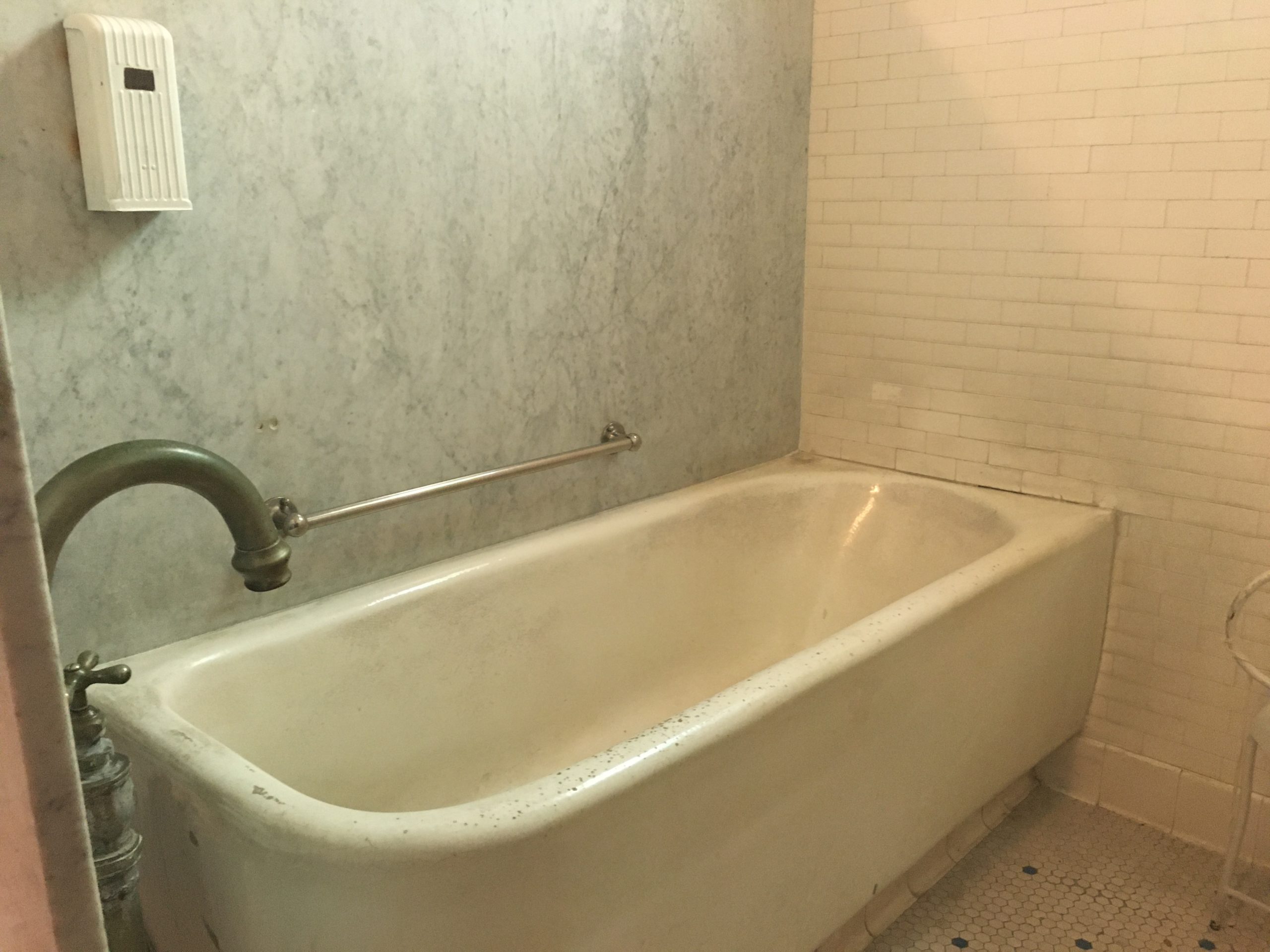

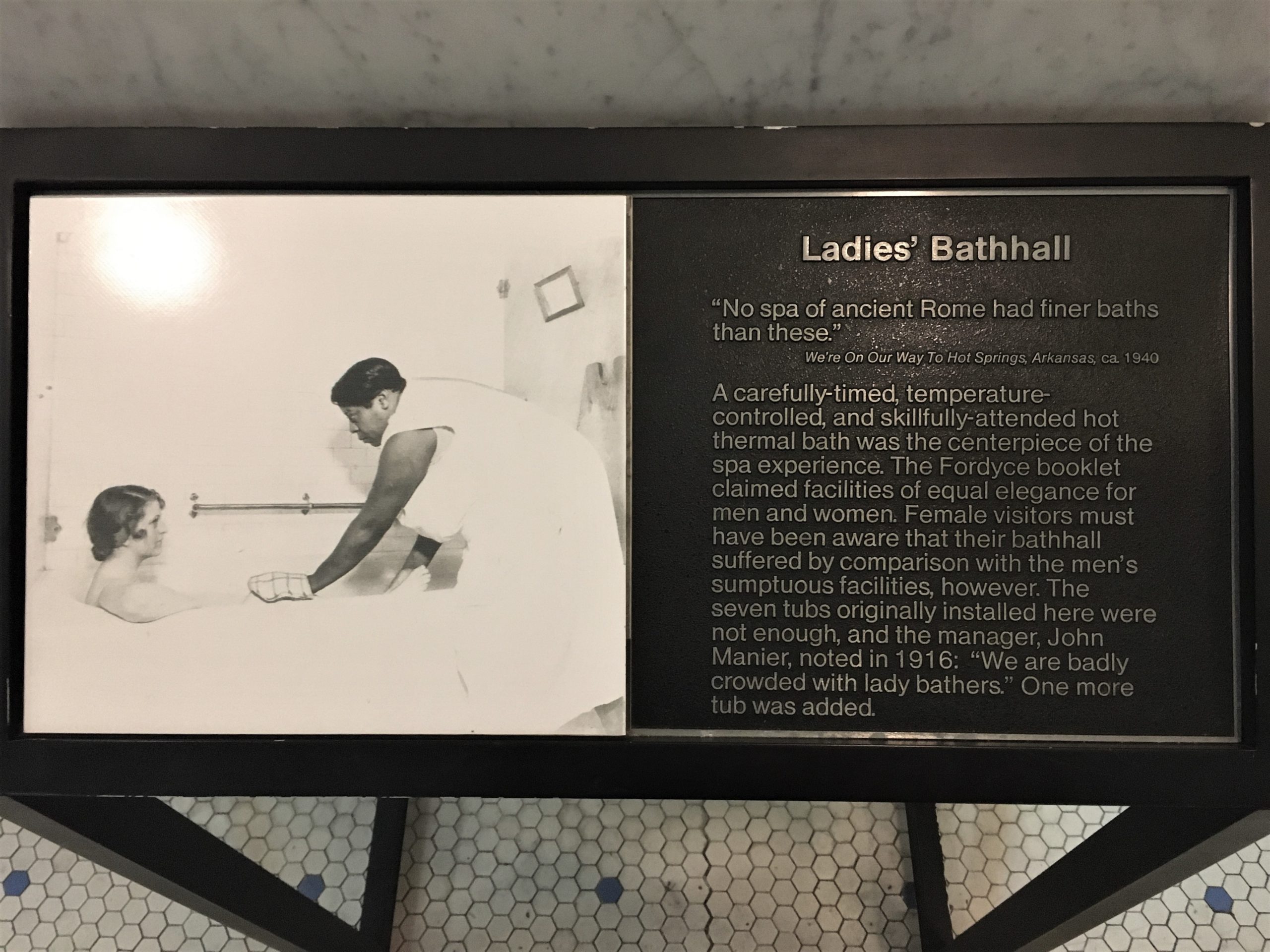
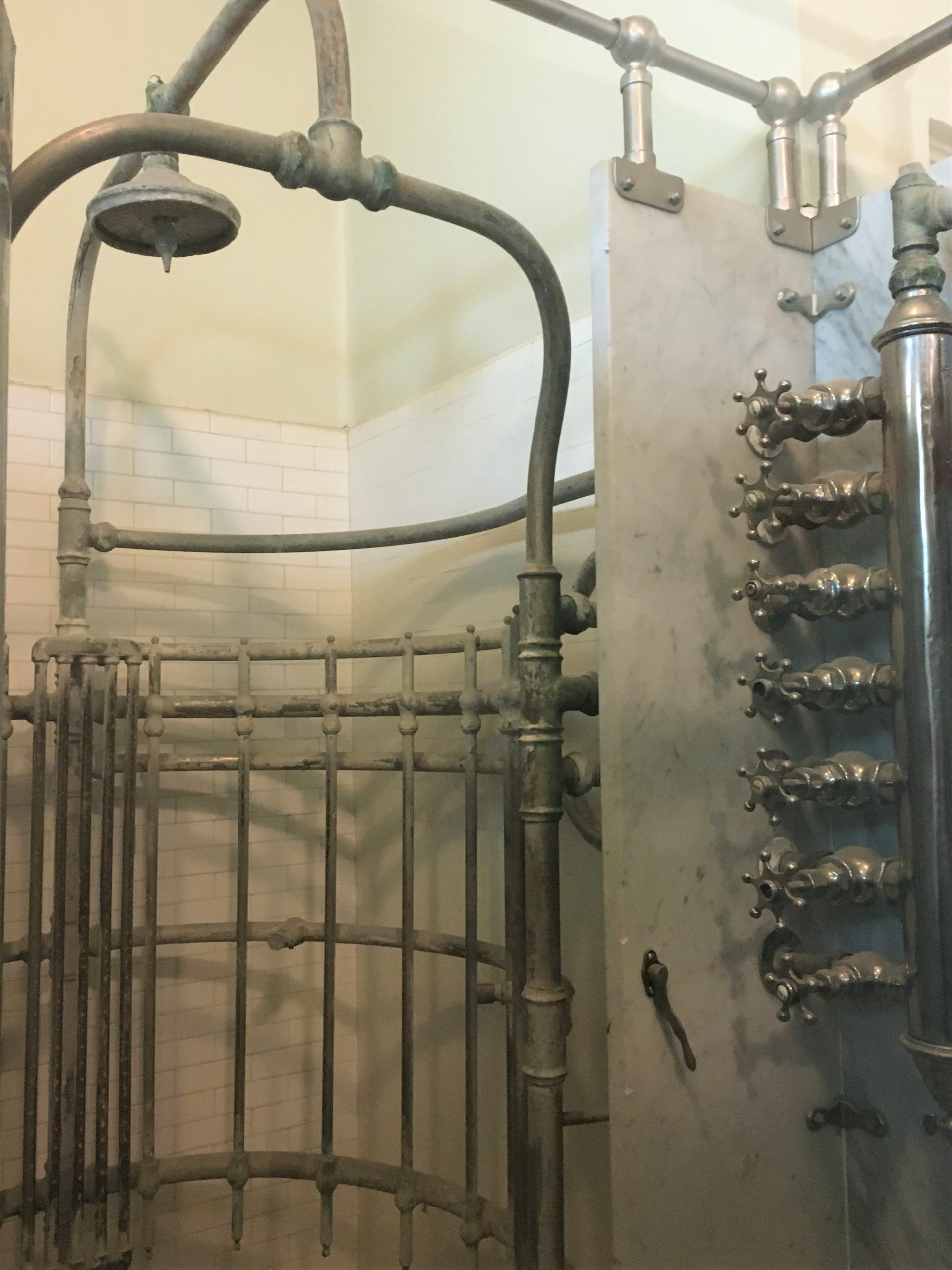

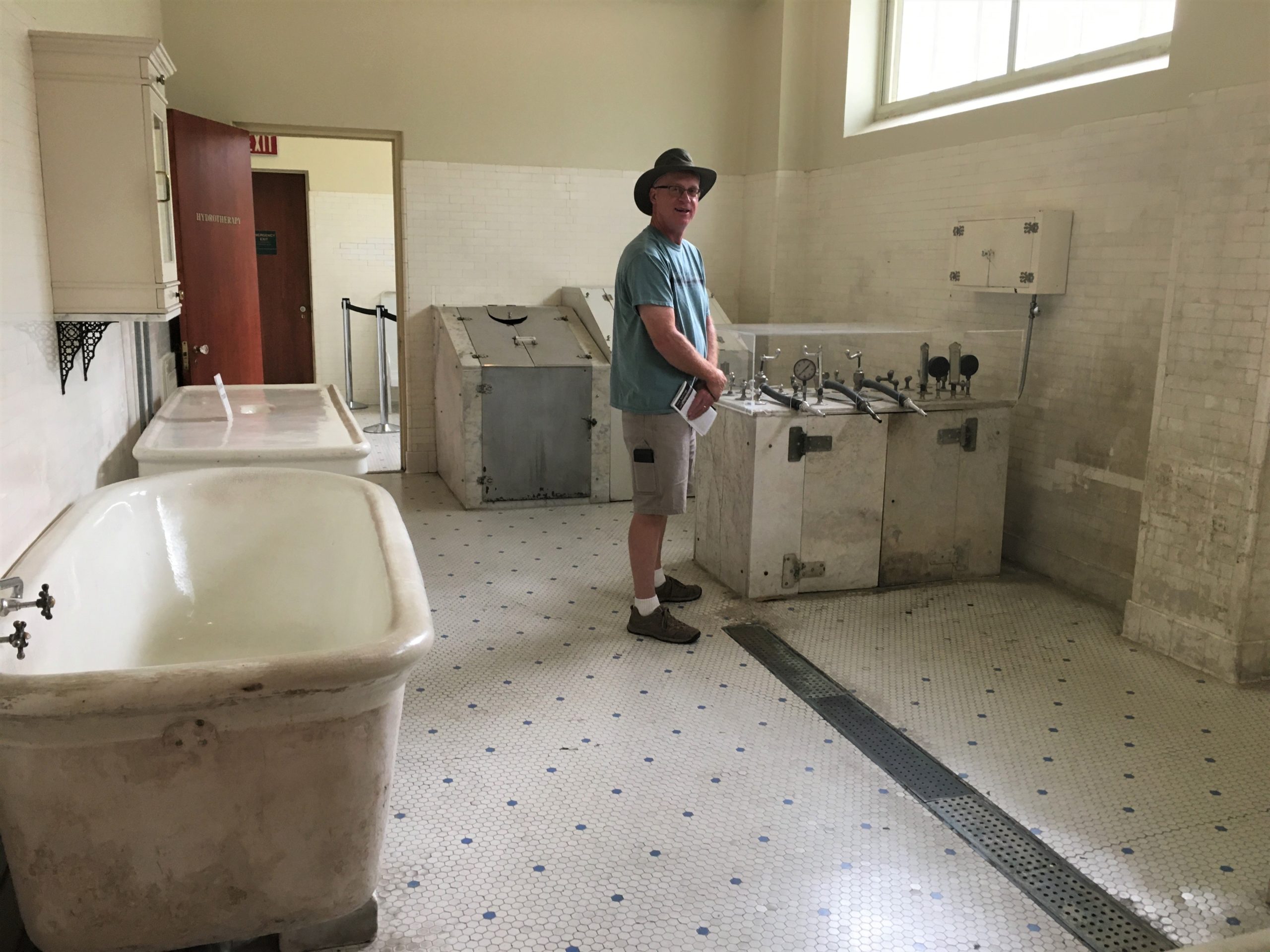

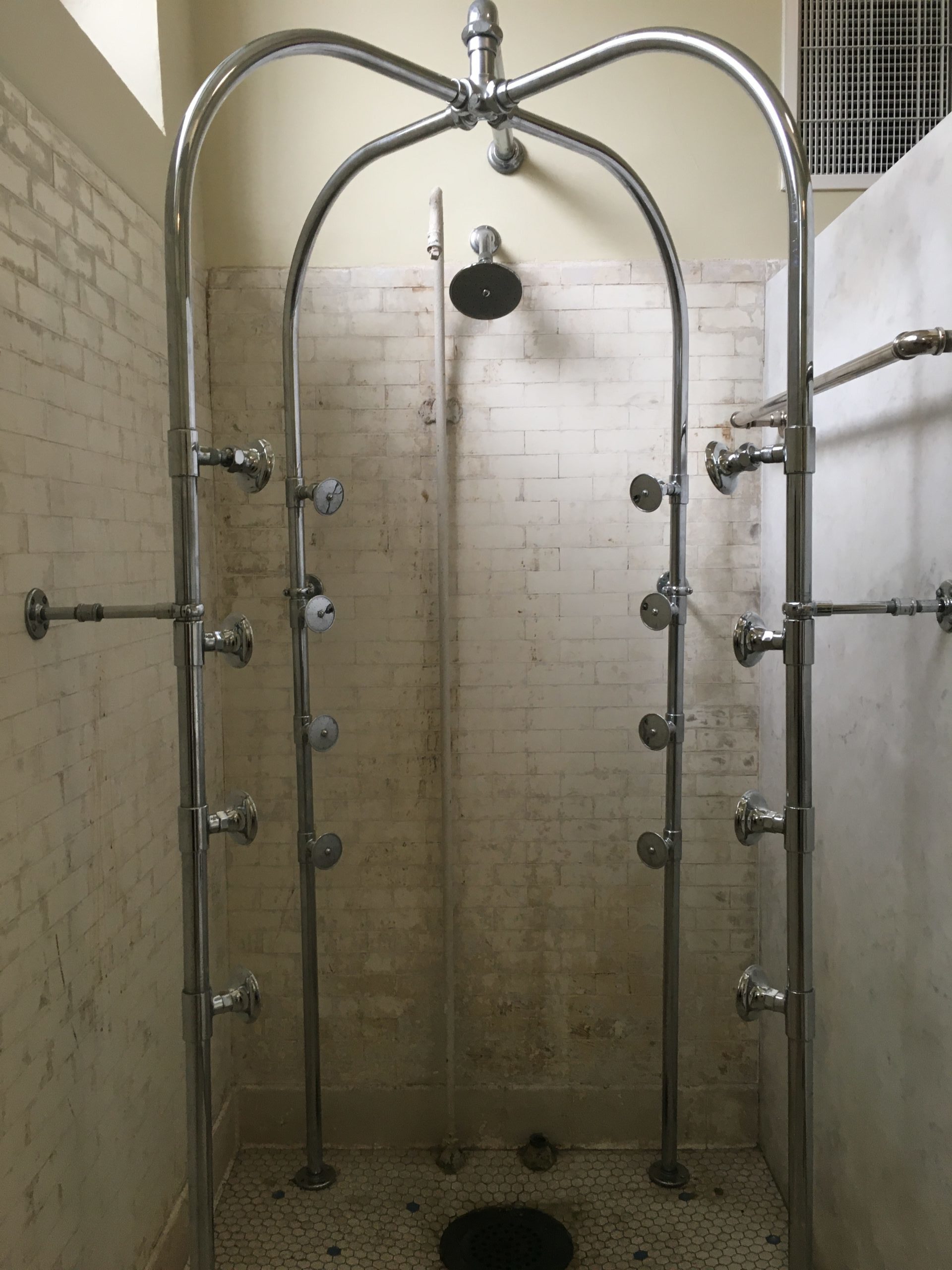
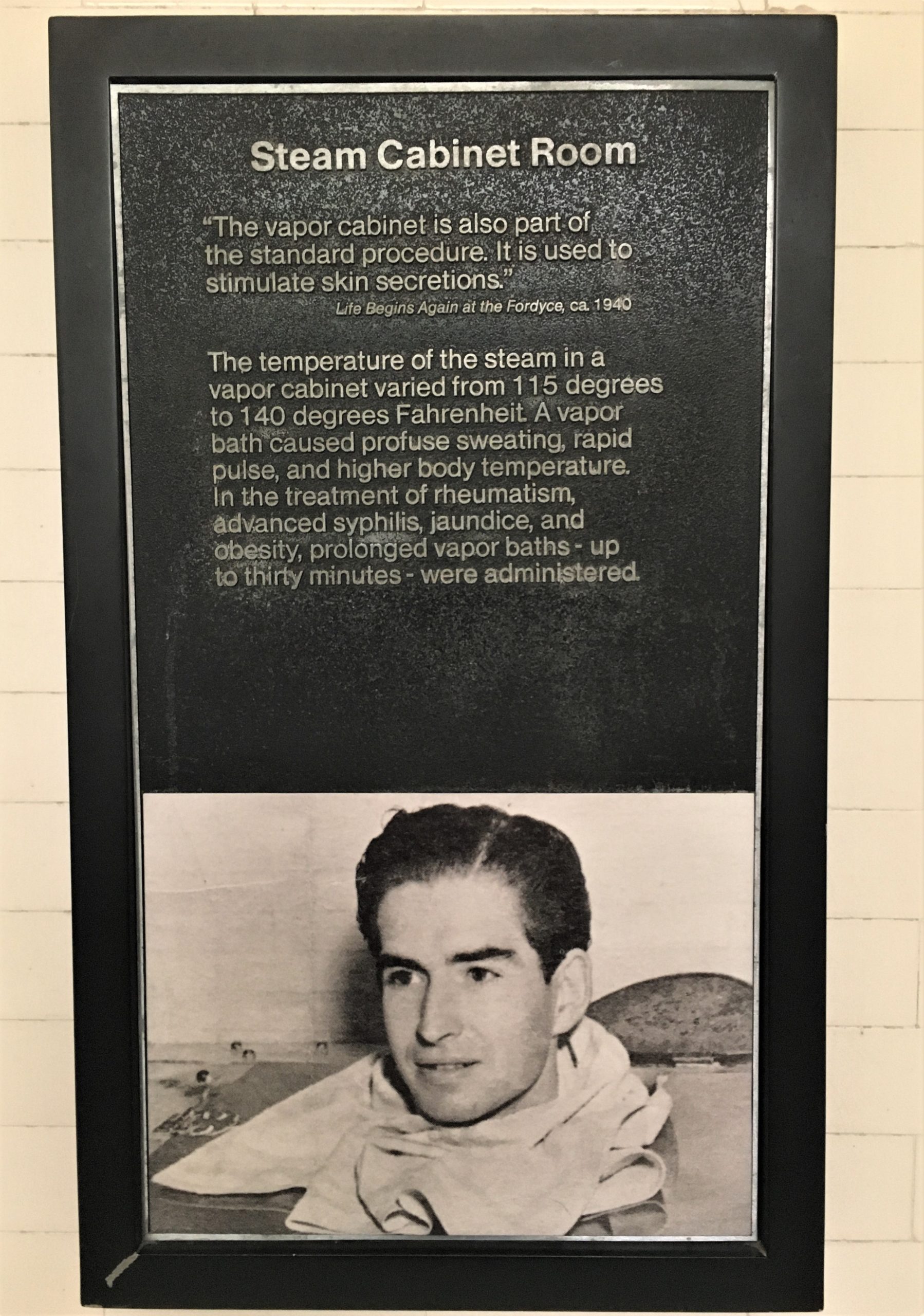
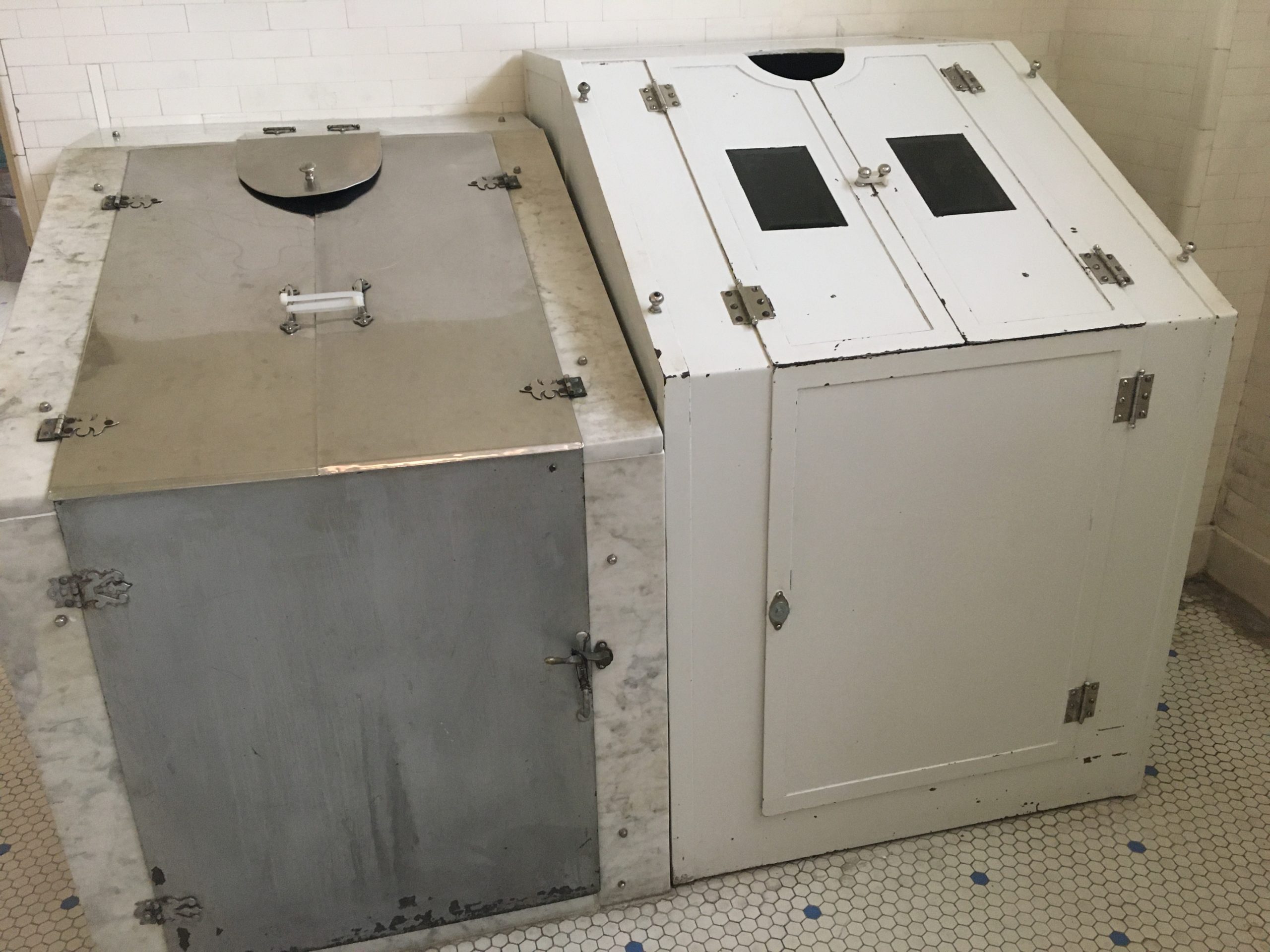
But the white one was wood and sported windows.
We weren’t sure why until we looked inside!

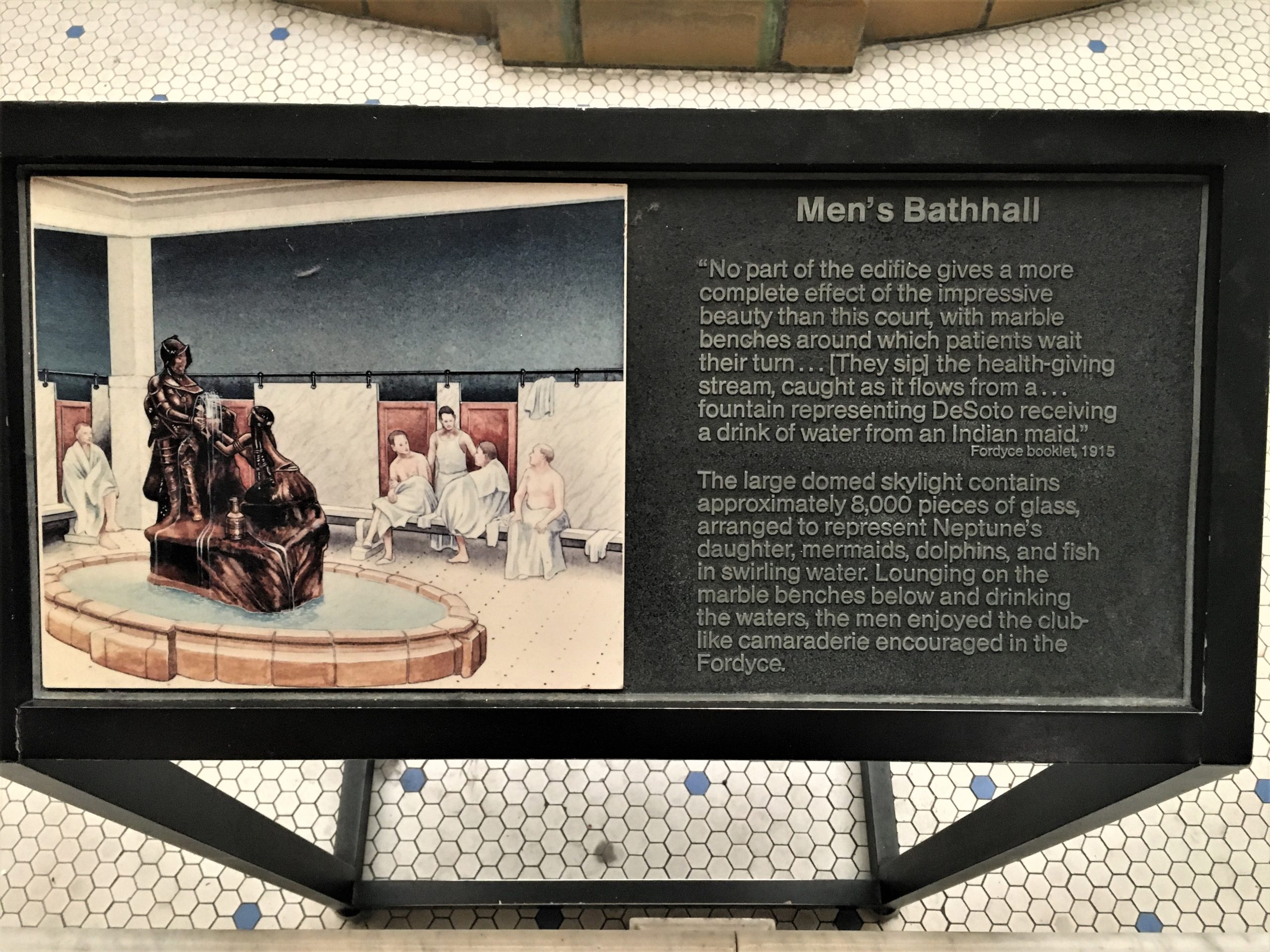
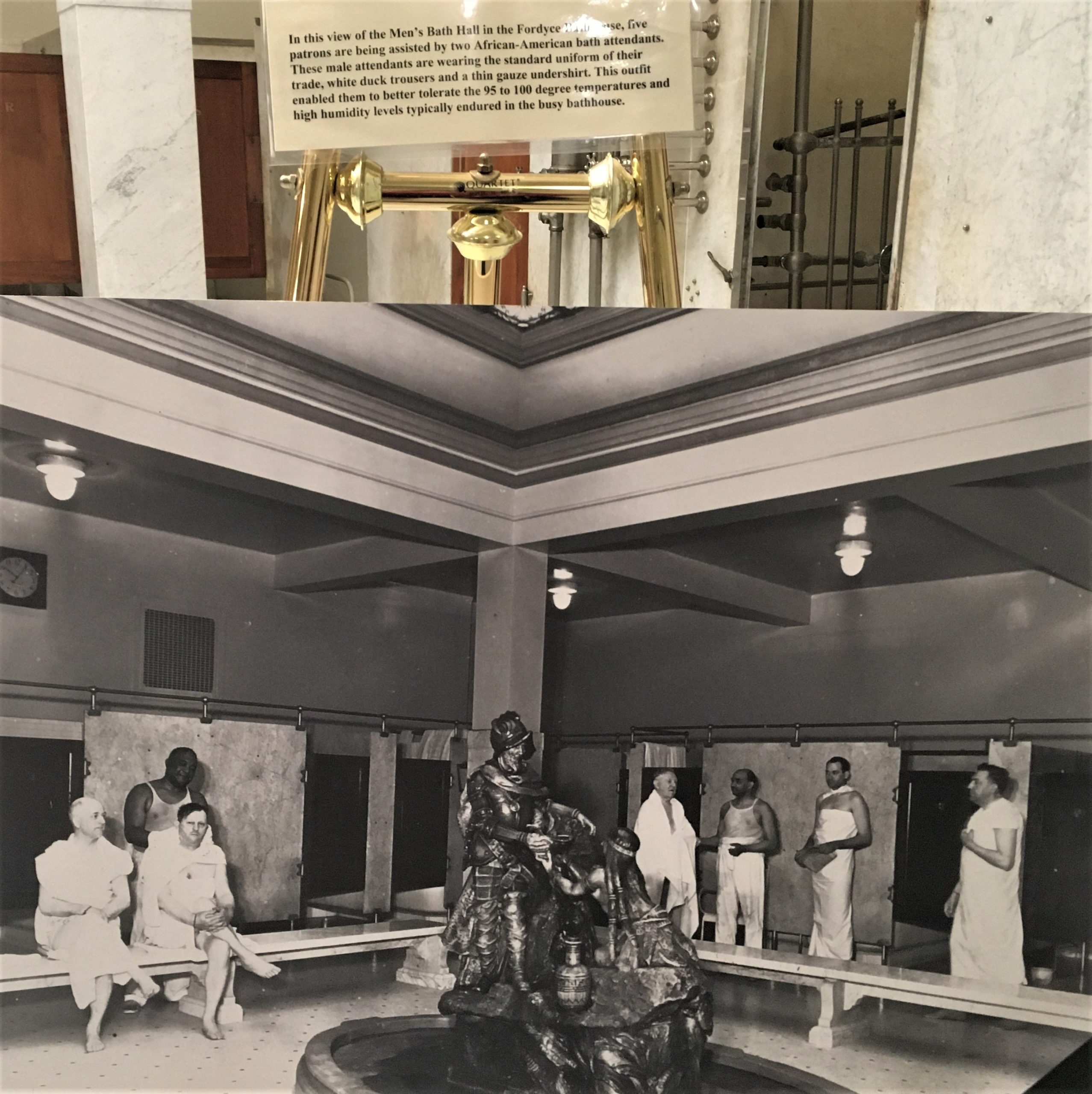




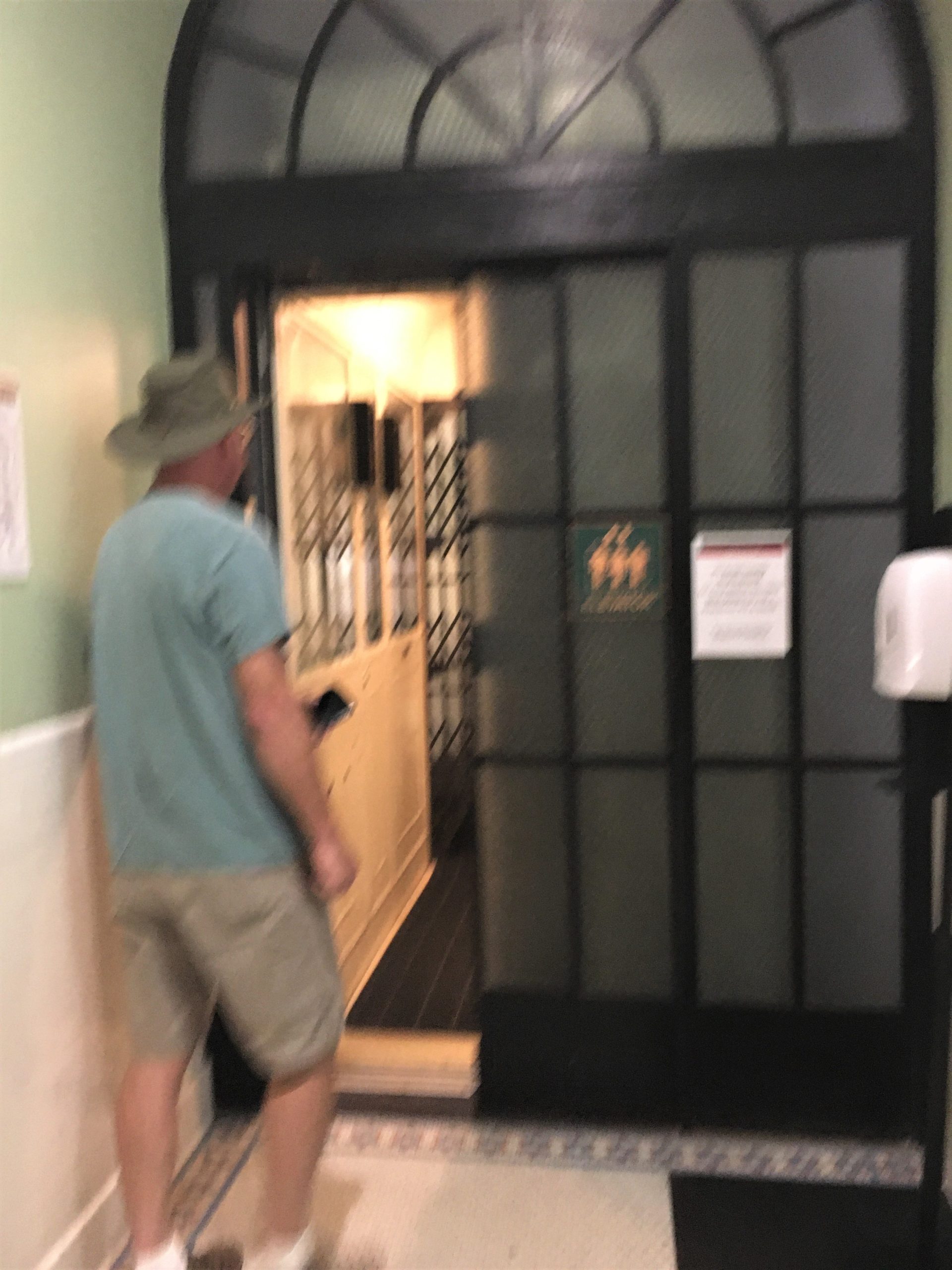
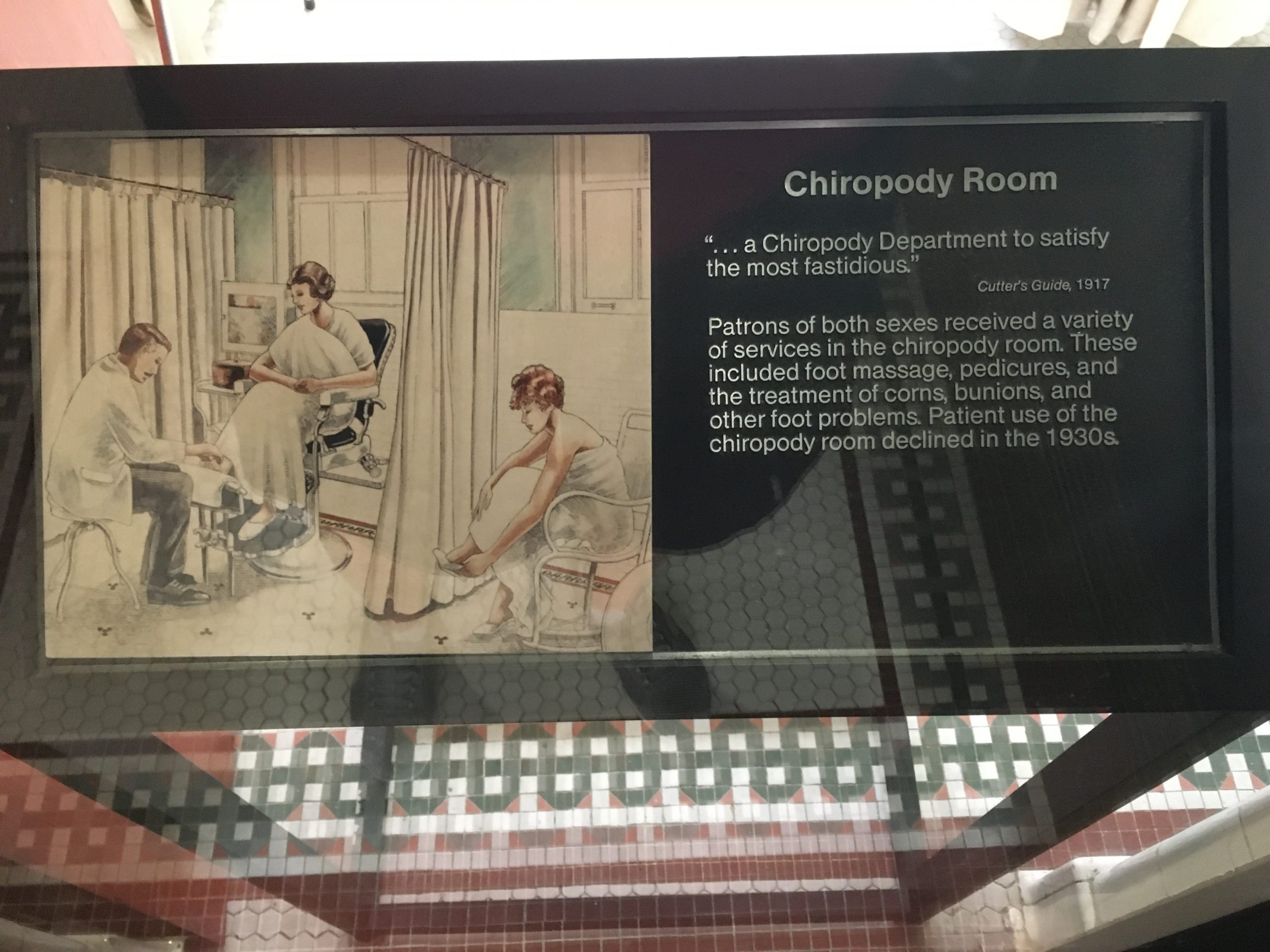
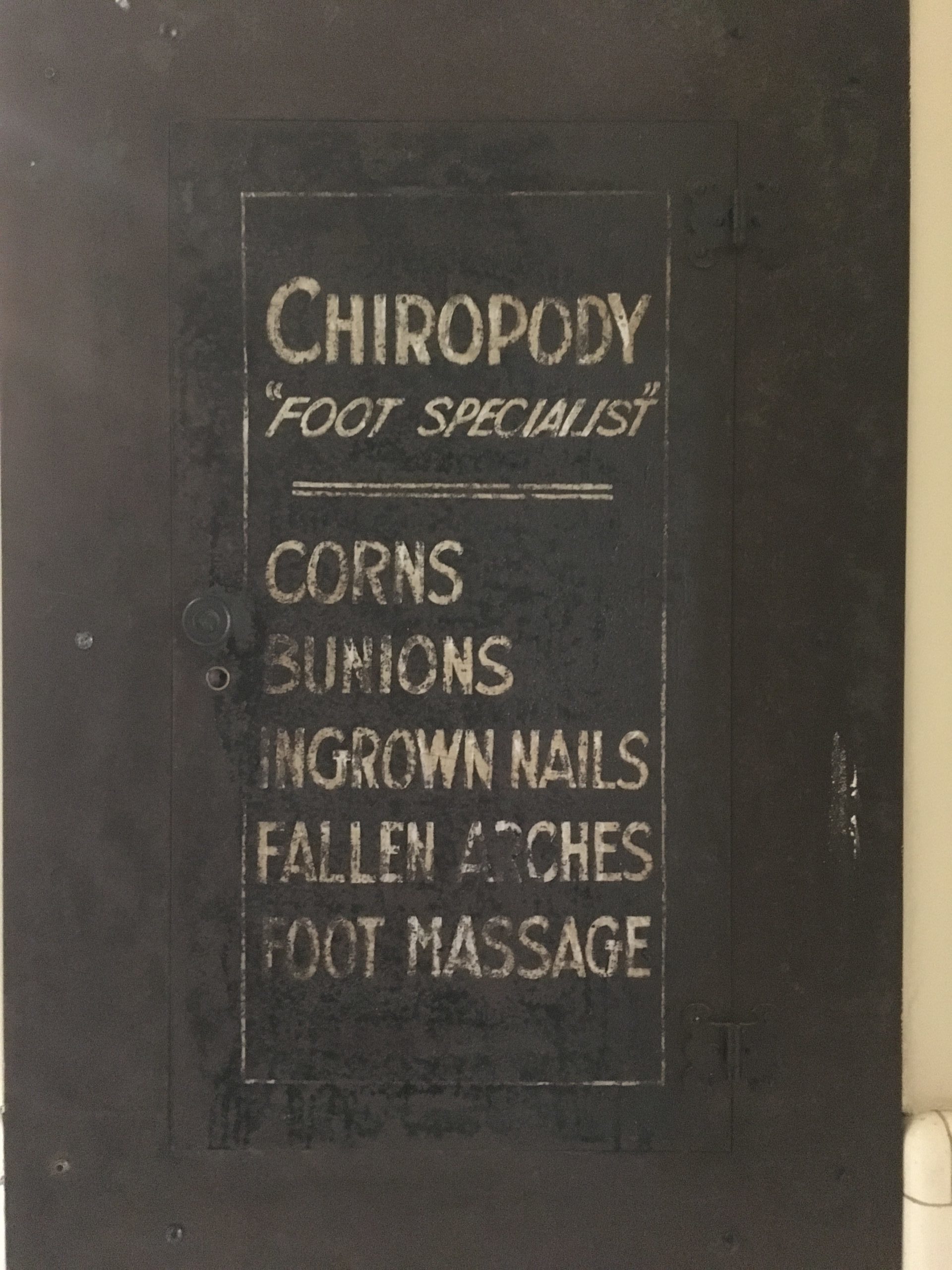
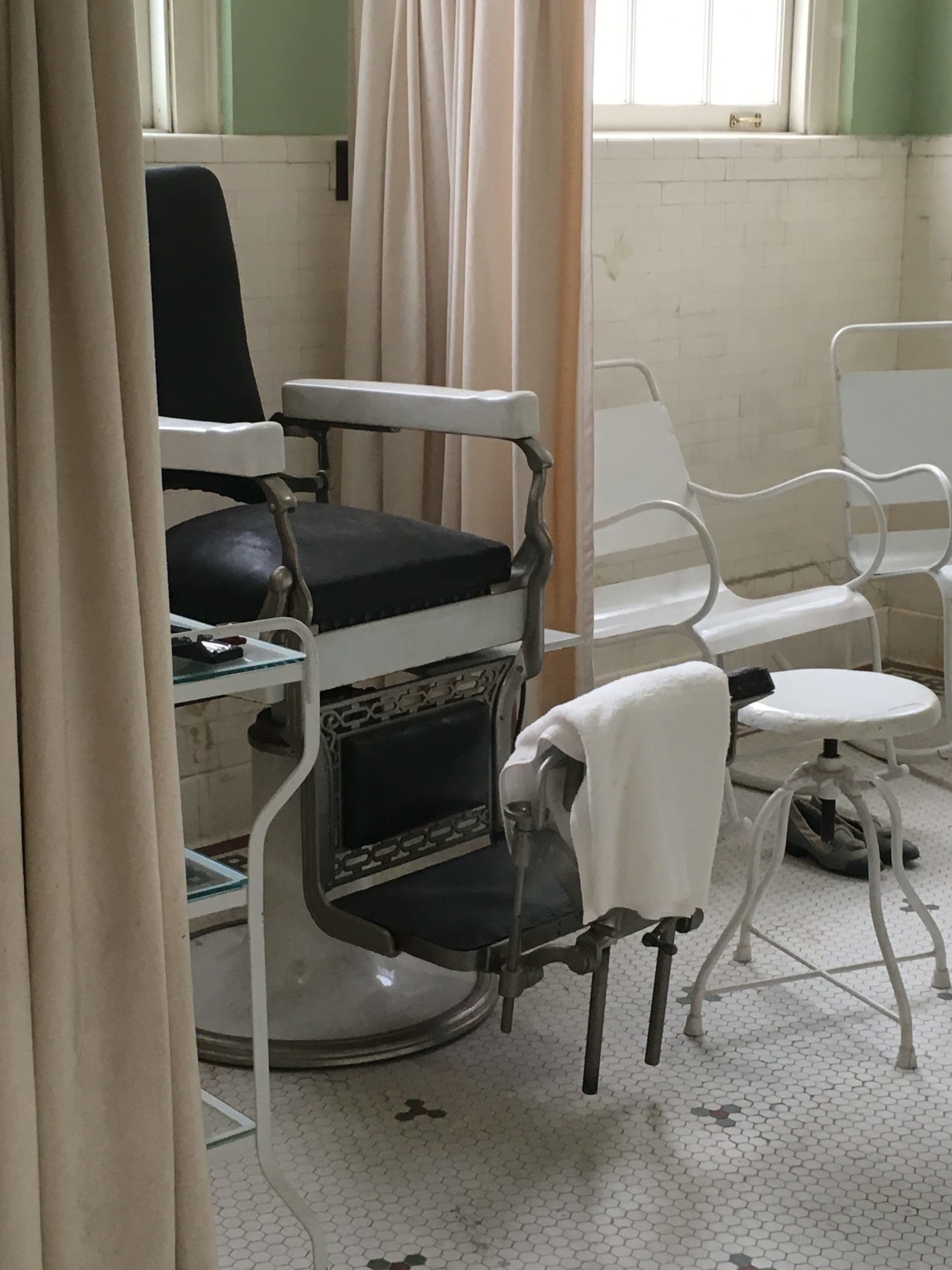


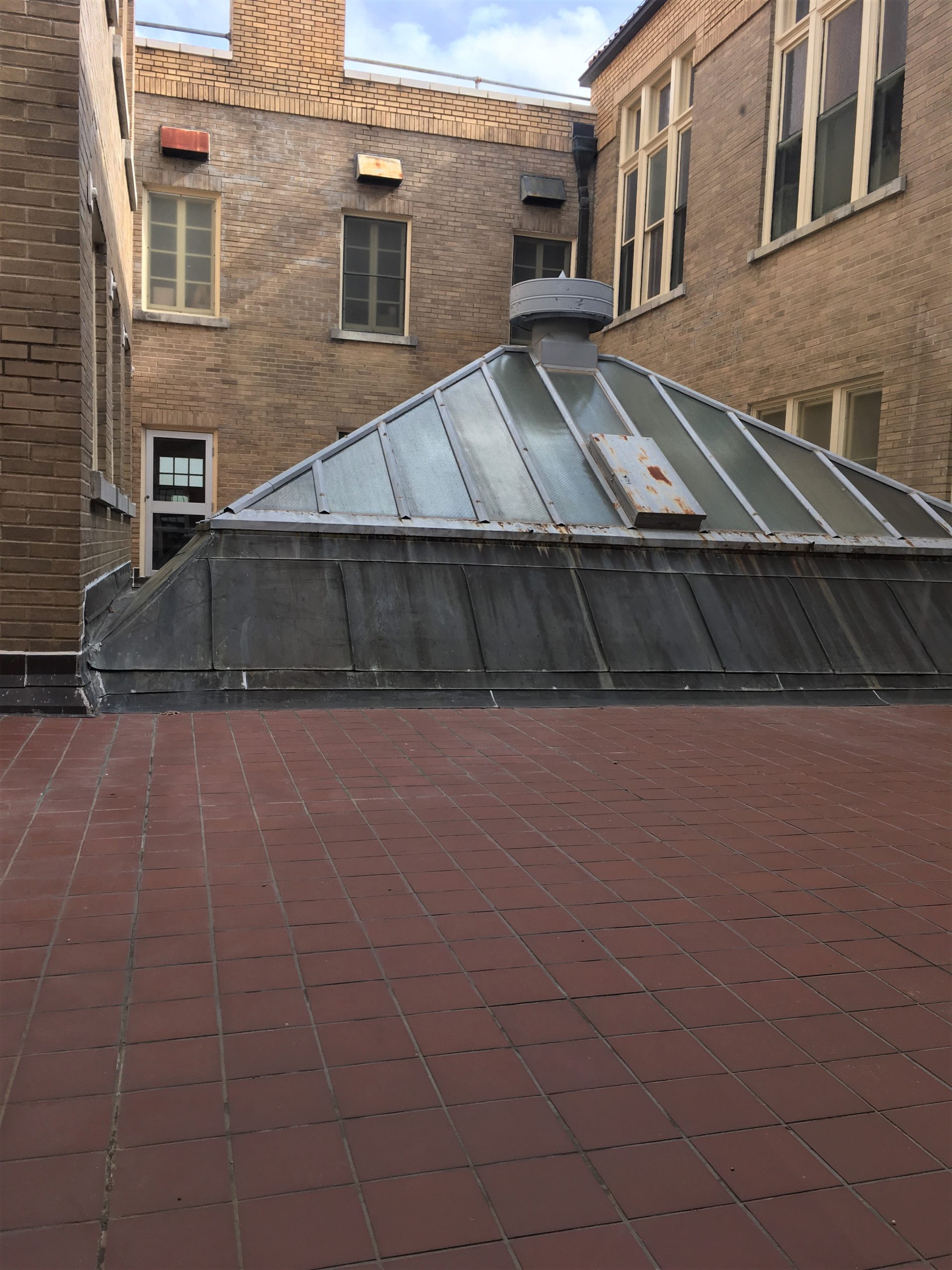



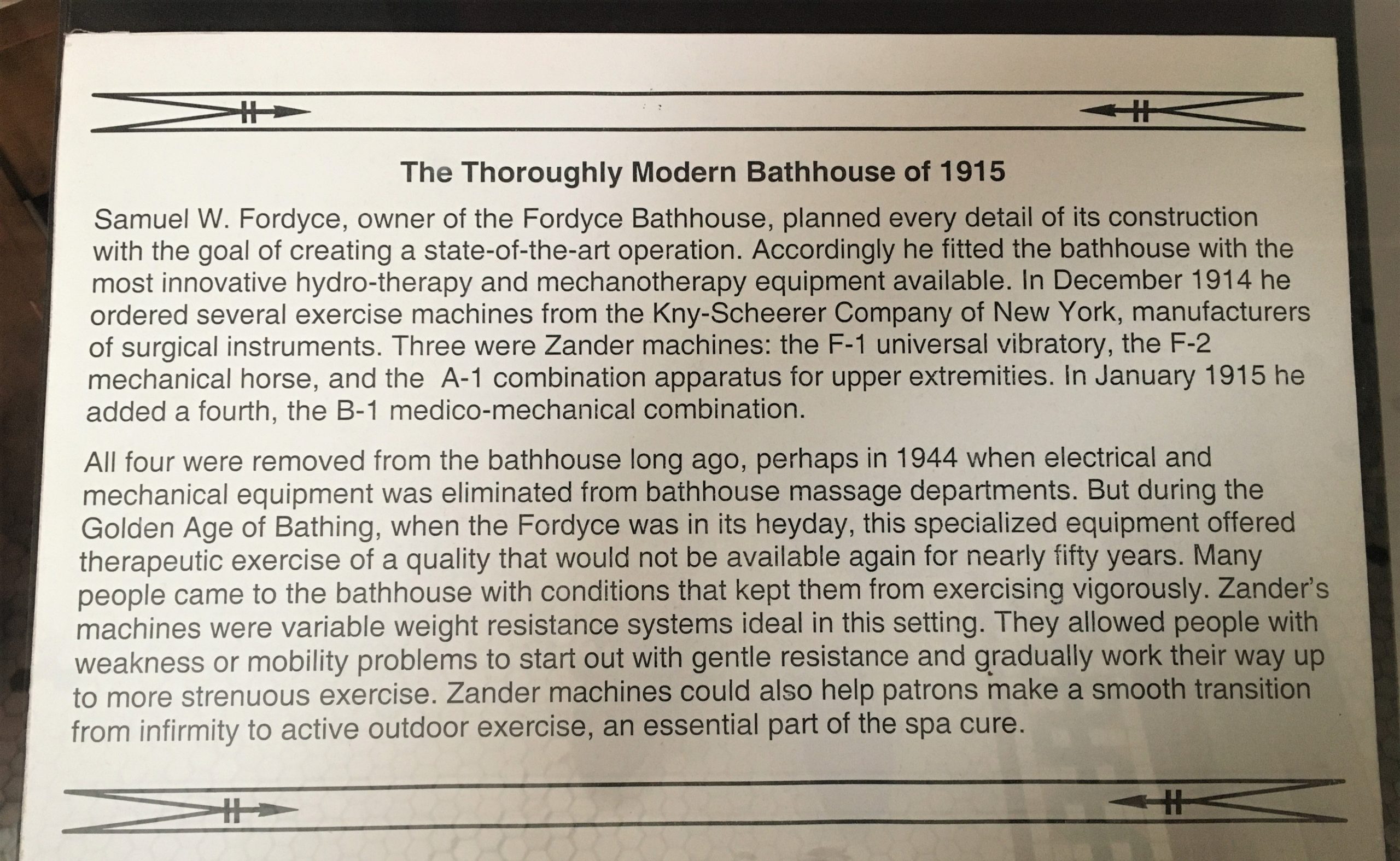
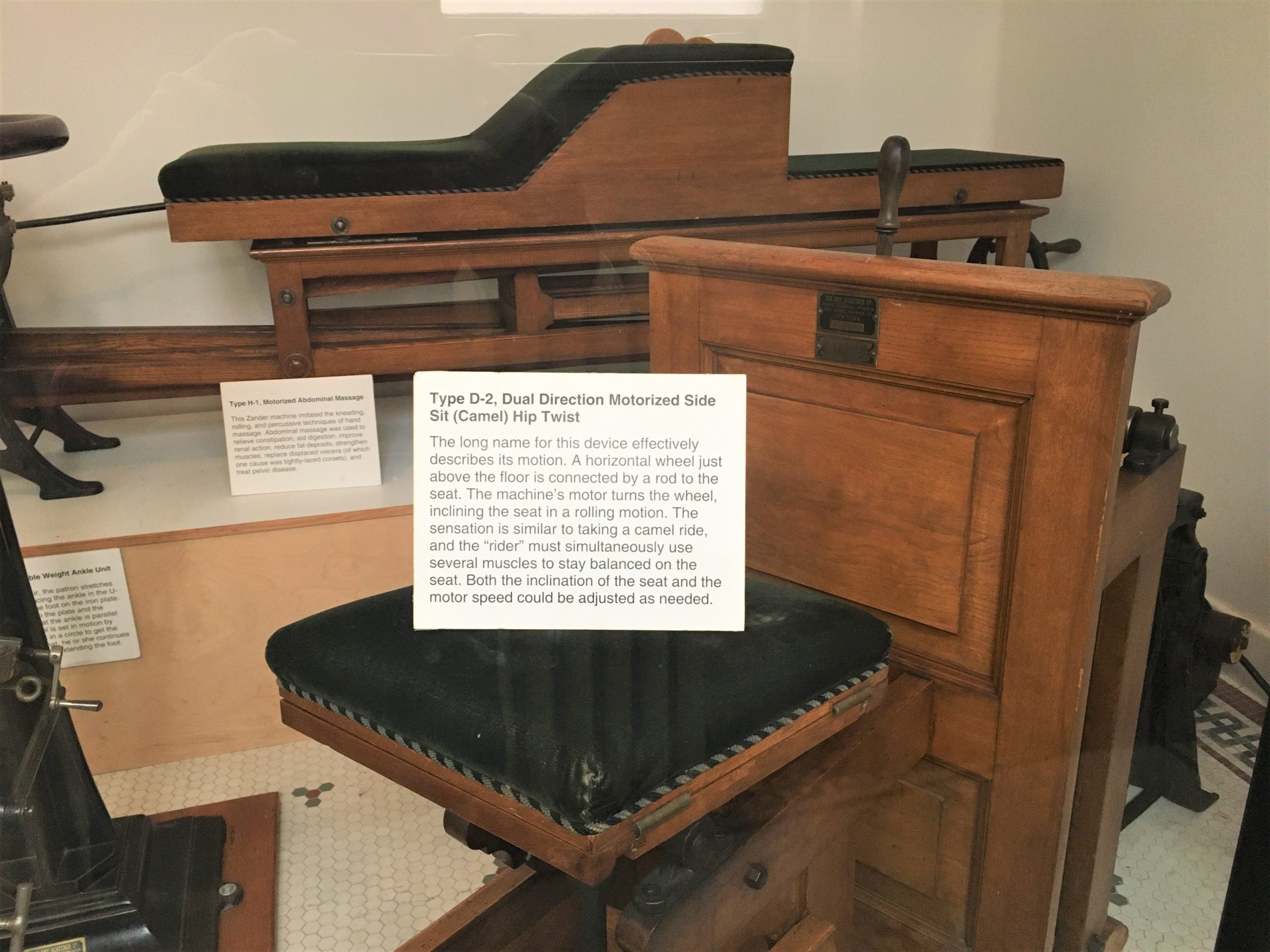
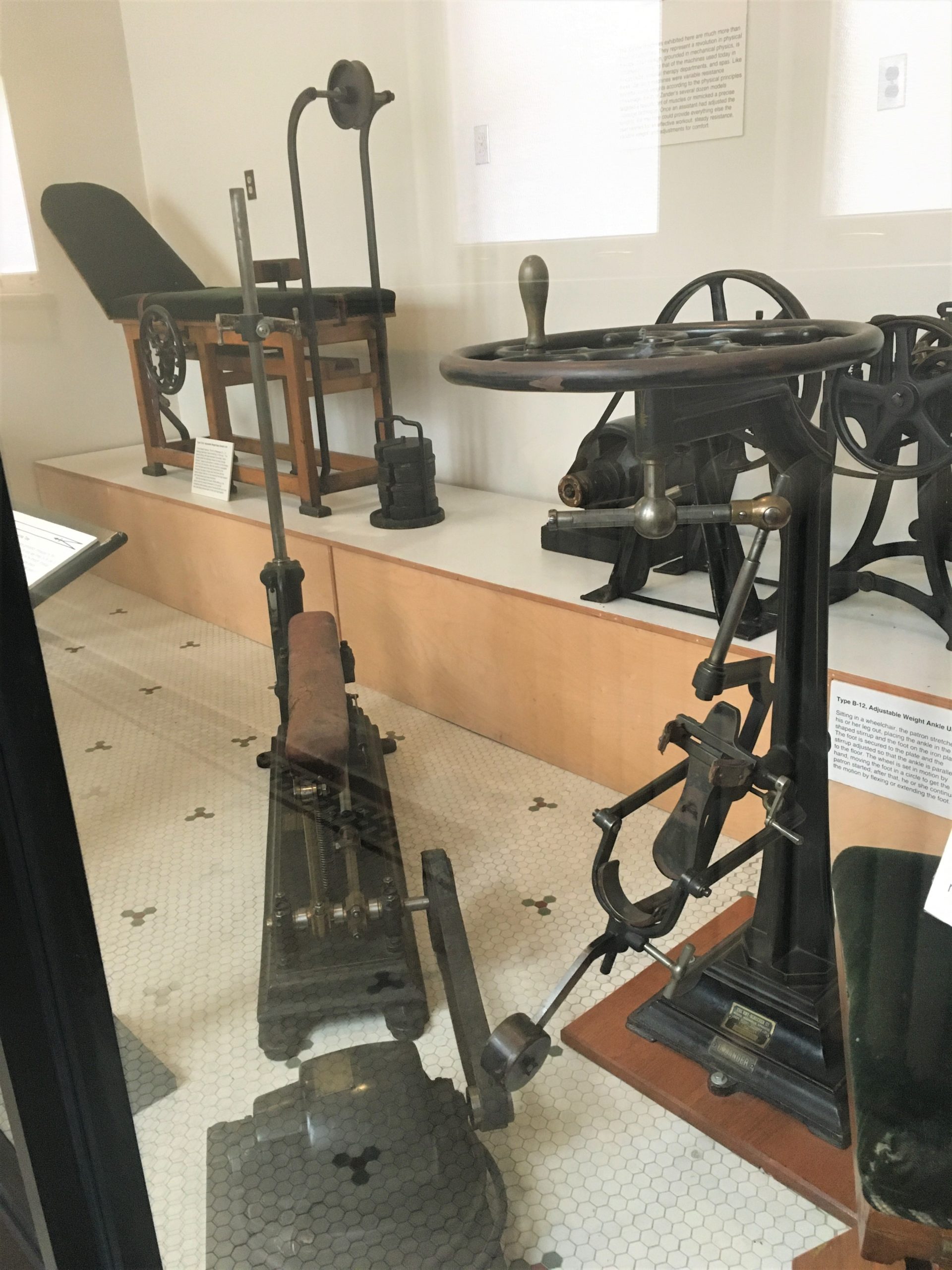

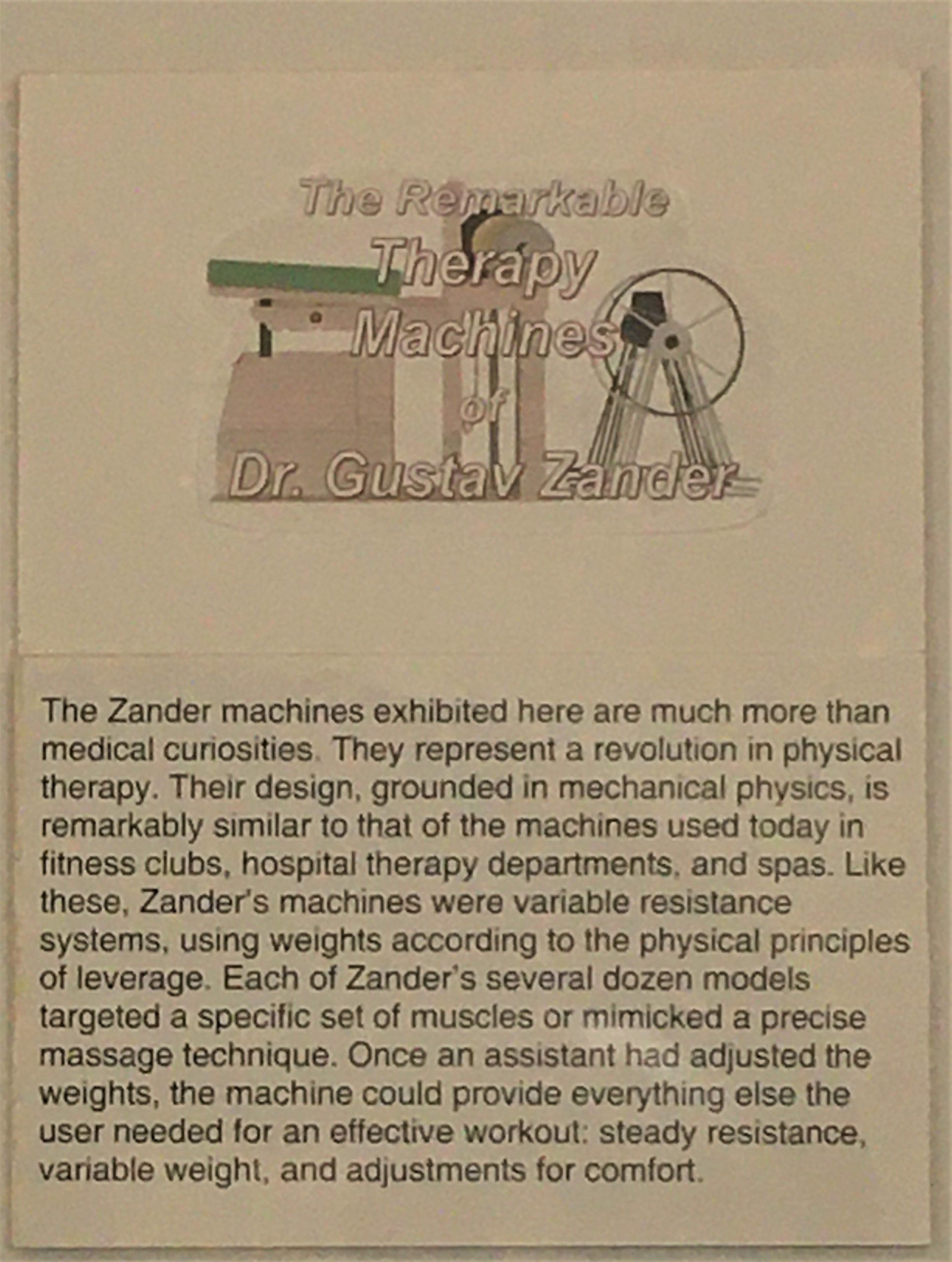
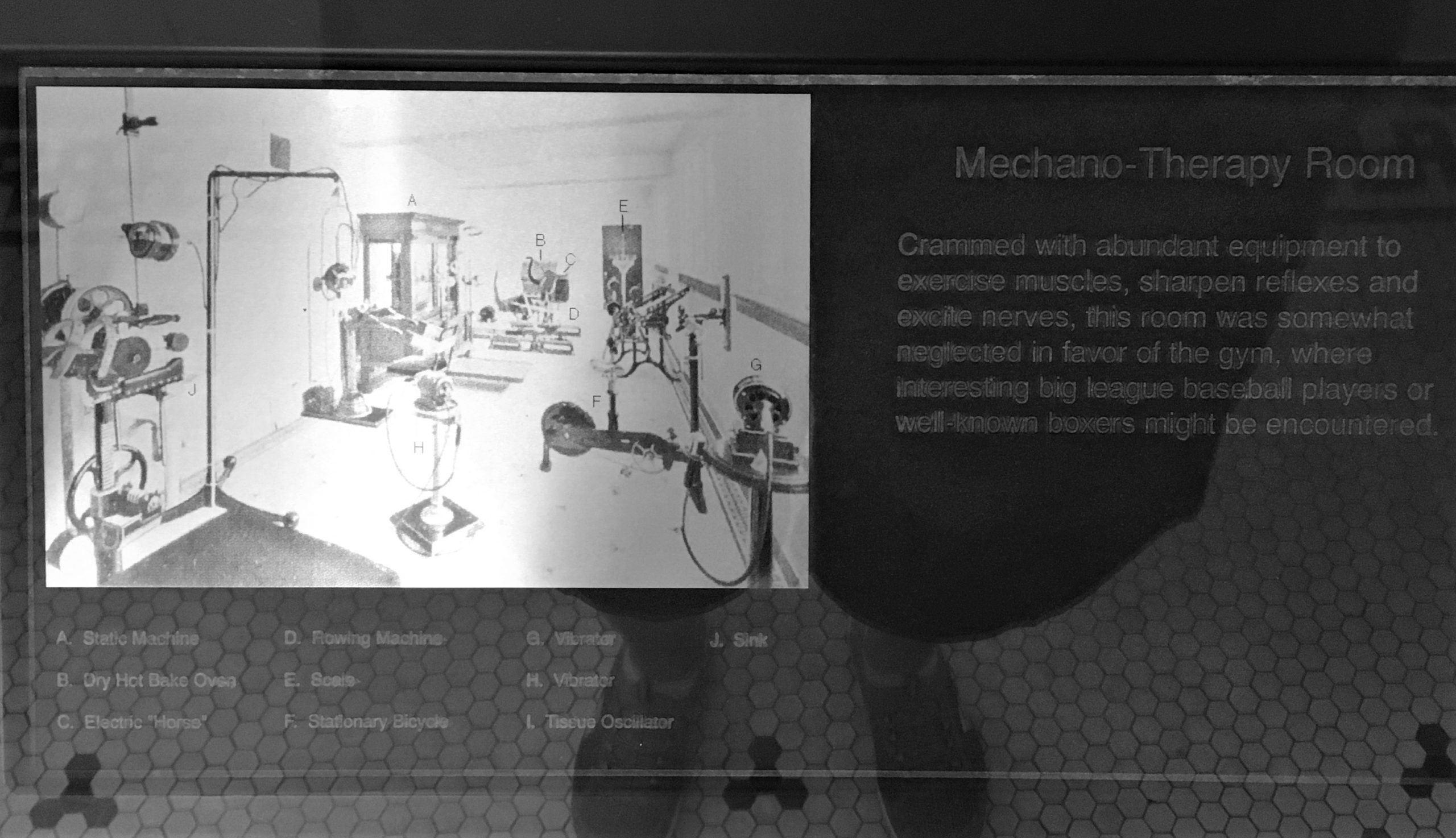

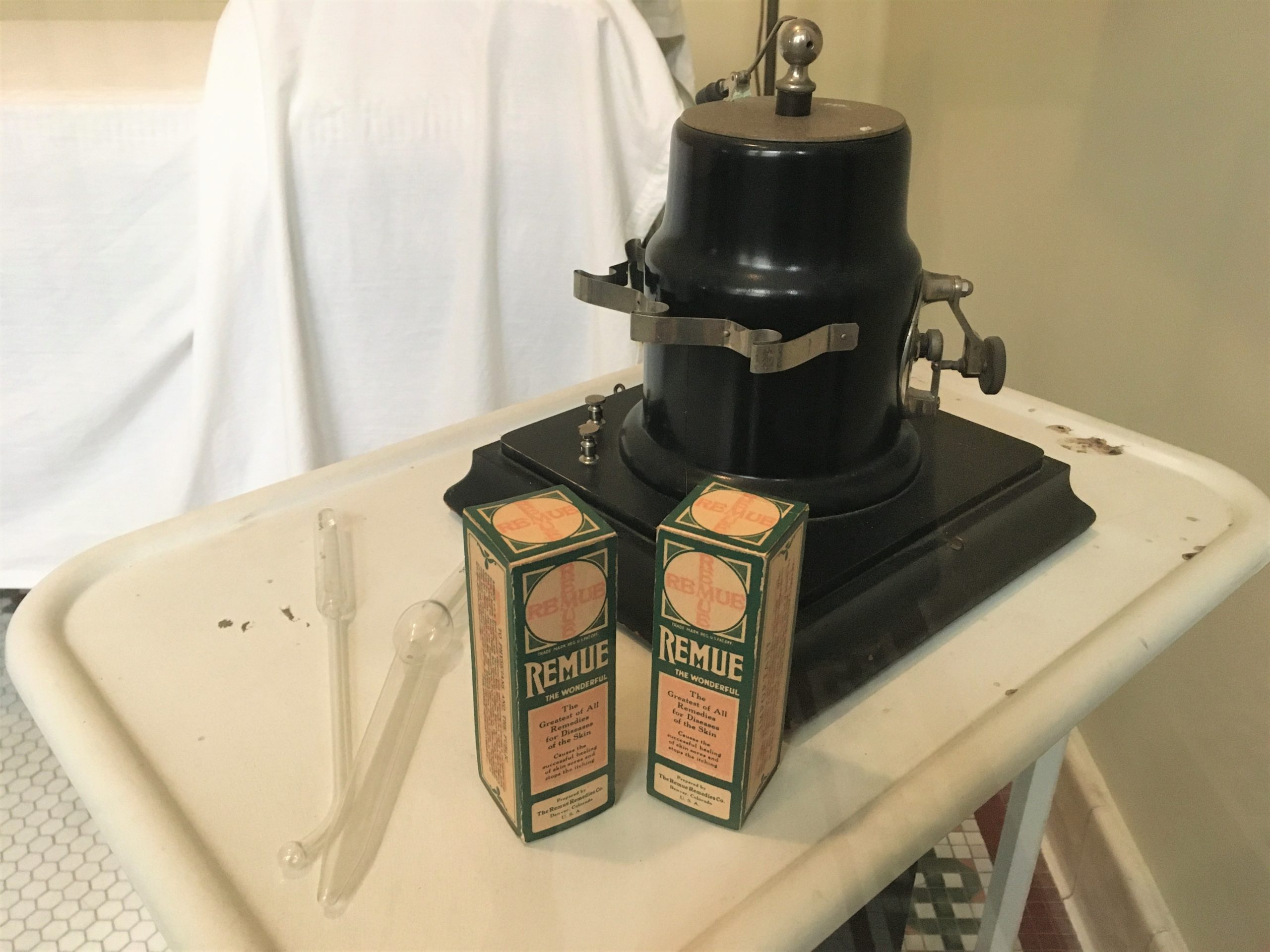
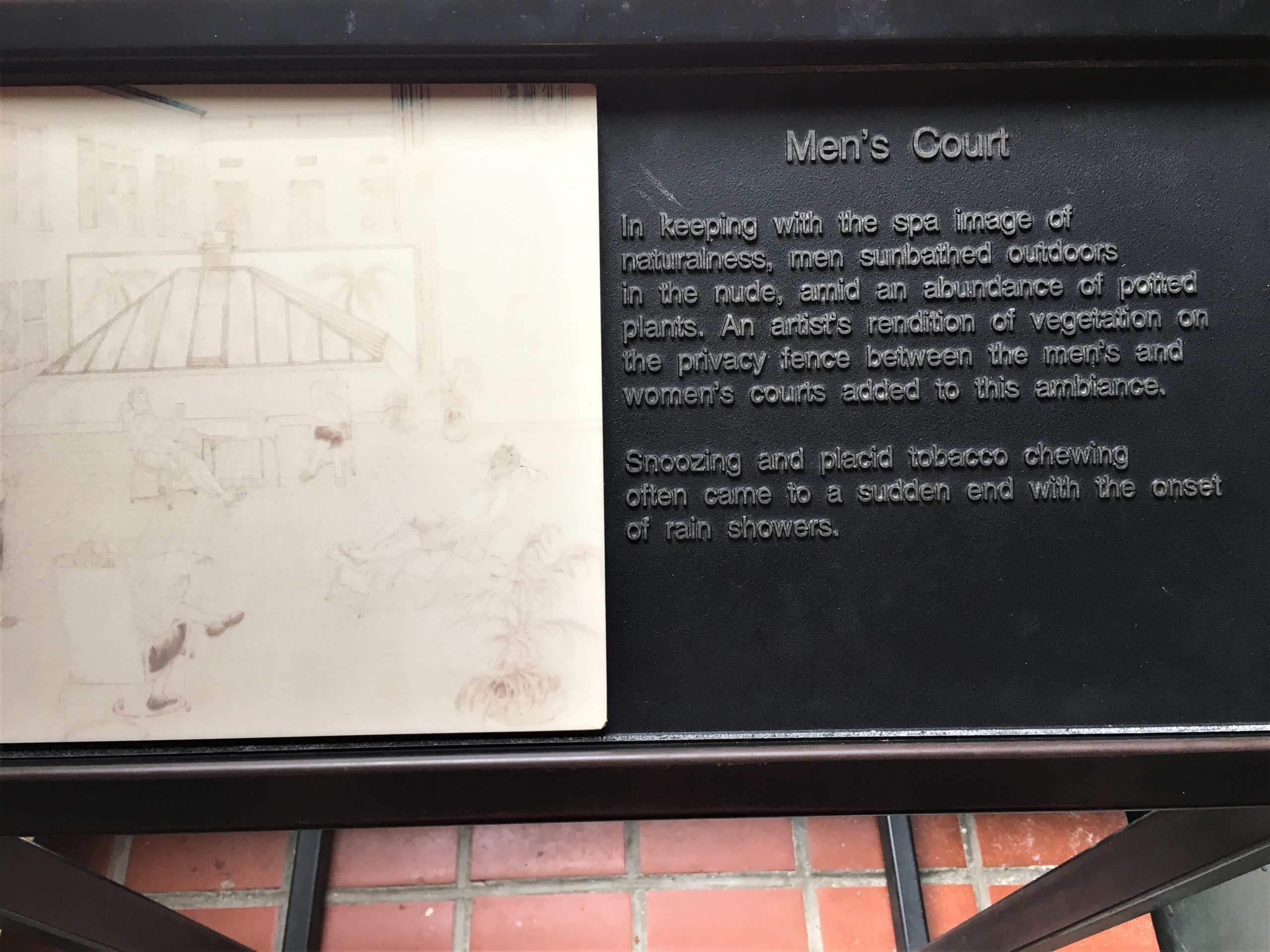




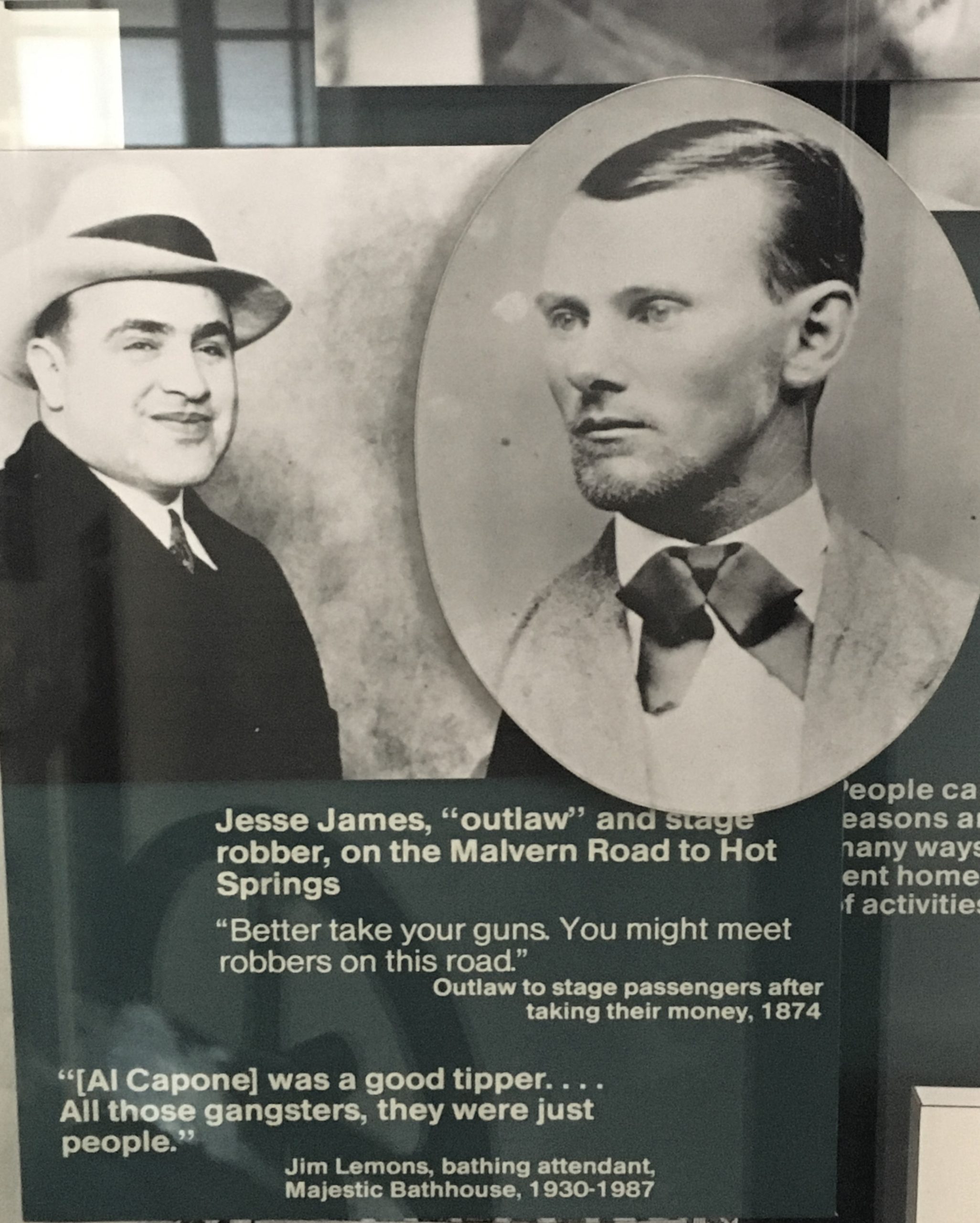
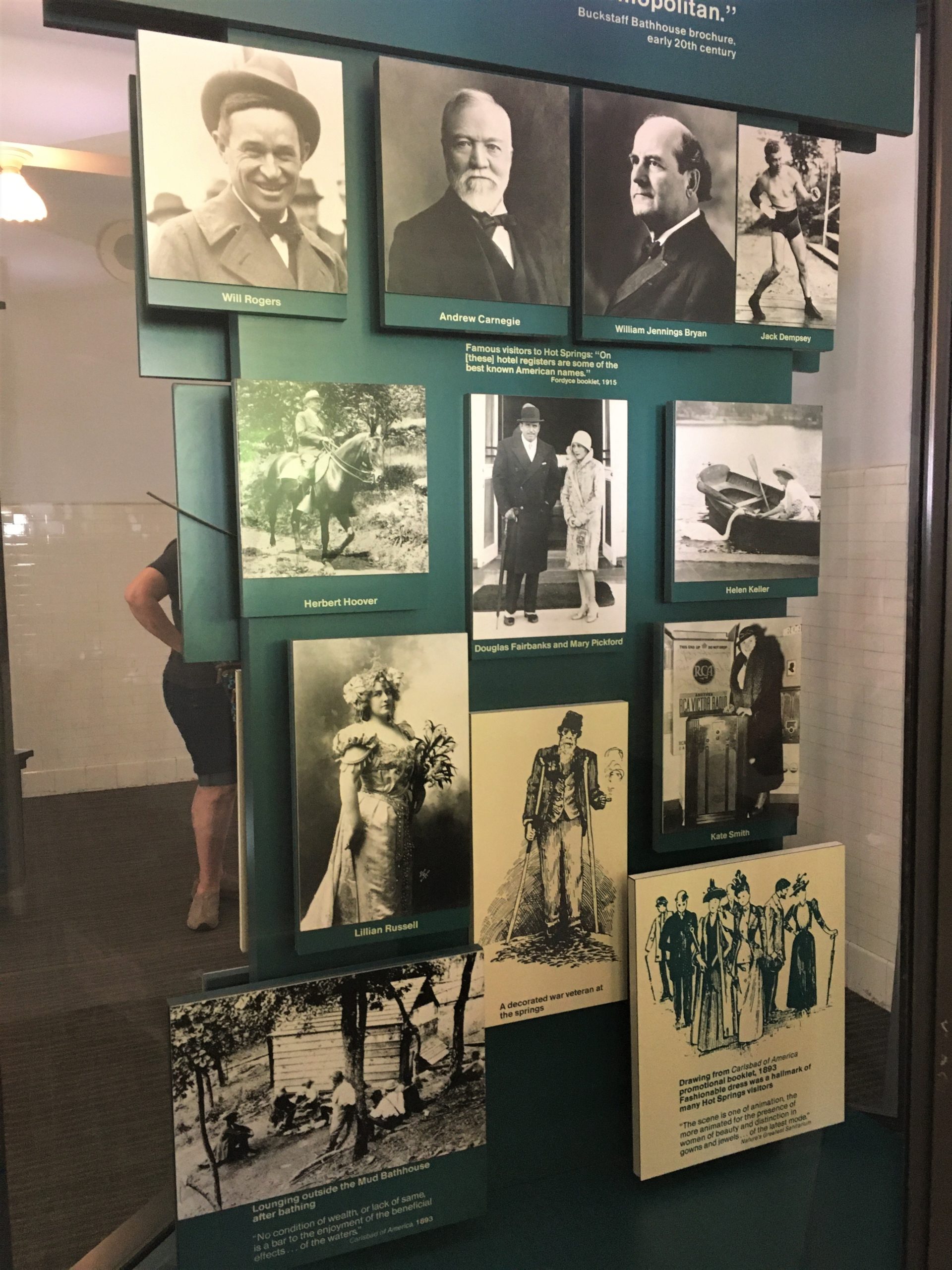
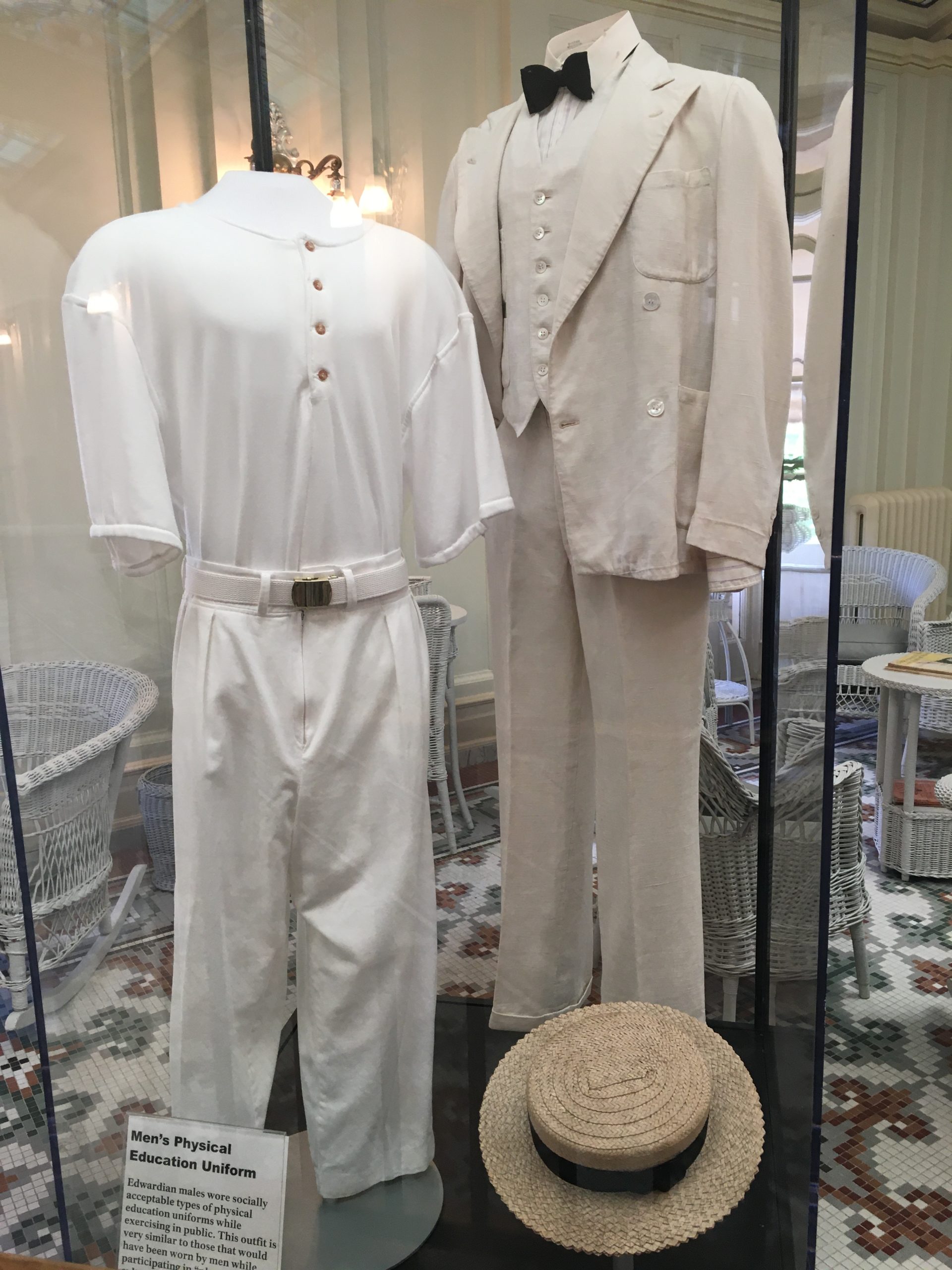
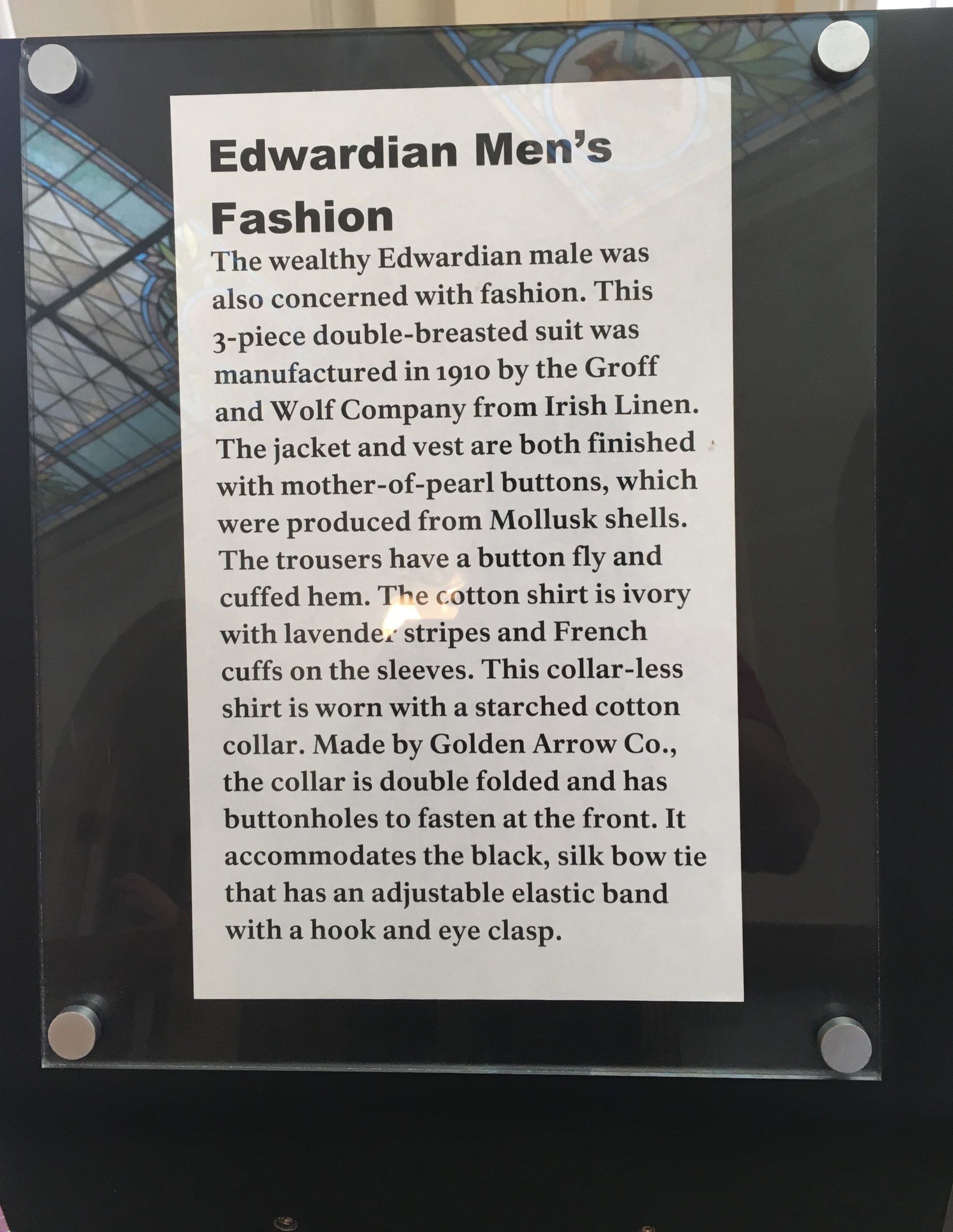

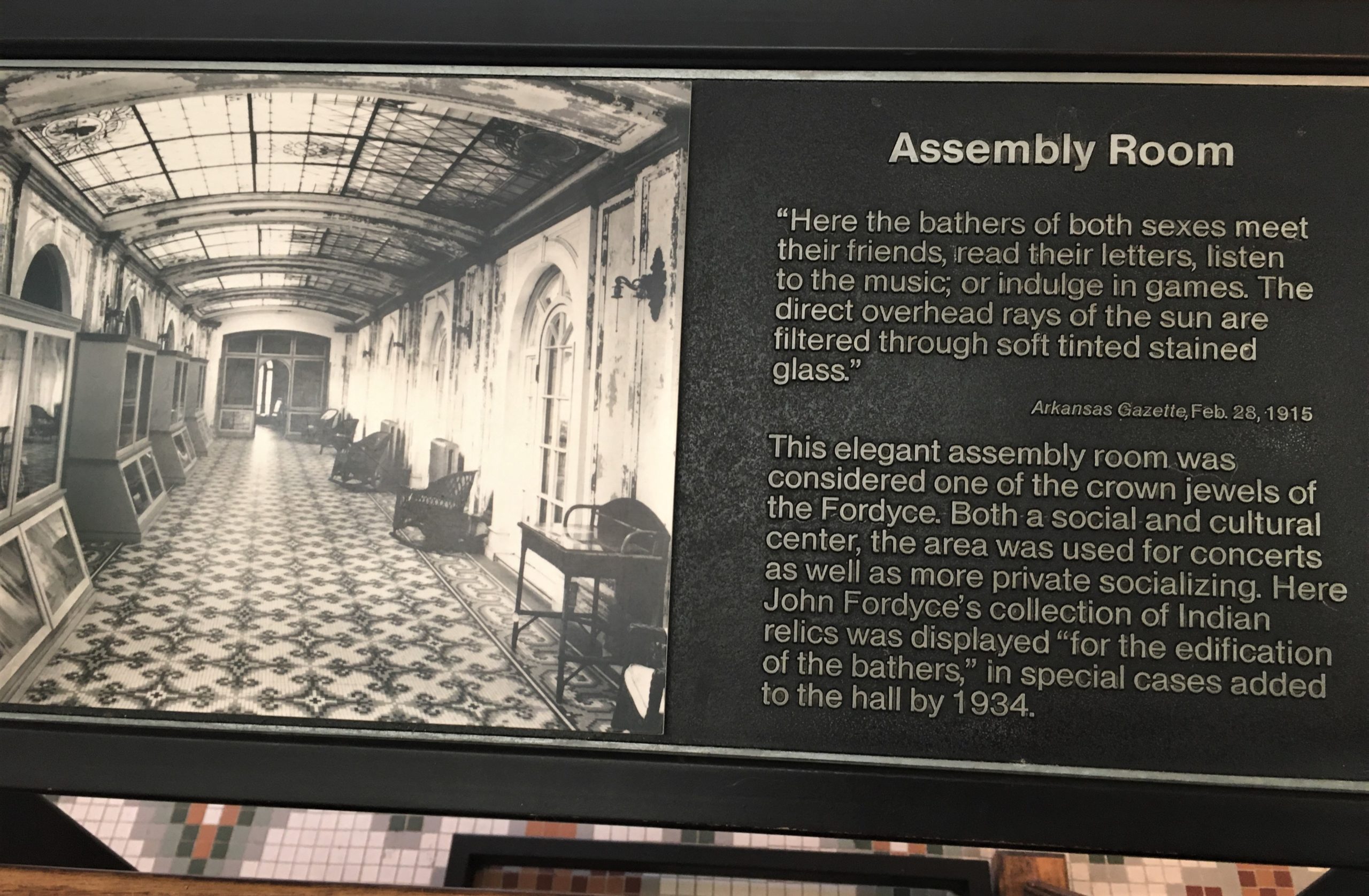


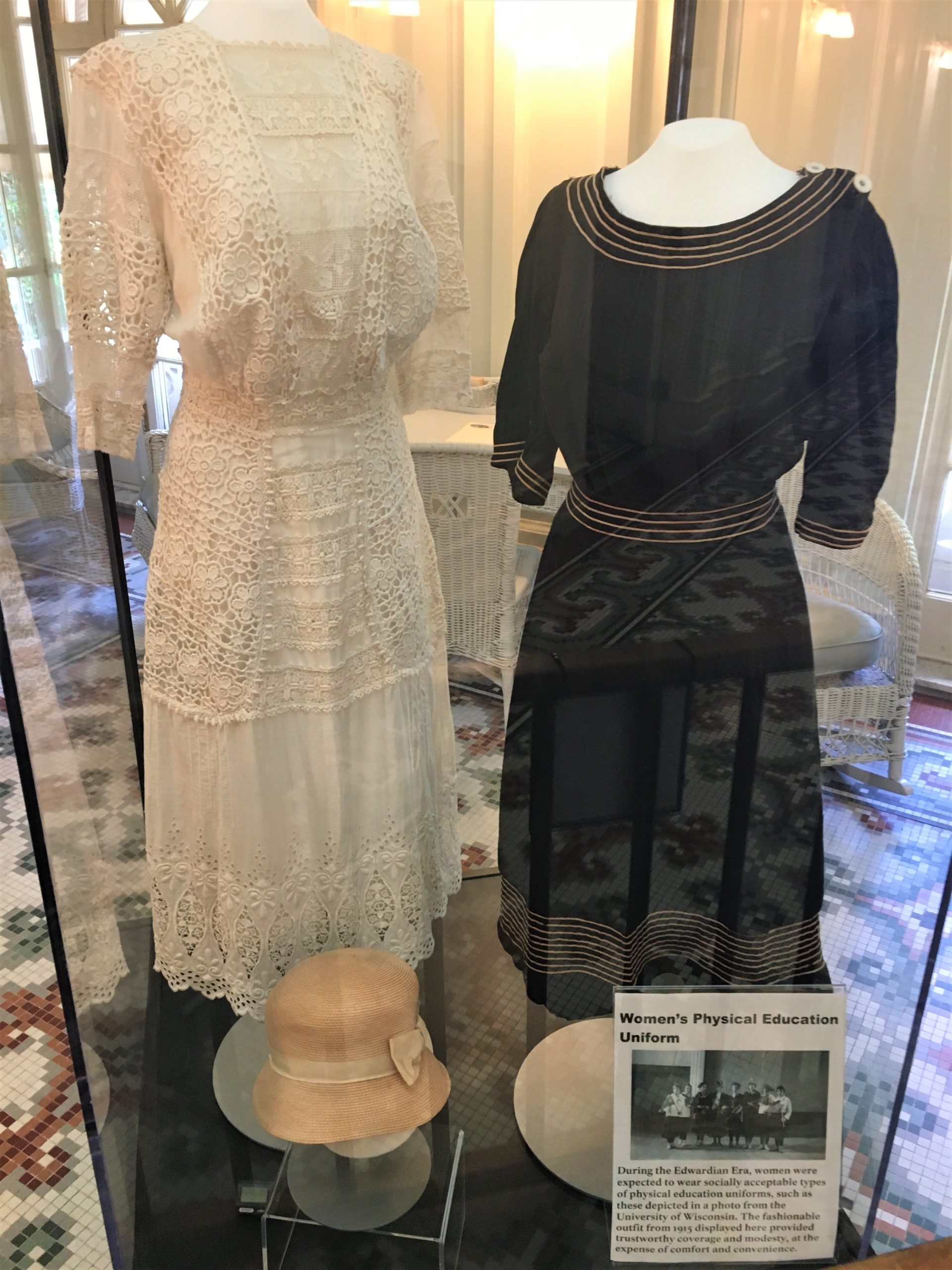

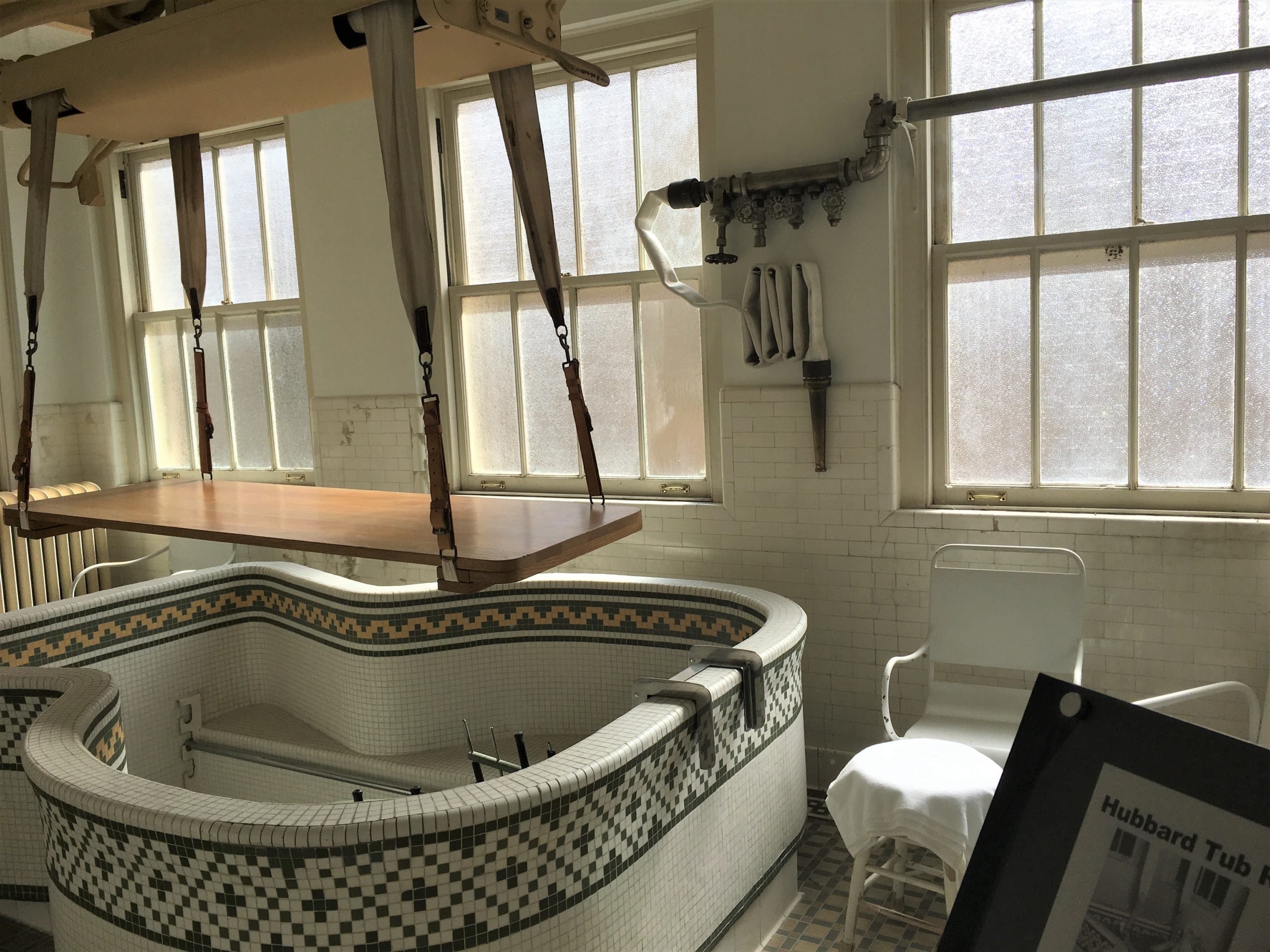

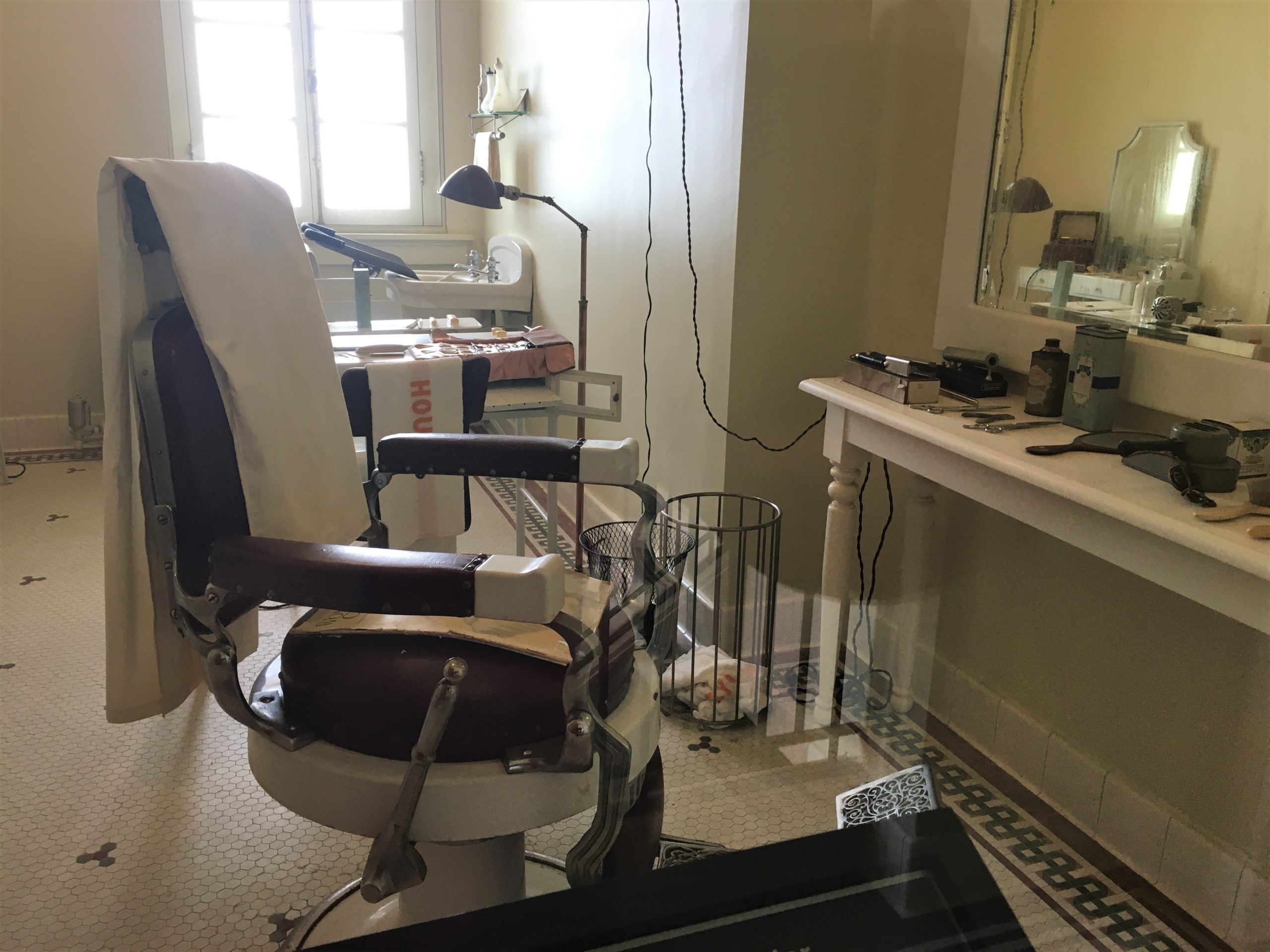
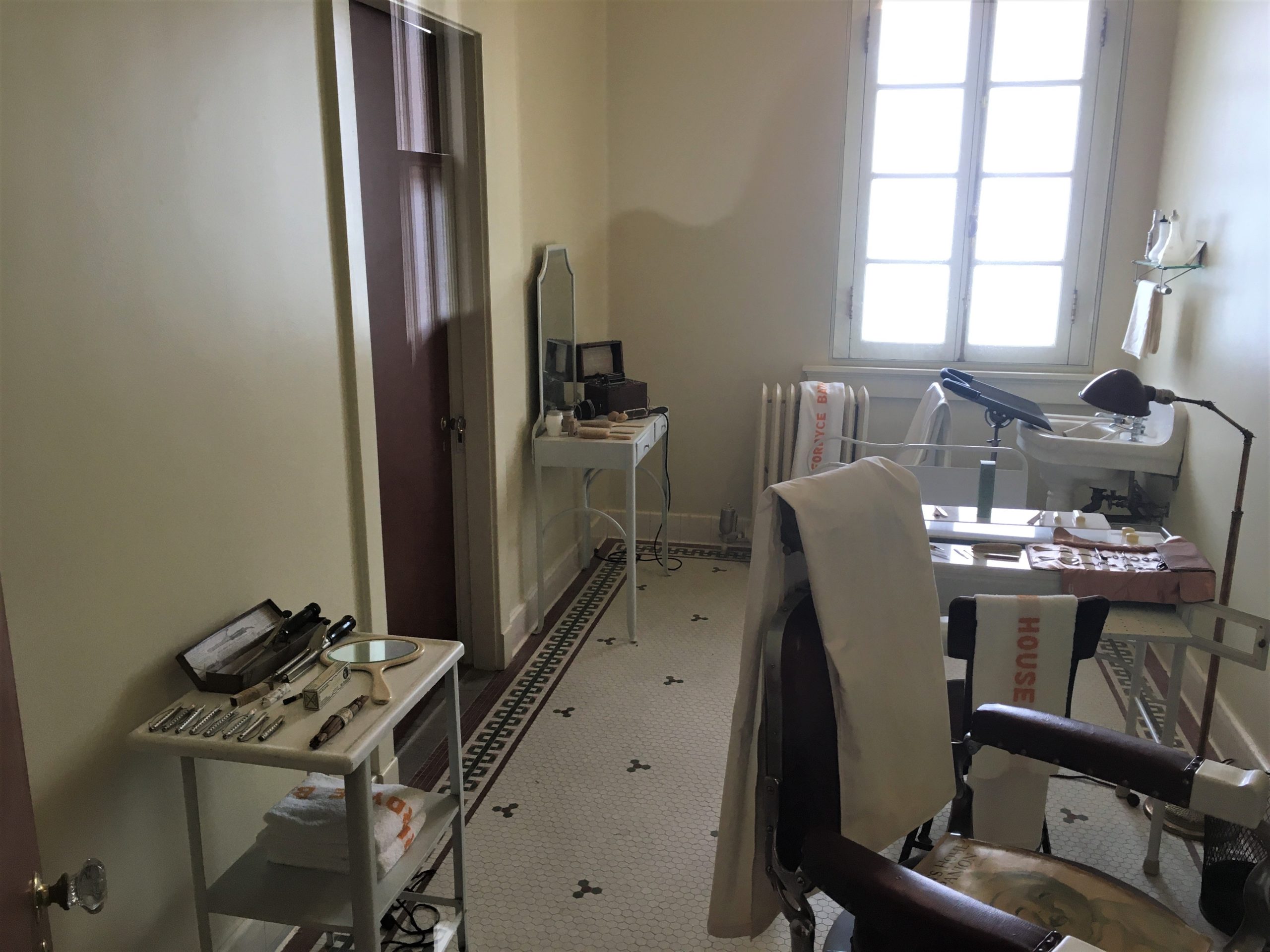

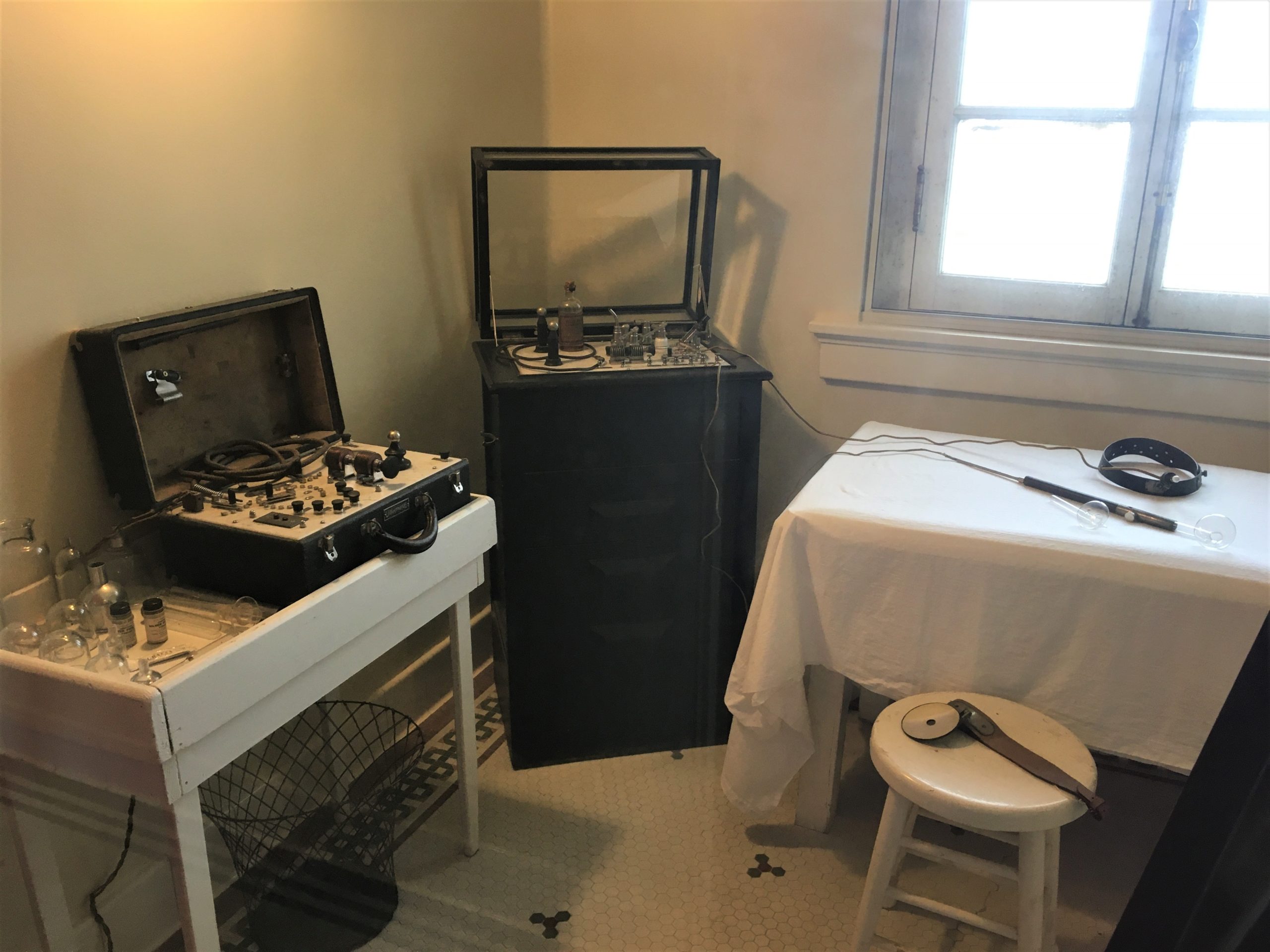


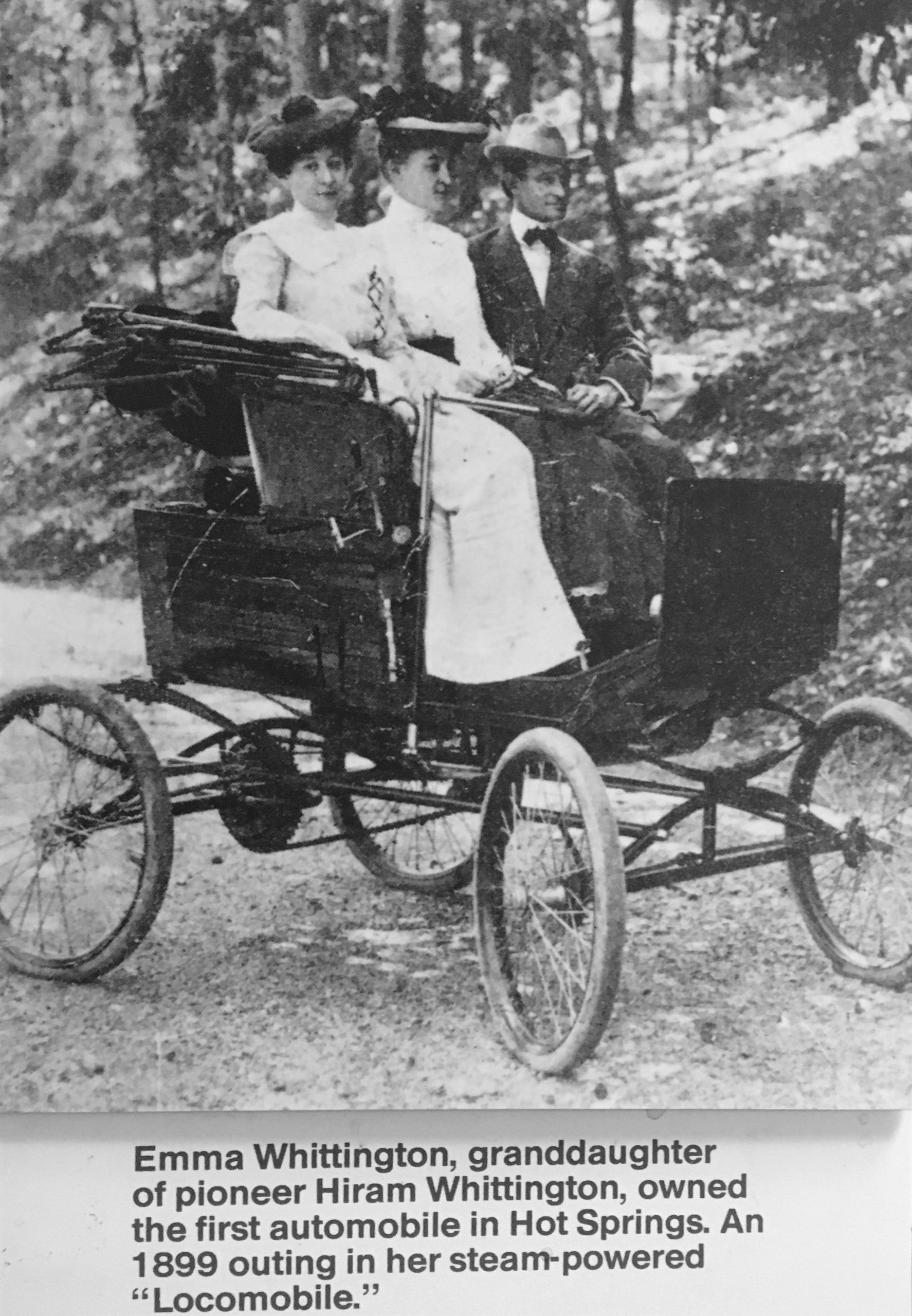

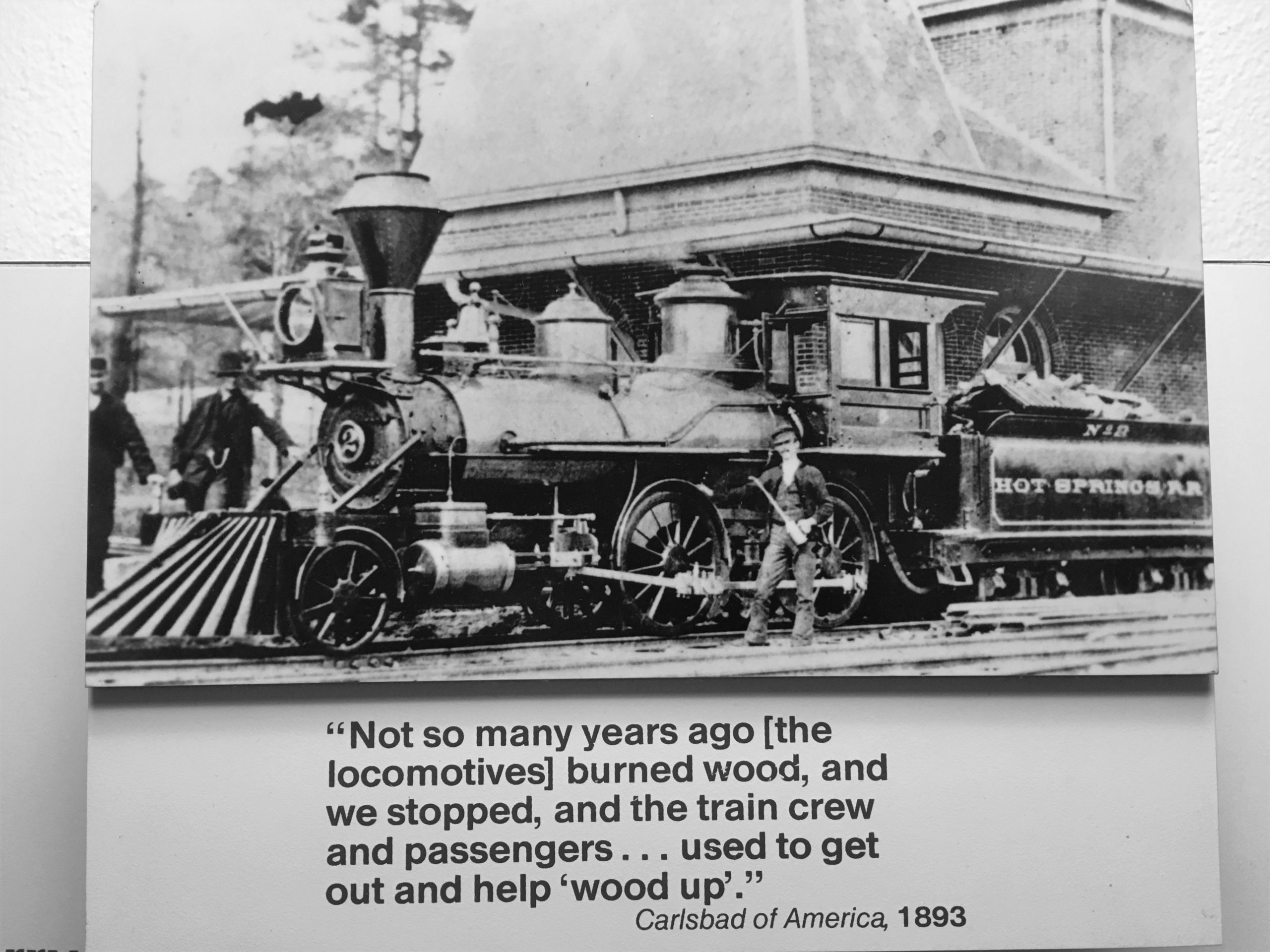
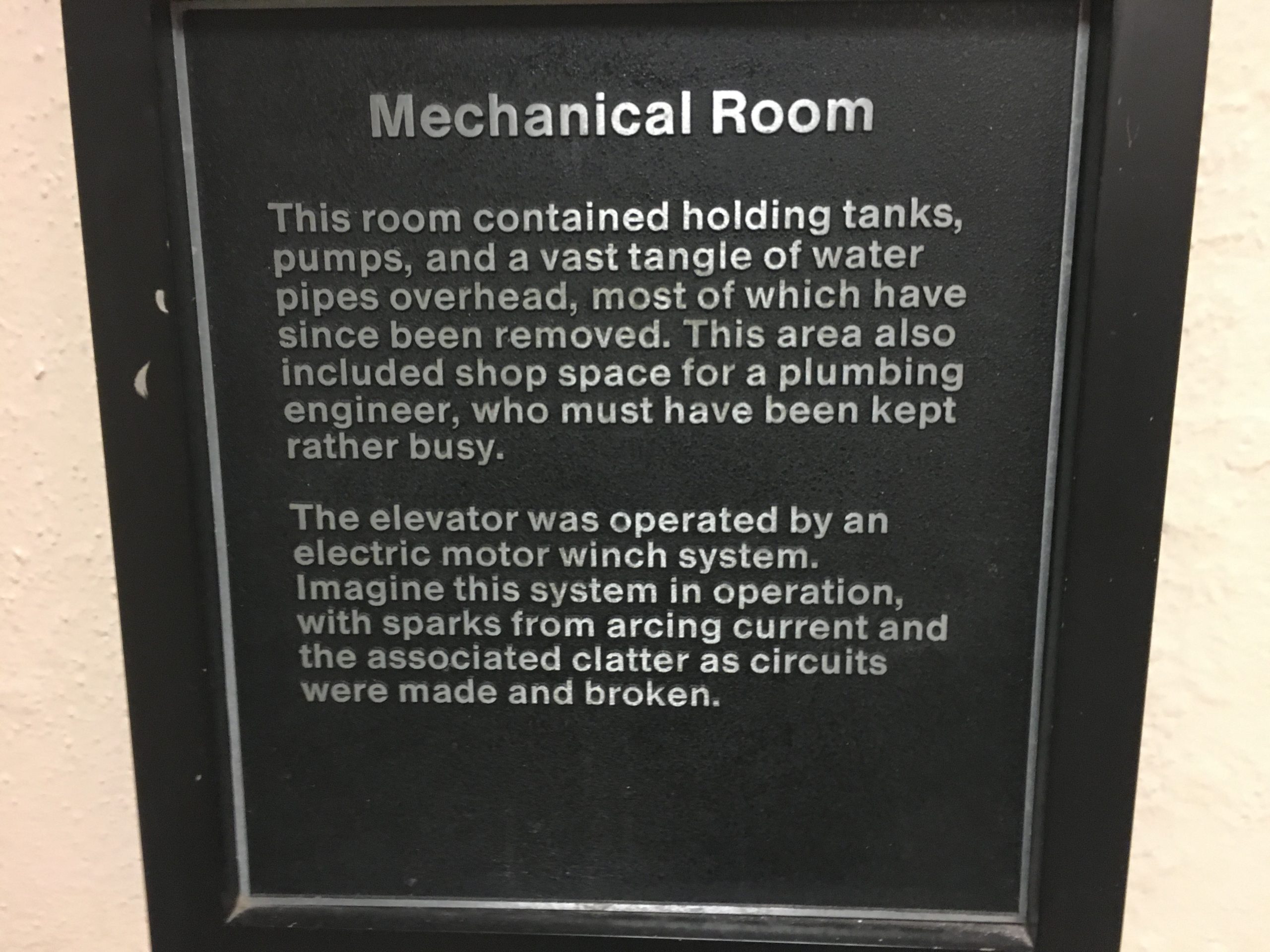
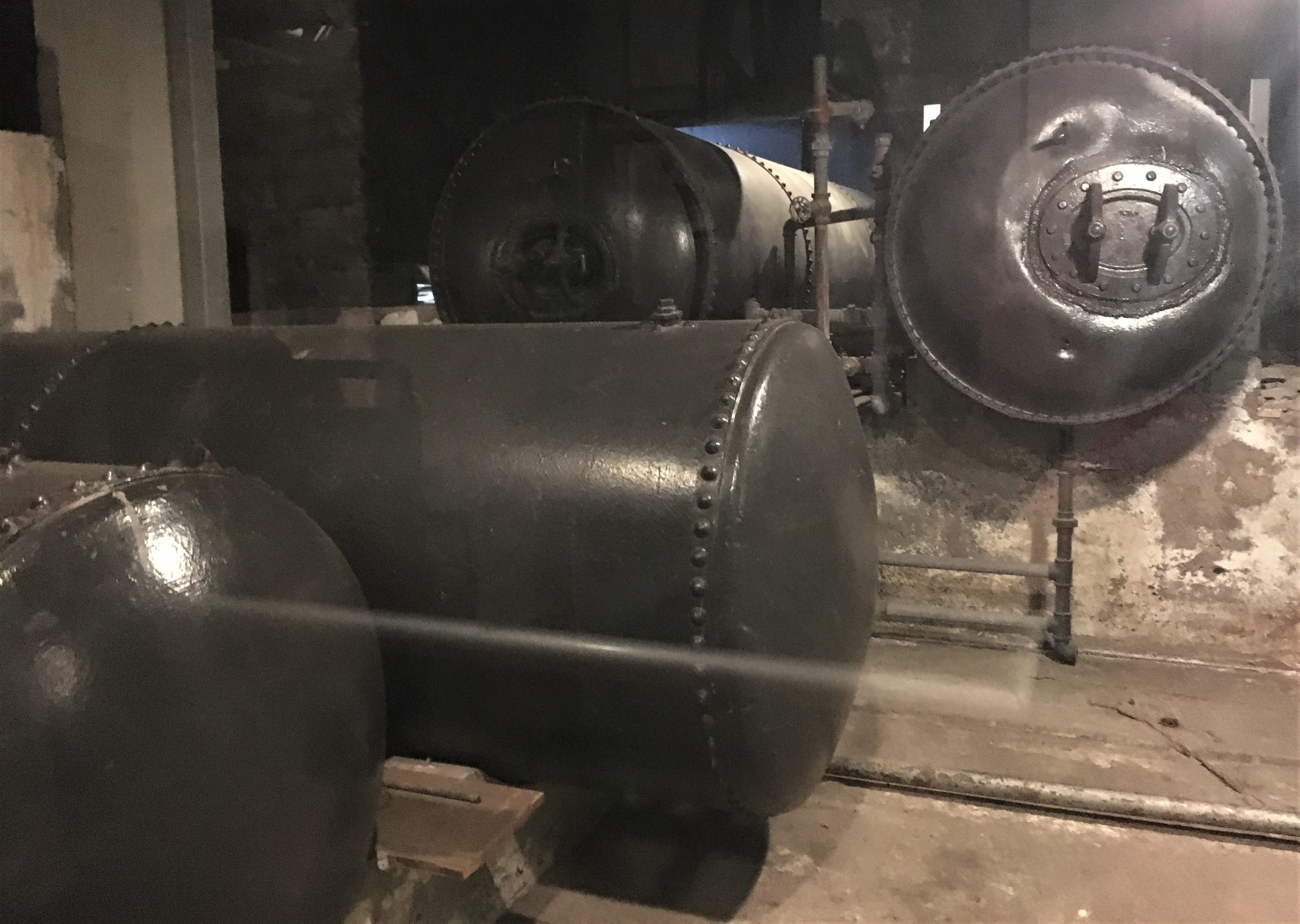


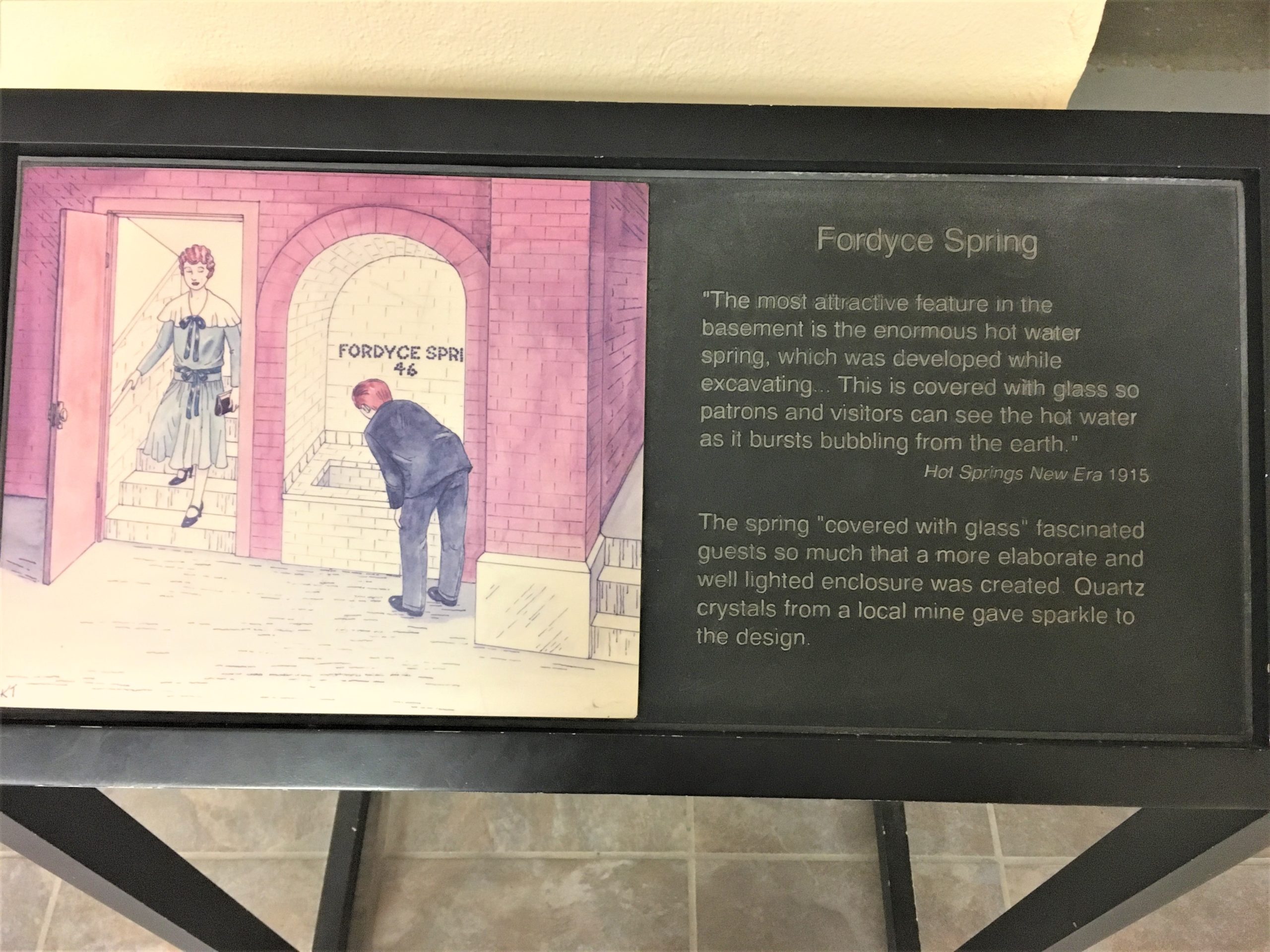

so you have a picture of the hole, but no water. : )
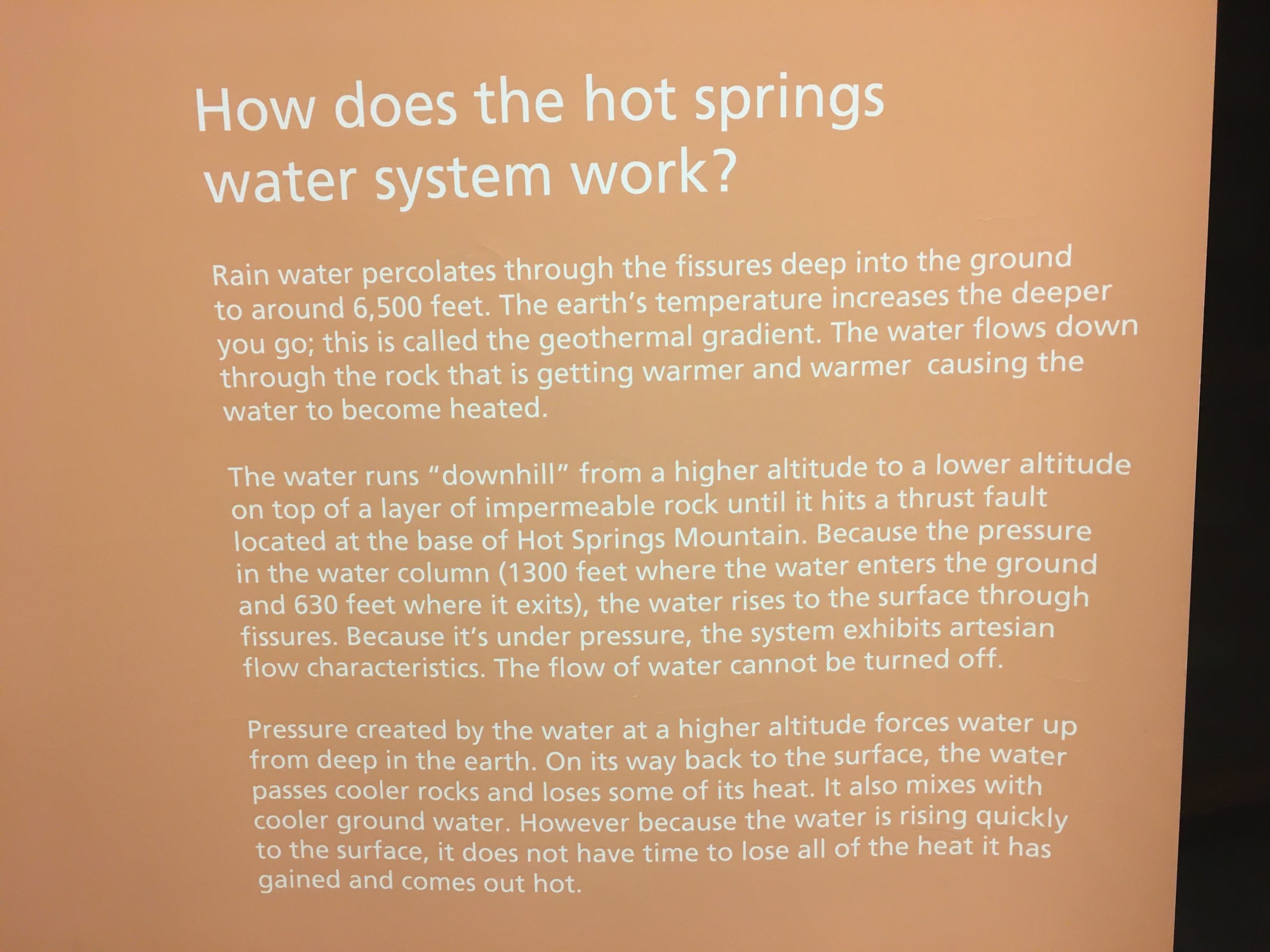

I wanted to know why. . . .
Temperature in the Earth increases with depth below the surface, something known as the geothermal gradient. The deeper that you travel towards the Earth’s core, the hotter the rocks become.
Remember the folds and faults formed during the building of the Ouachita mountains? They create a route which allows rainwater to travel down 6,000 to 8,000 feet below the surface, slowly heating up as it travels deeper and deeper. The water travels for 4,000 years before hitting a fault line and relatively quickly, or about 400 years, reaching the surface in what is now the historic downtown area of Hot Springs National Park, along Bathhouse Row.
So, in short, when rain falls on the recharge zone, it follows the faults and cracks to a depth of 8,000 feet and then re-emerges approximately 4400 years later, at an average temperature of 143° Fahrenheit. ~ nps.gov
To put that into perspective, just think that 2,000 years ago, Jesus walked the earth, and 2,000 years before that, the Egyptians were building the pyramids, and Abraham was born!
I still don’t know how they know that . . . . . This is why it often takes me so long to put a post together.
You can no longer just go and try to sit in a hot spring (haven’t for a very long time!), but they have places where you can check it out. AND they have spigots all over with fresh spring water that’s been cooled so you can drink it. It’s wonderful! And the hot spots? The water averages 143⁰!! Did you notice that’s the average??? Oh, you can touch it alright, but you’d best be quick about it!
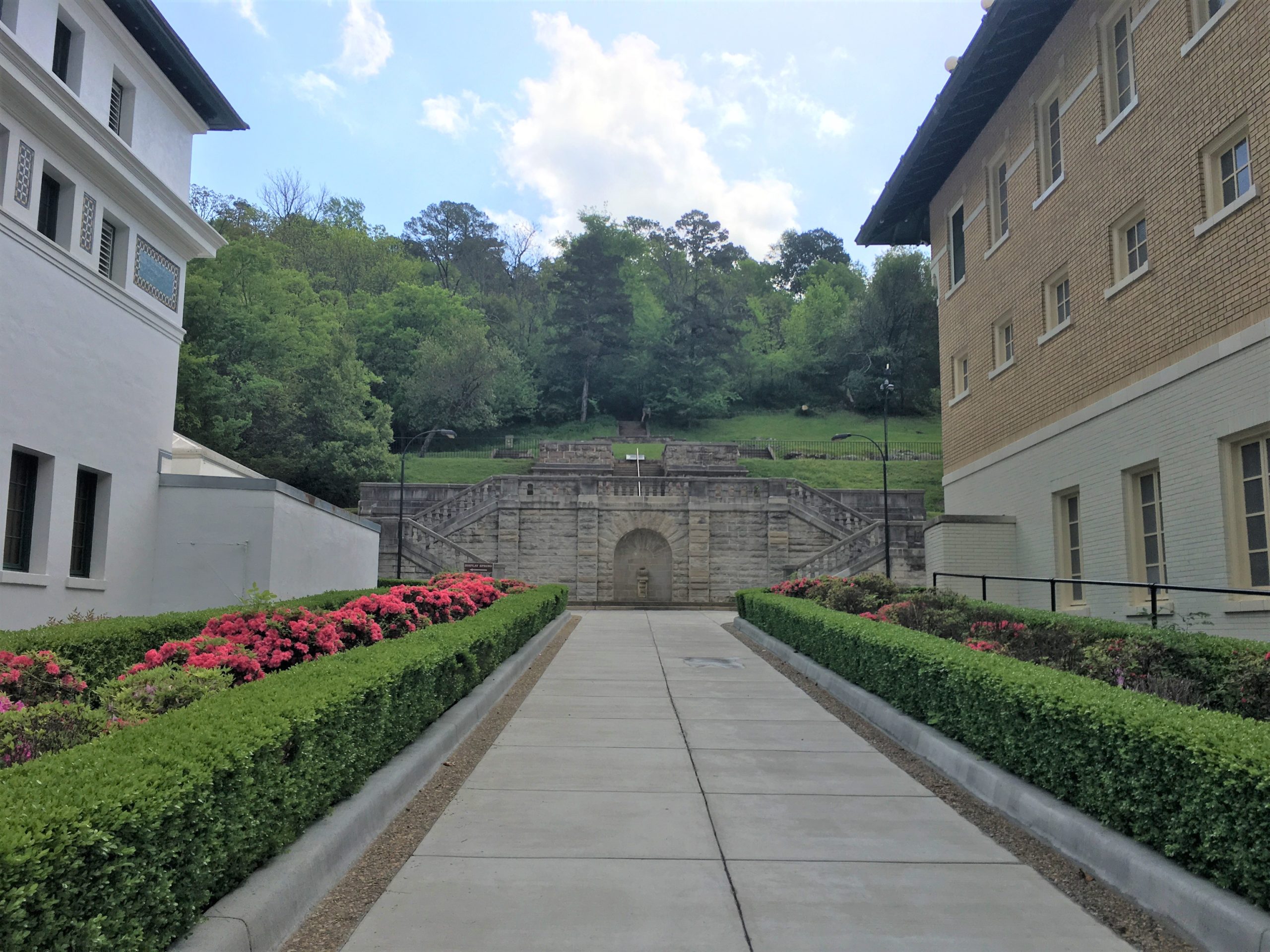
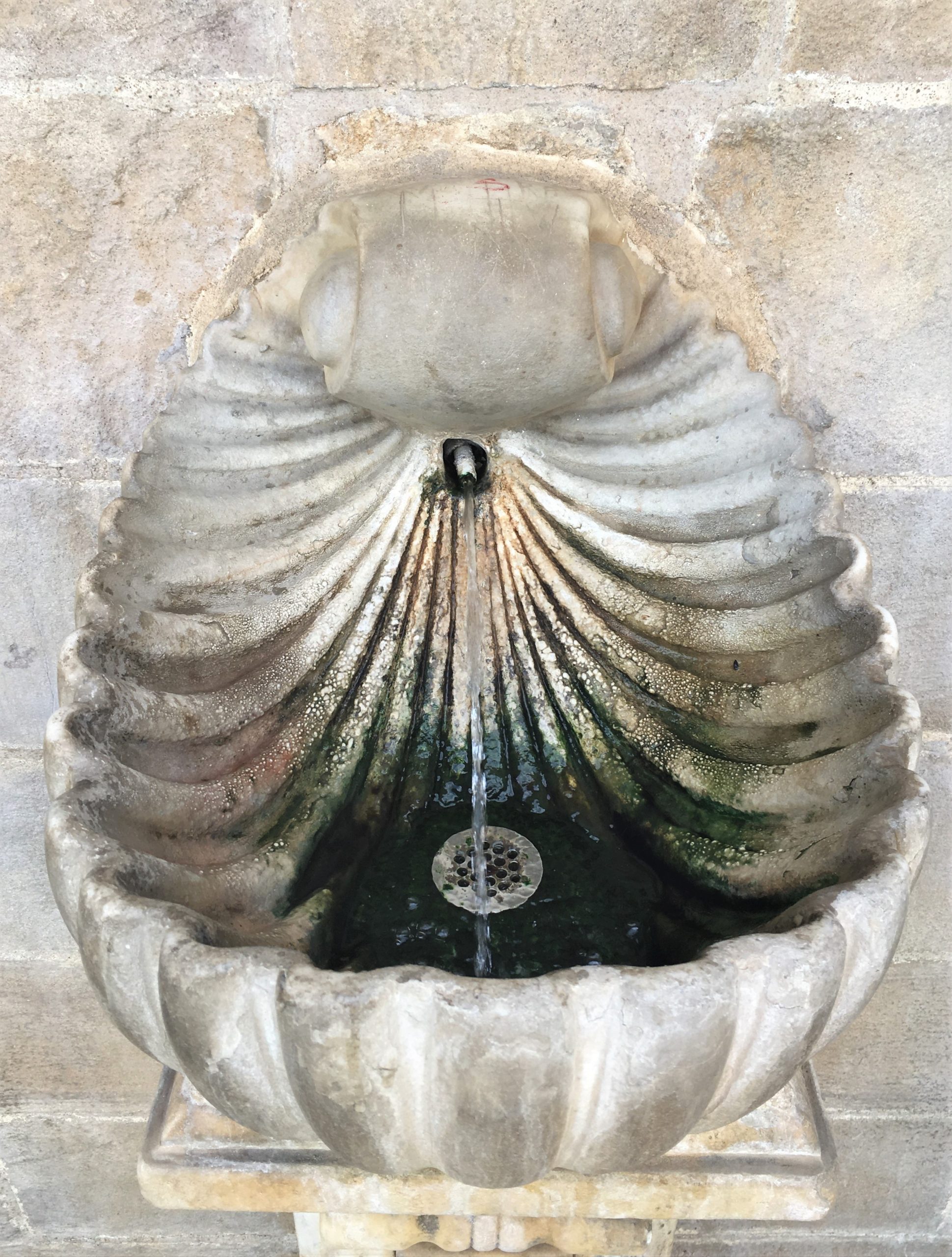
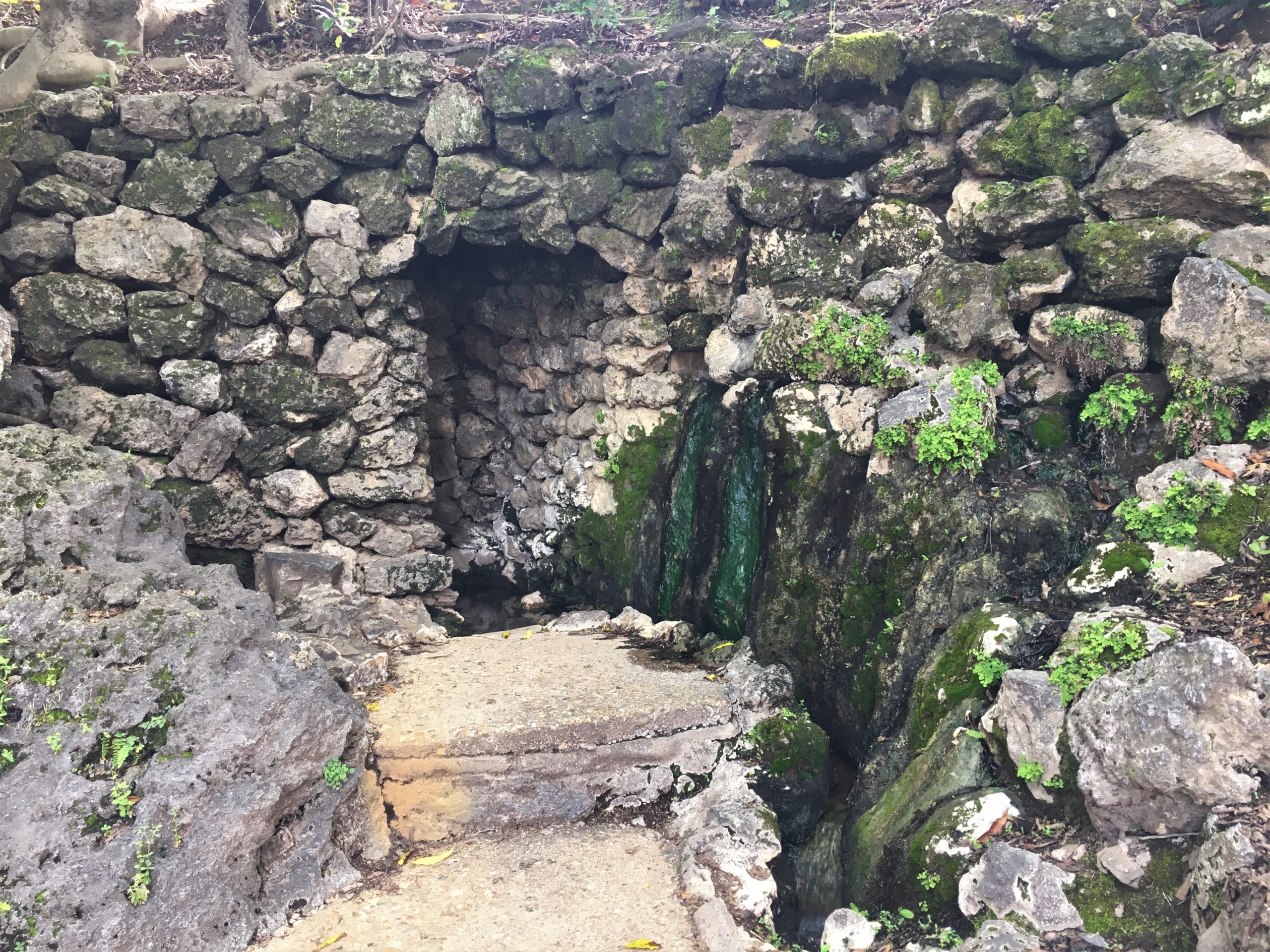
We were surprised plants can grow under that hot of water!
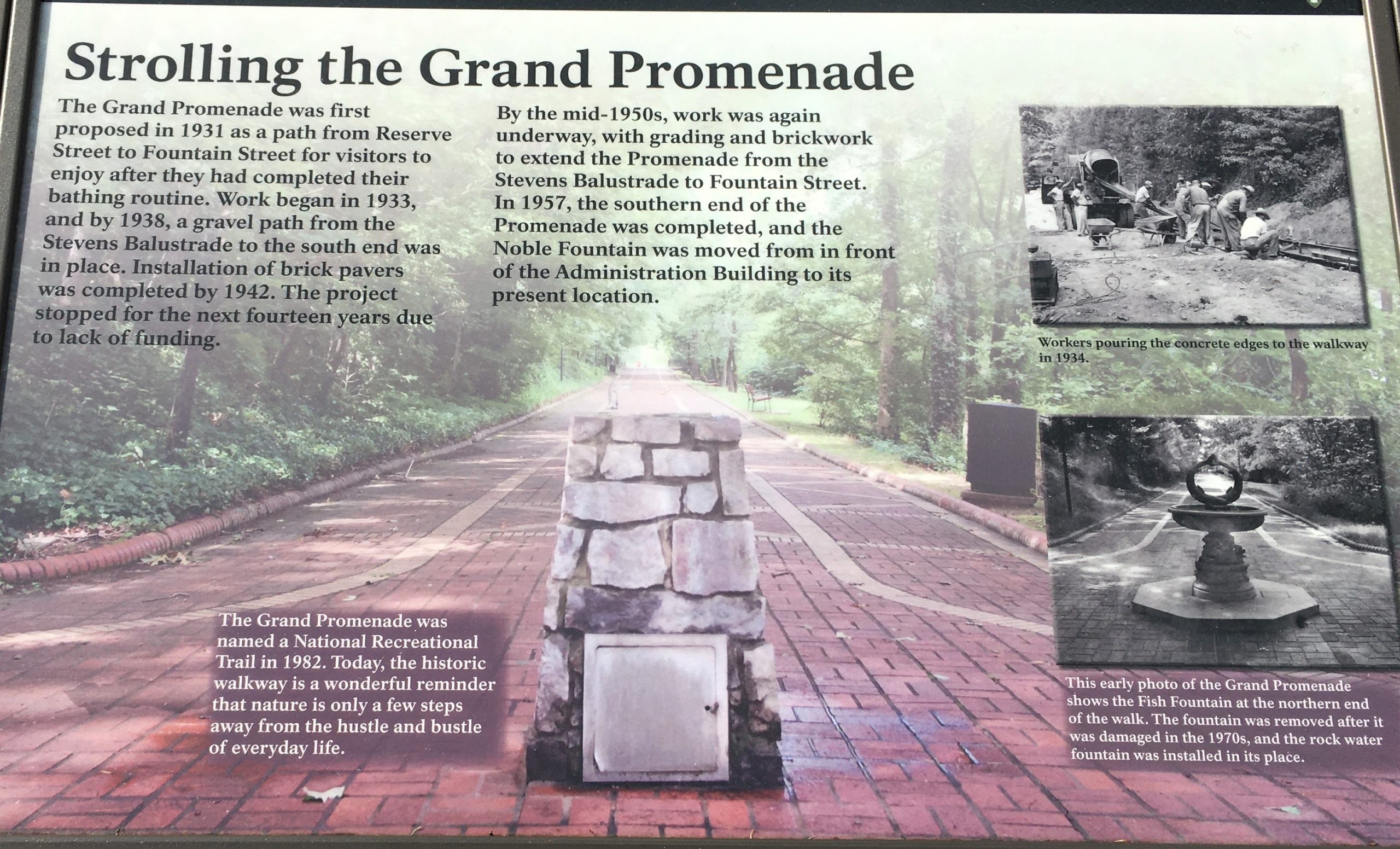
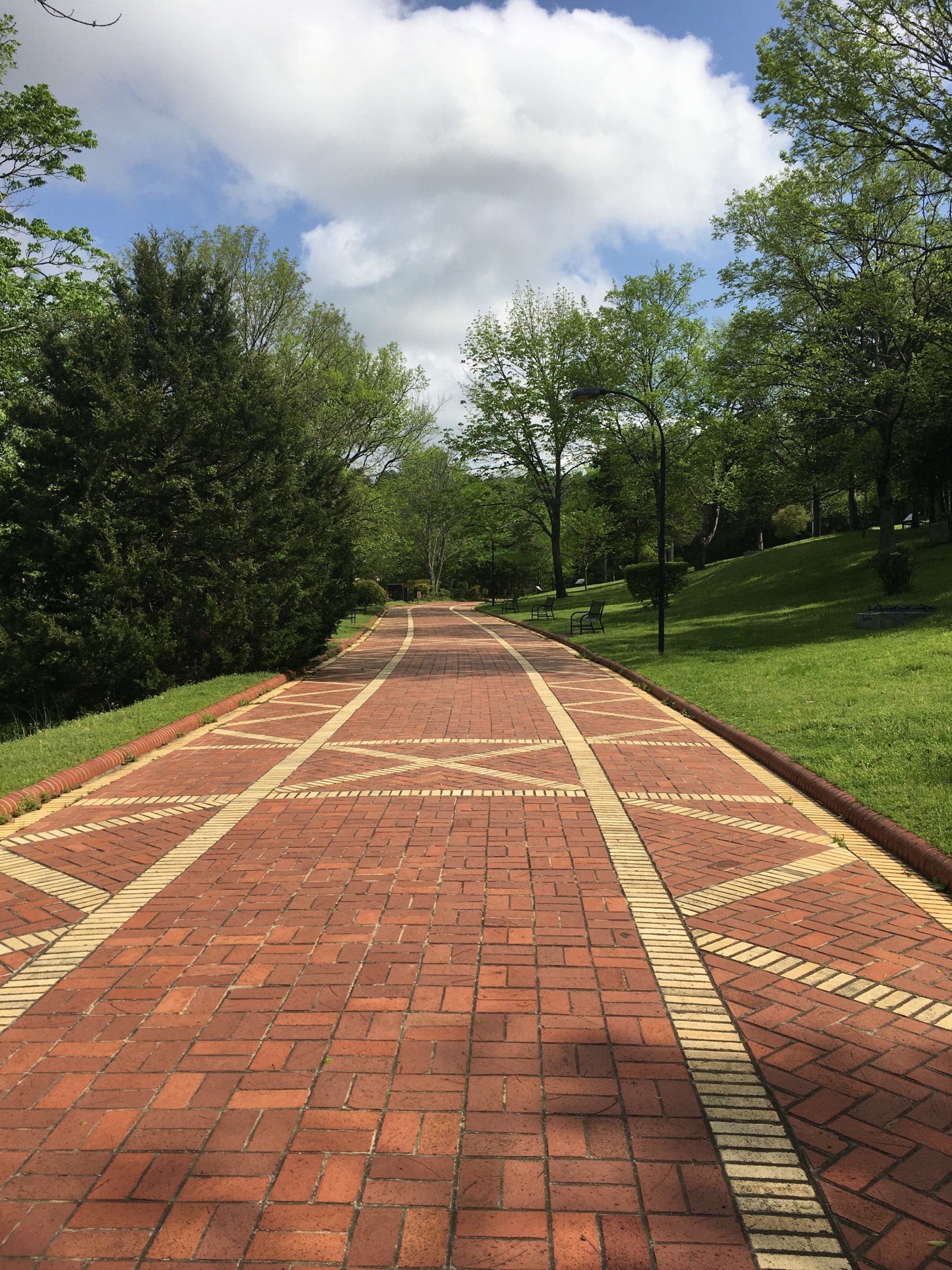
Sometimes I romanticize about living in the 1800’s,
but then I think about all the layers of clothing they had to wear, and change my mind. : )

It’s pretty famous, but I’m not taking the time to look it up.
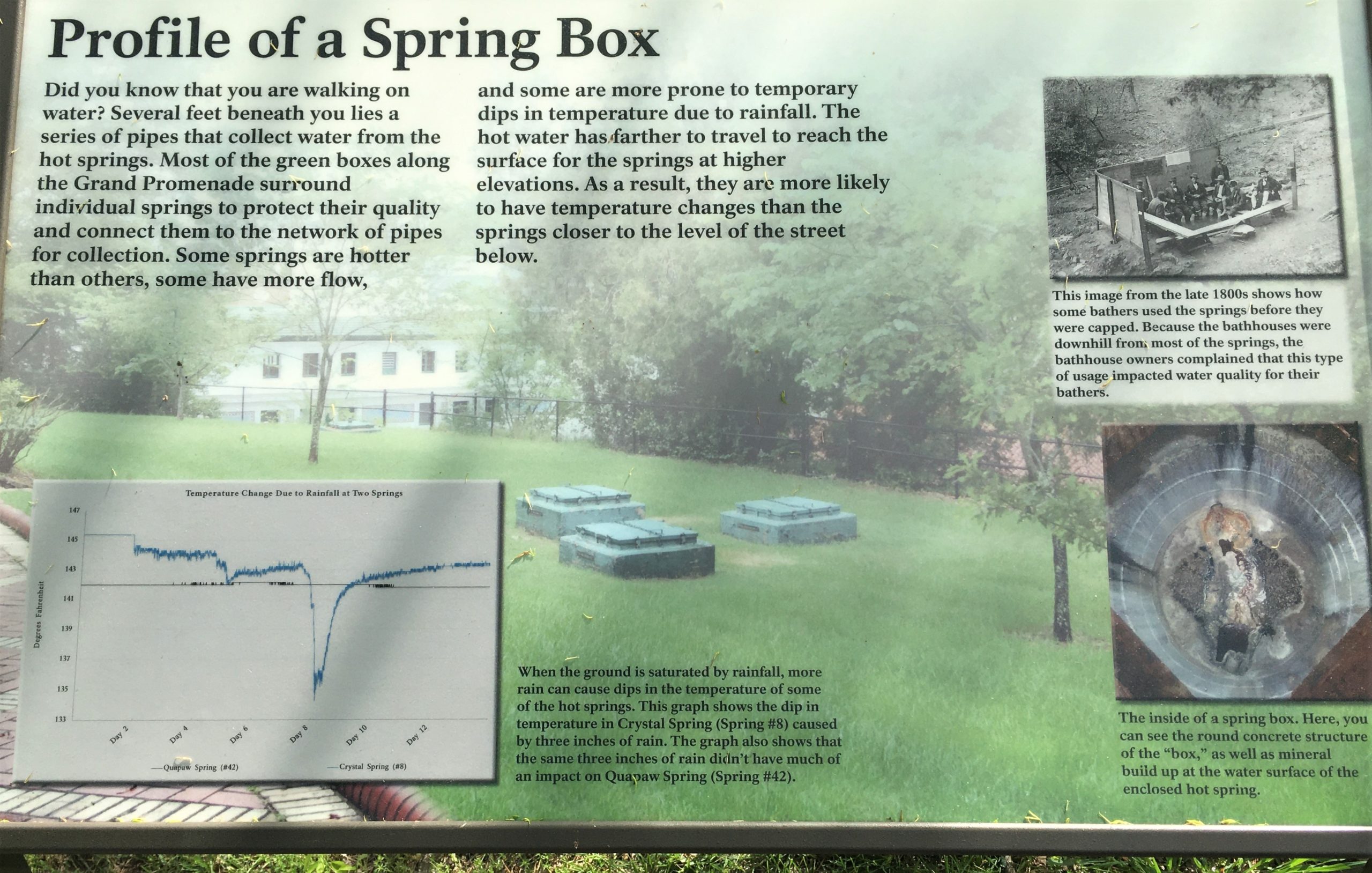


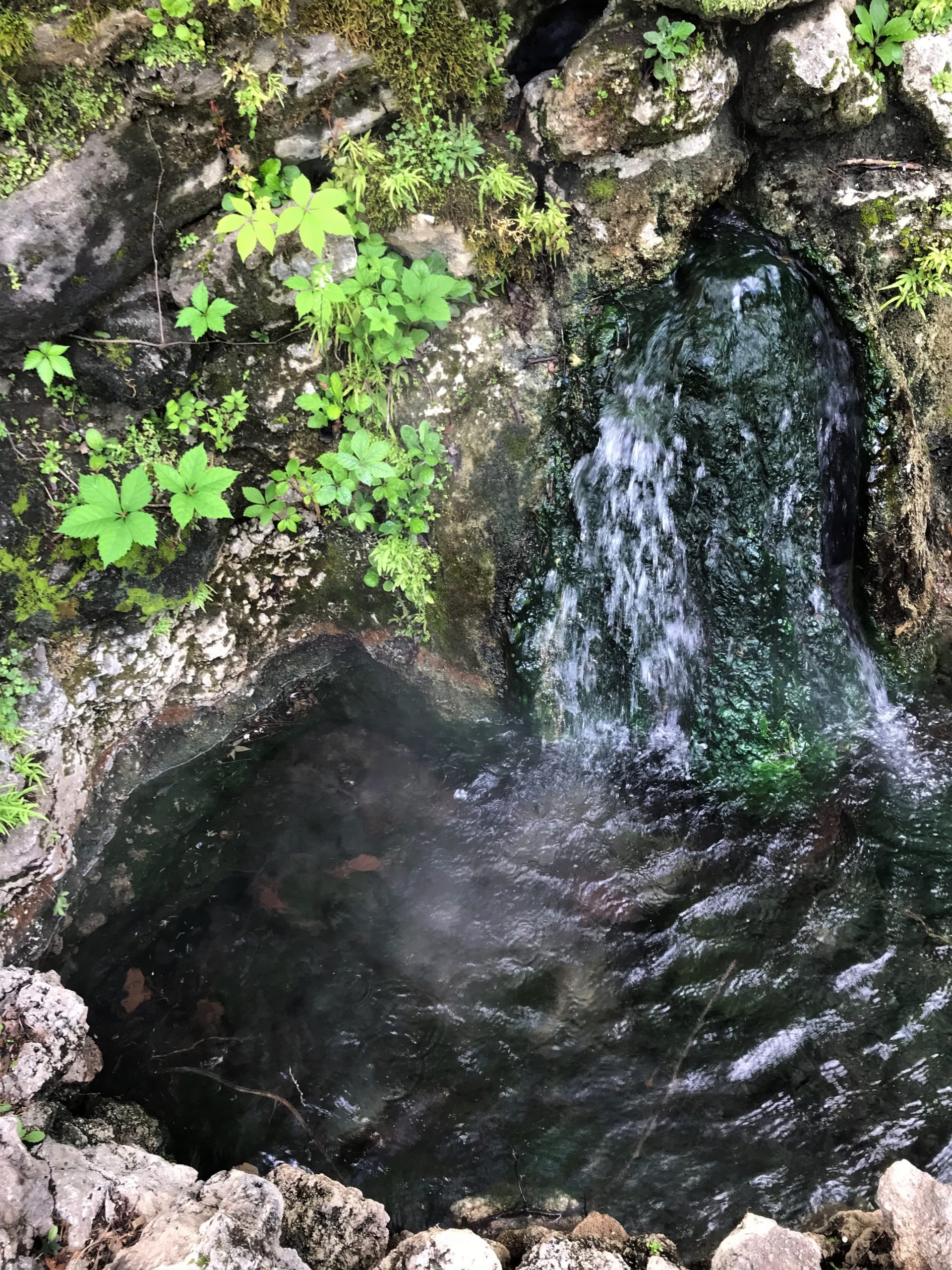
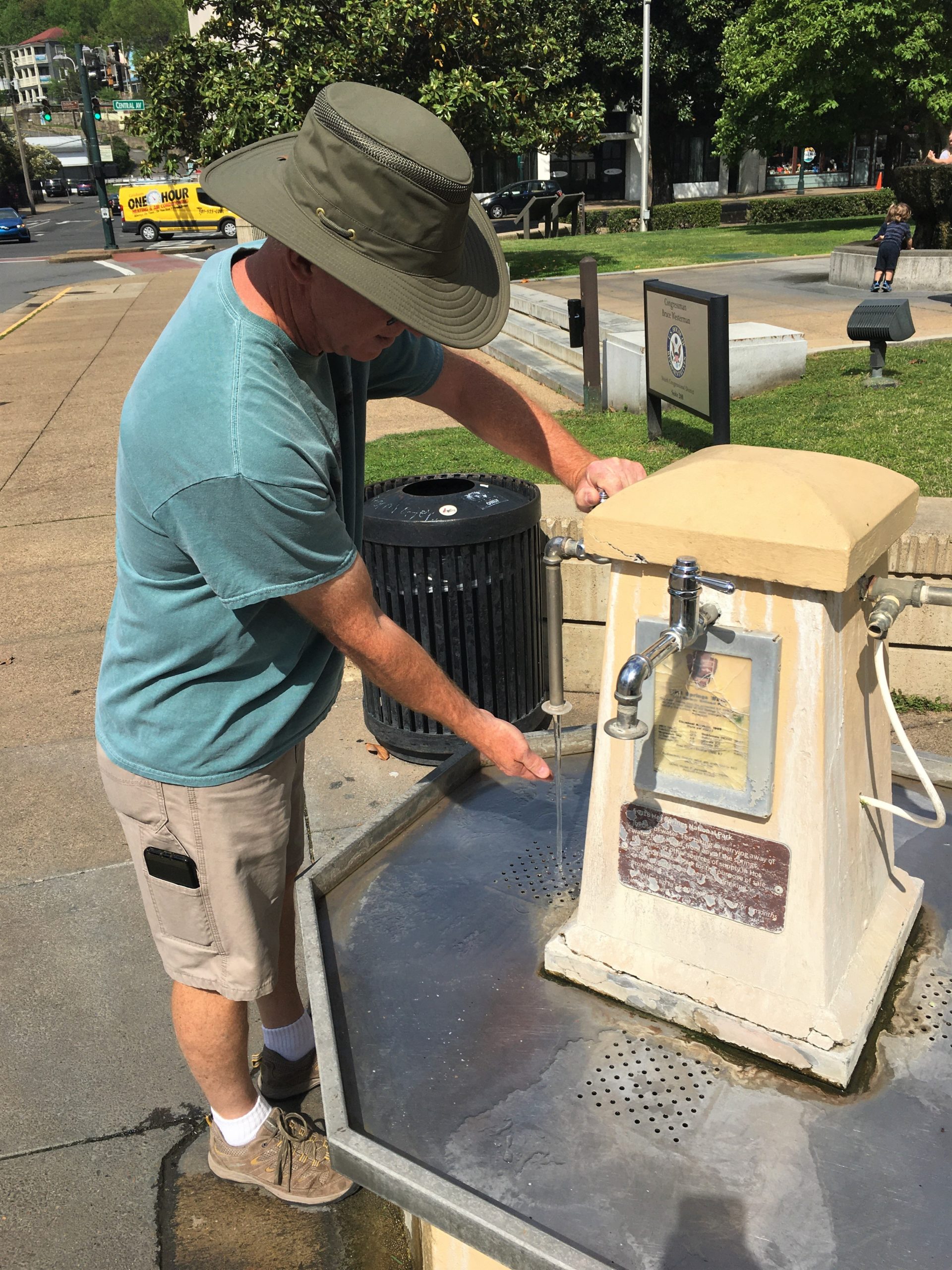
It tasted good, what little we had.
They encourage people to fill their water bottles, but we didn’t have any with us.
FYI – there are seven places like this around town.
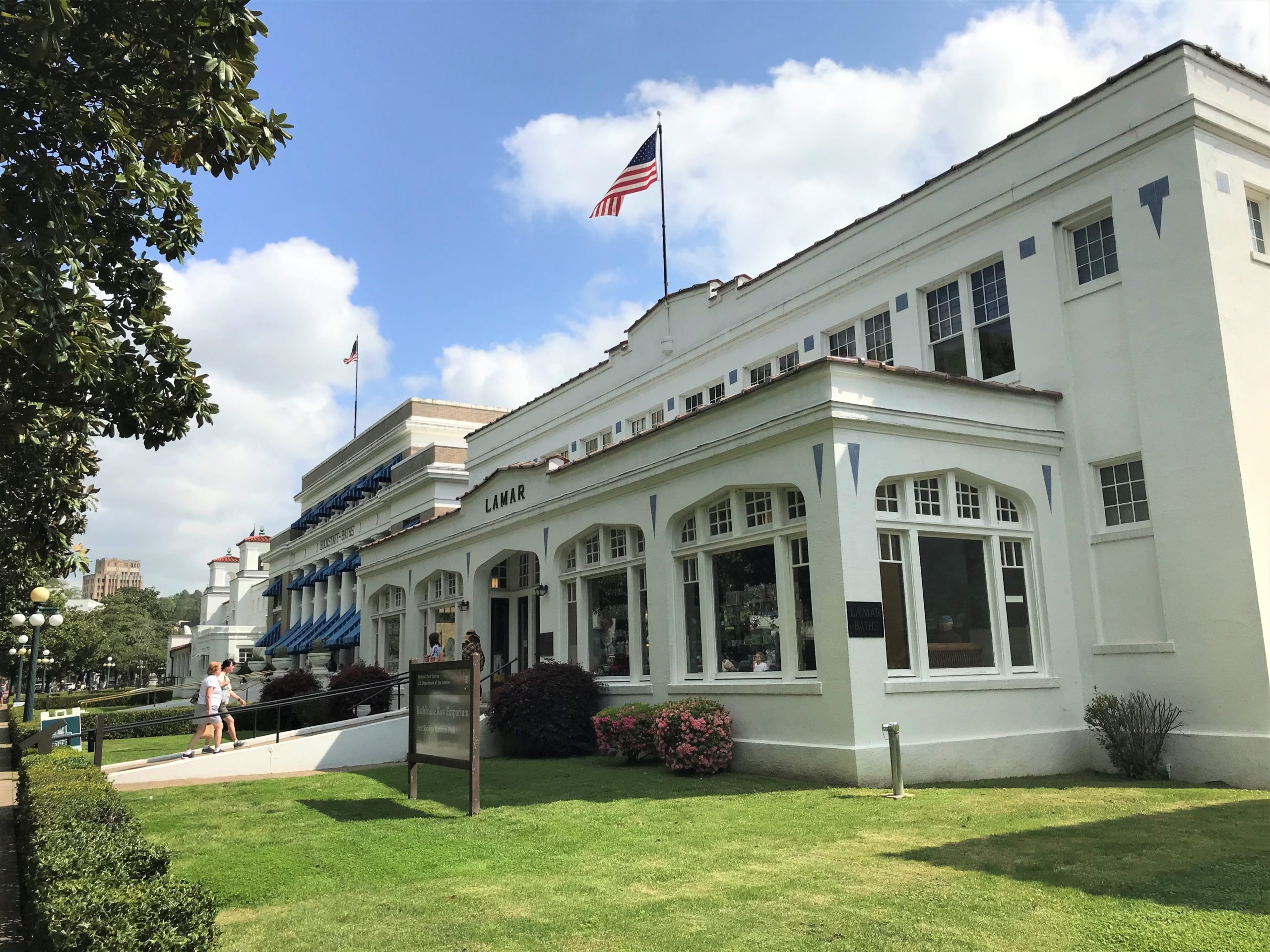
Back in the day, I don’t know how people chose which one they wanted.
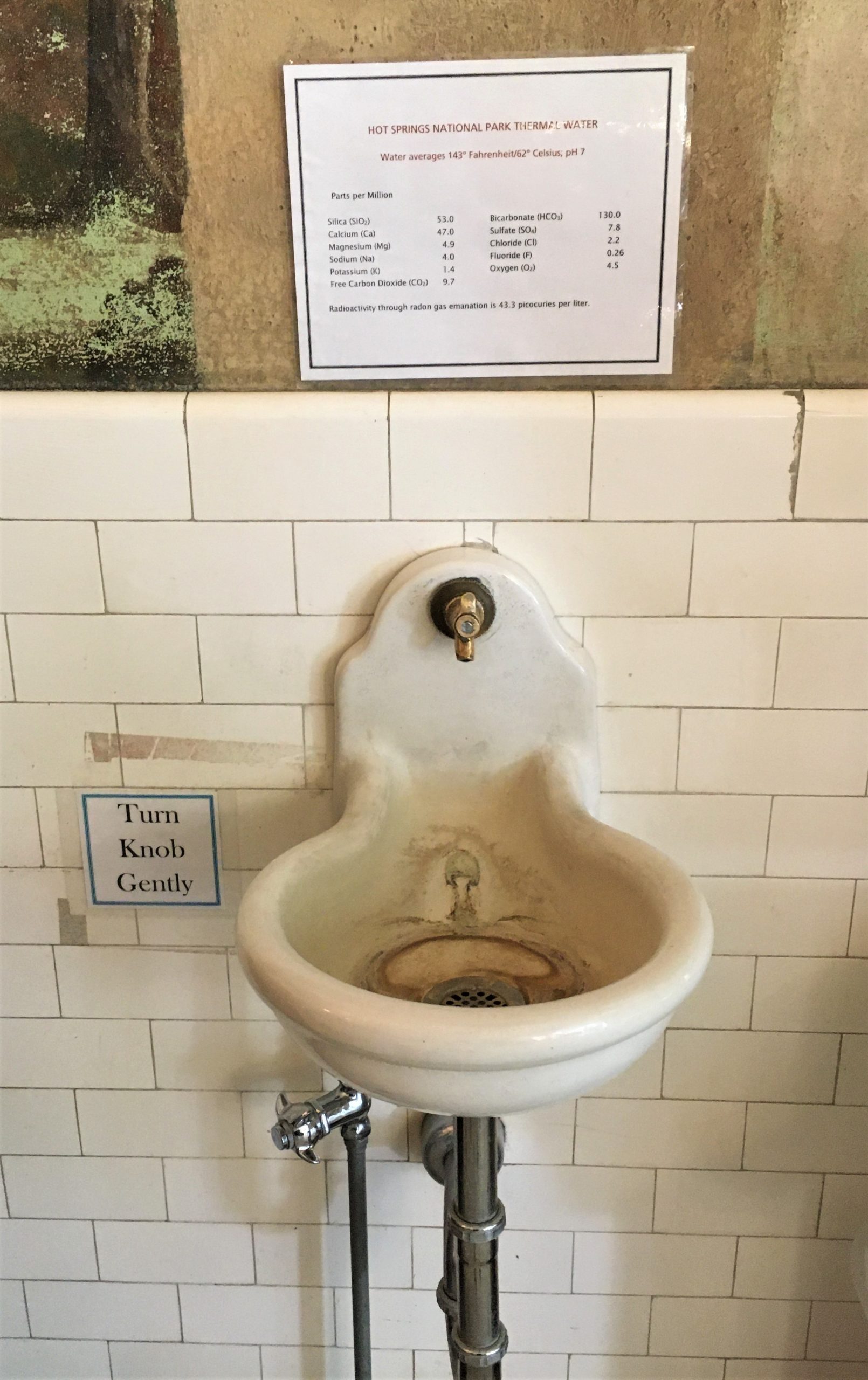
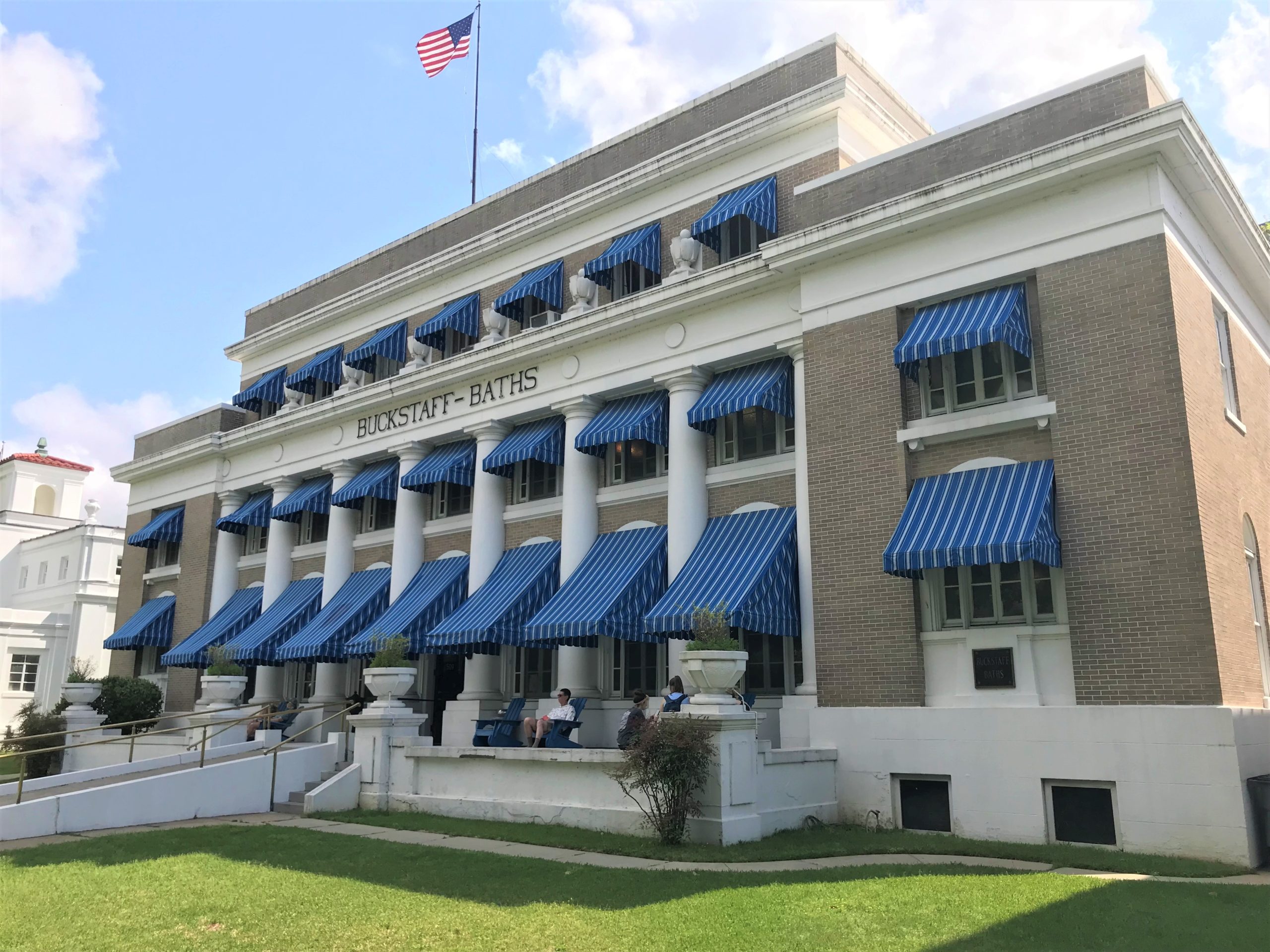


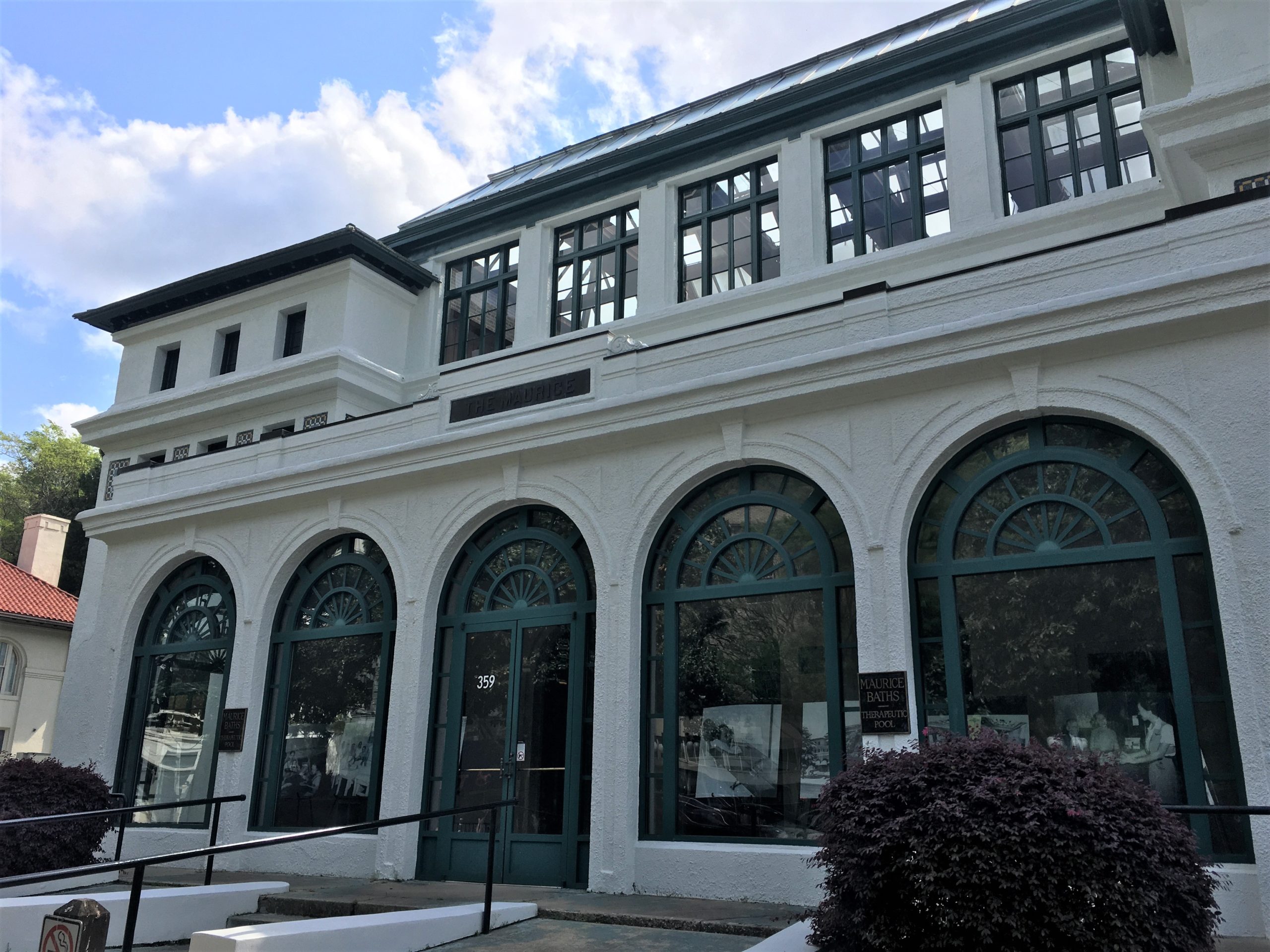

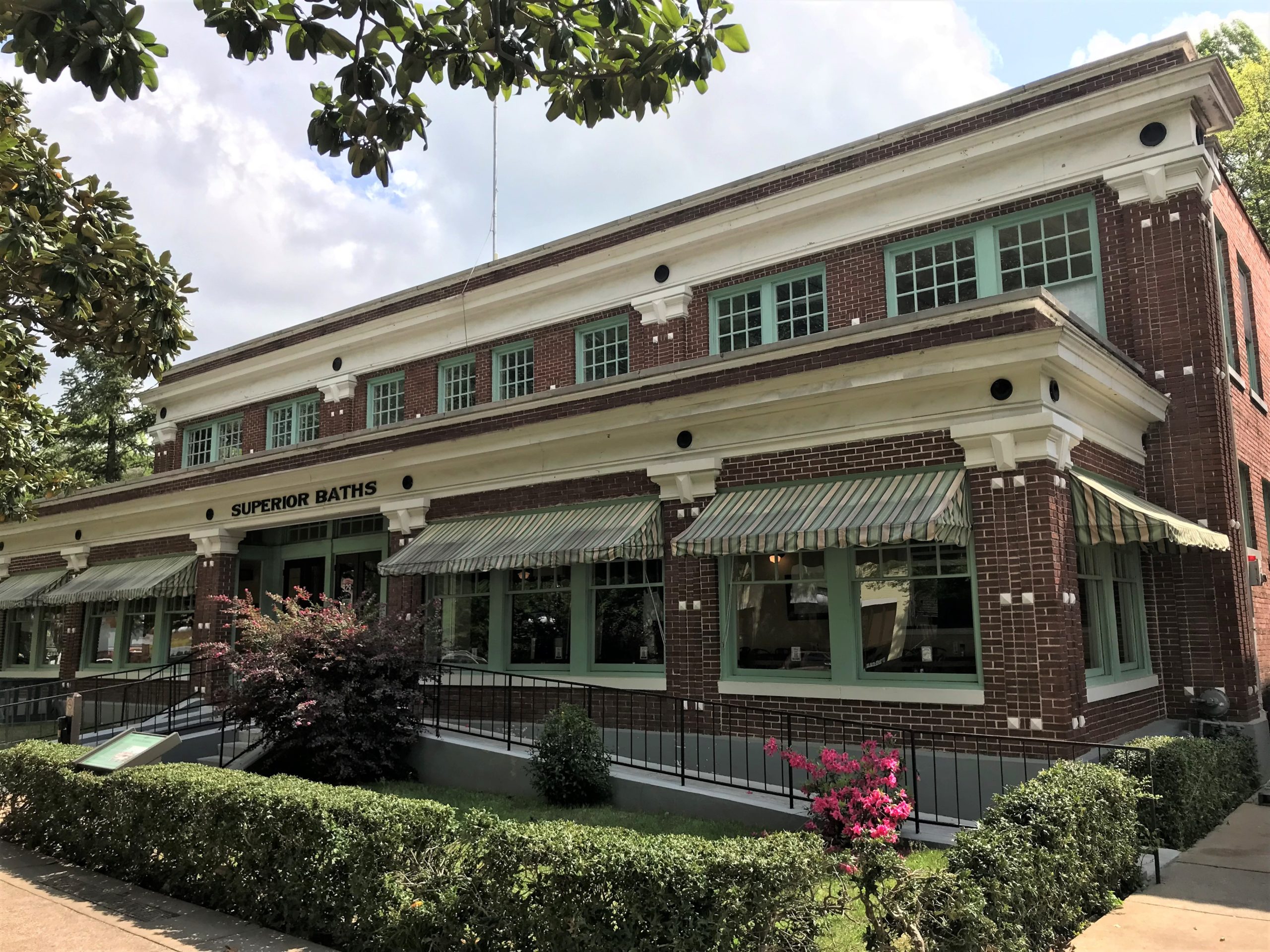
Once we were done with the museum area, we strolled around the rest of the town and found a few trails. One took us into the woods and then through a different part of town.
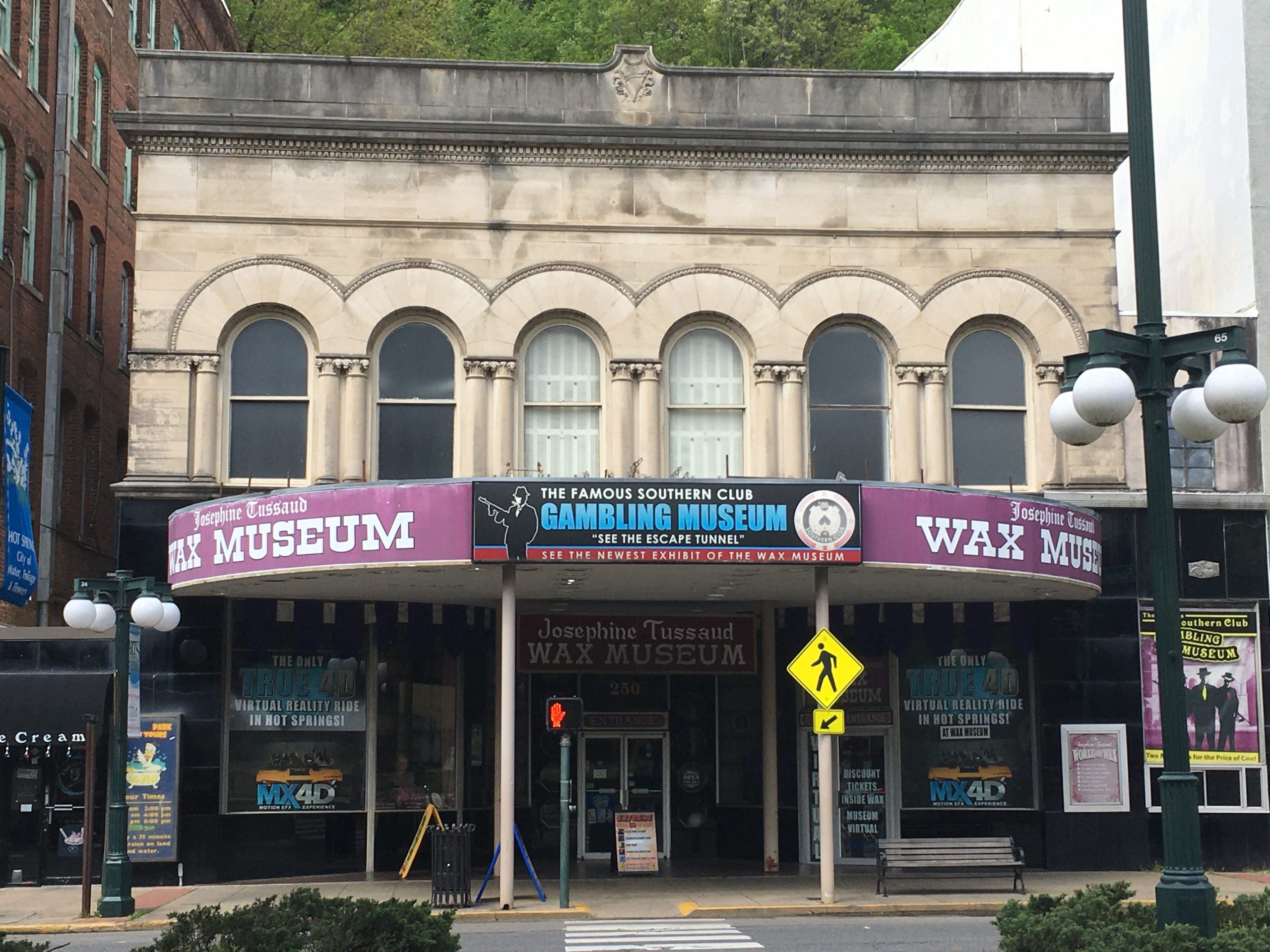


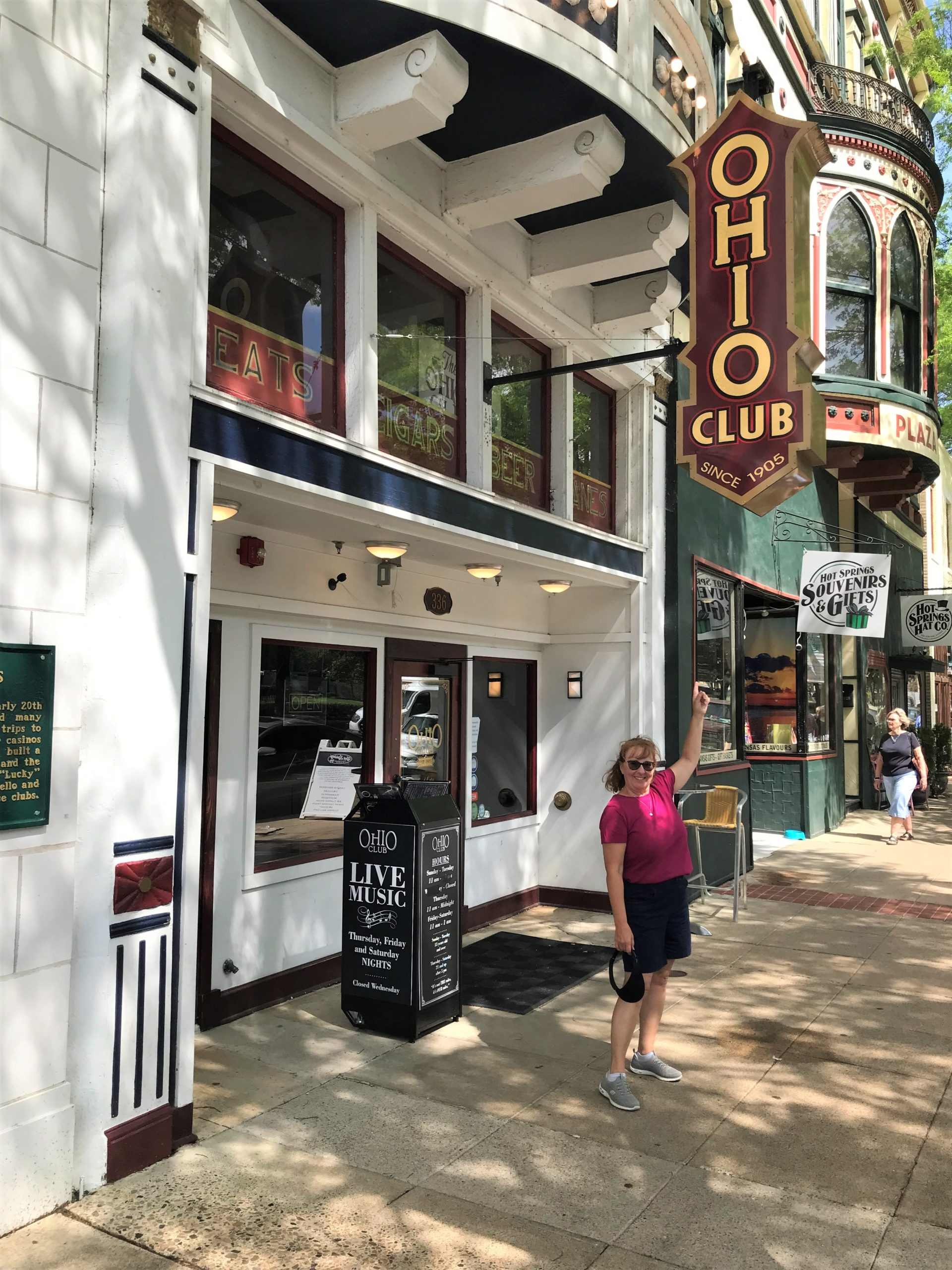
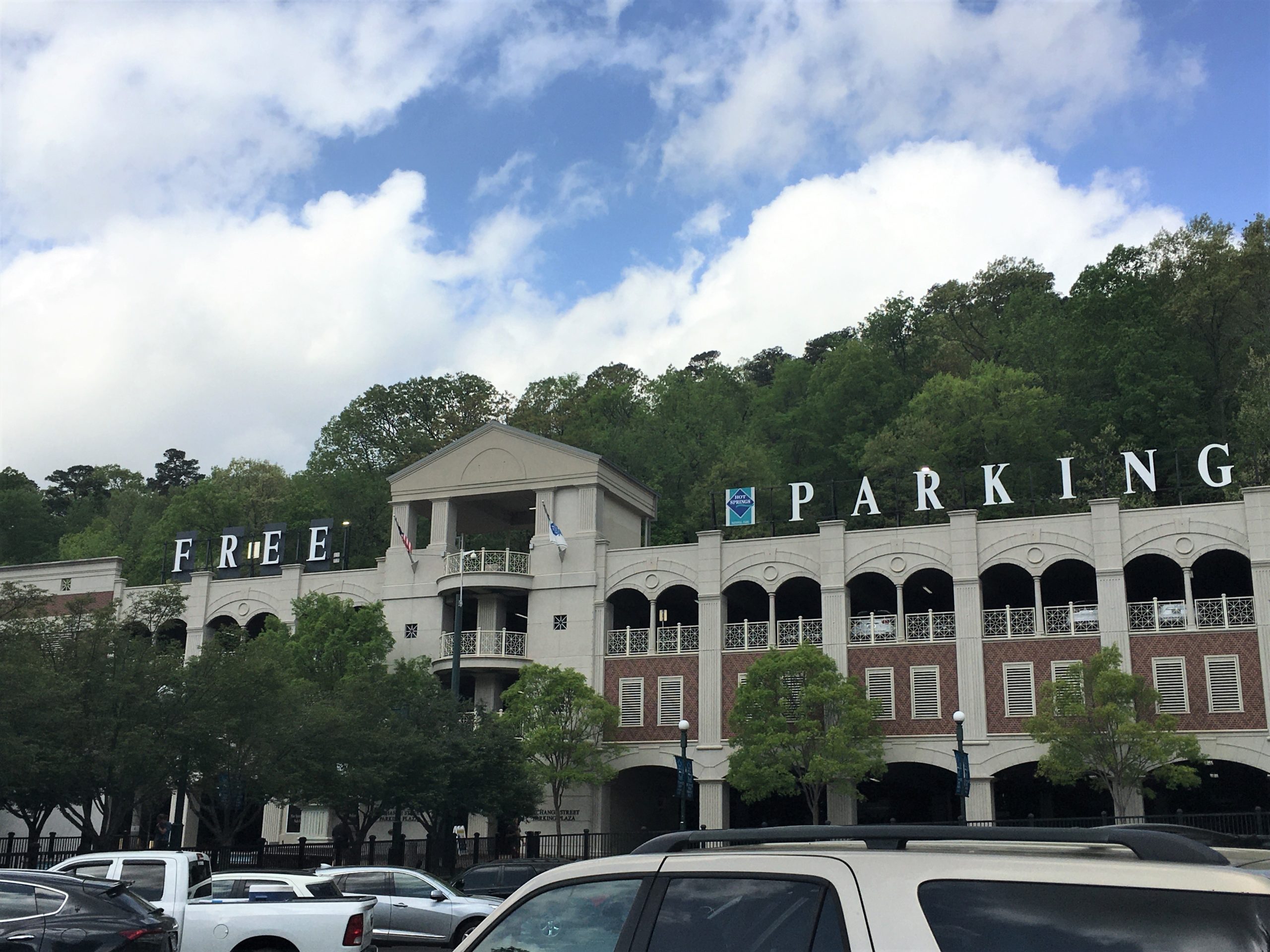
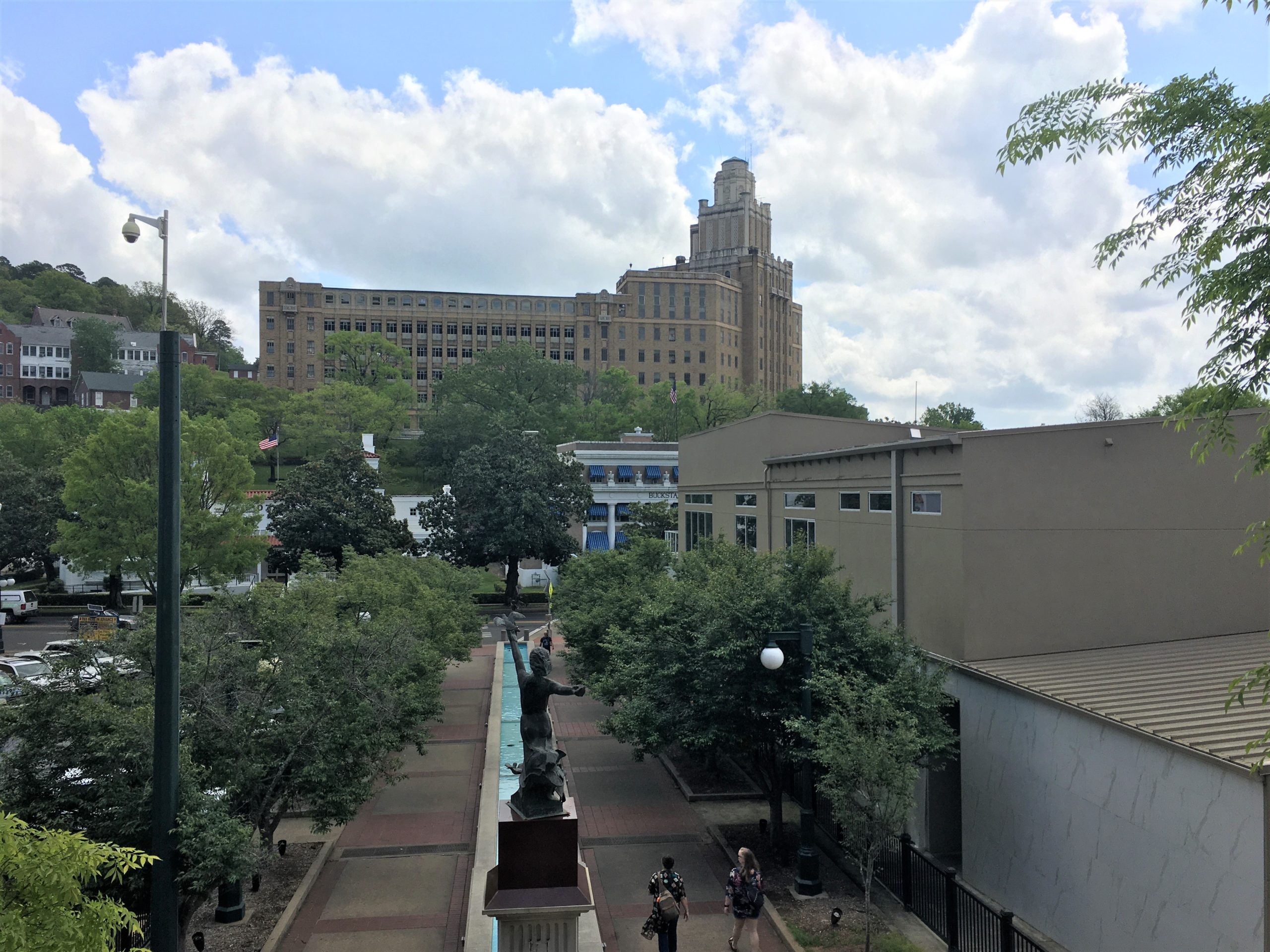
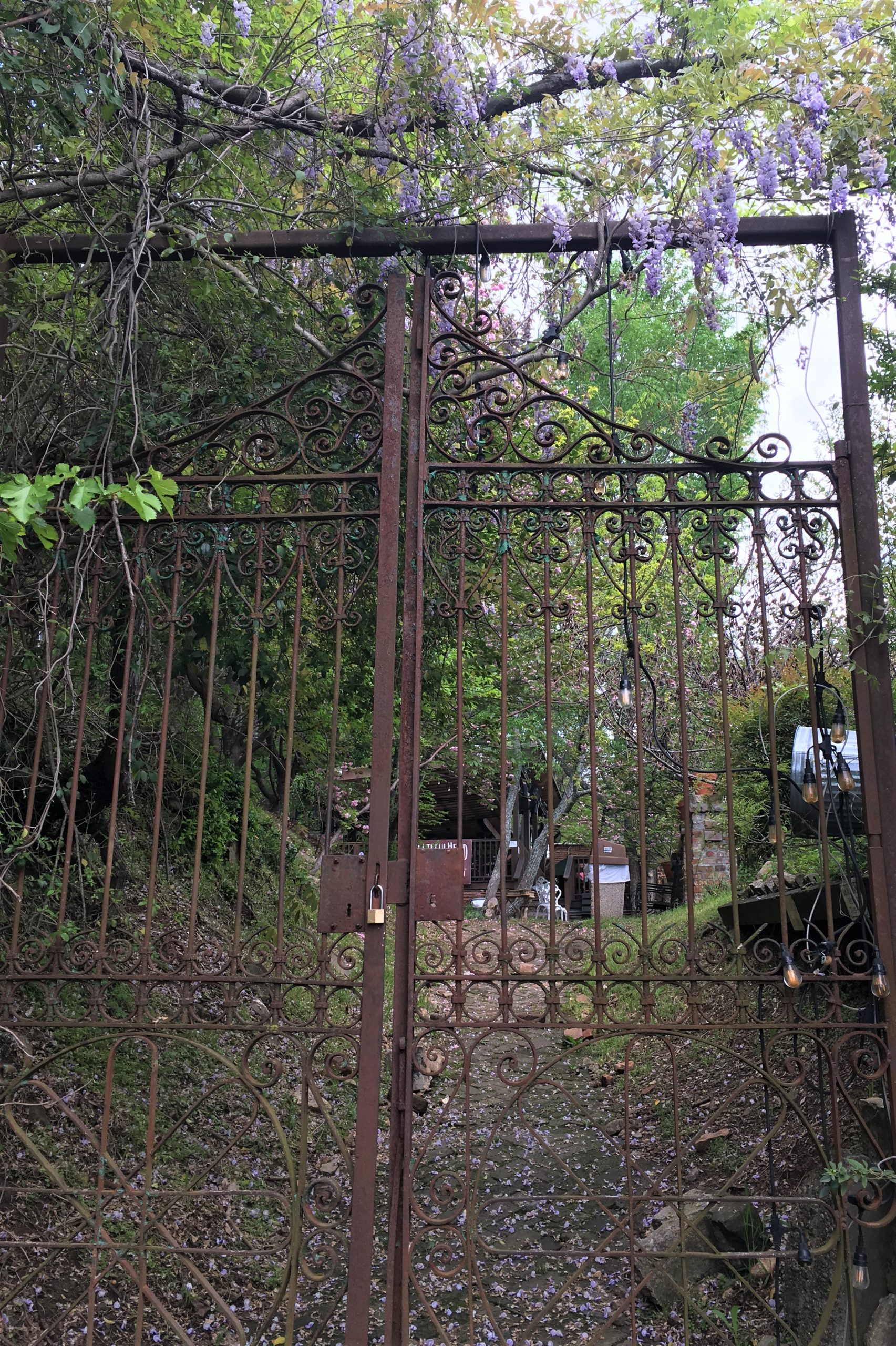
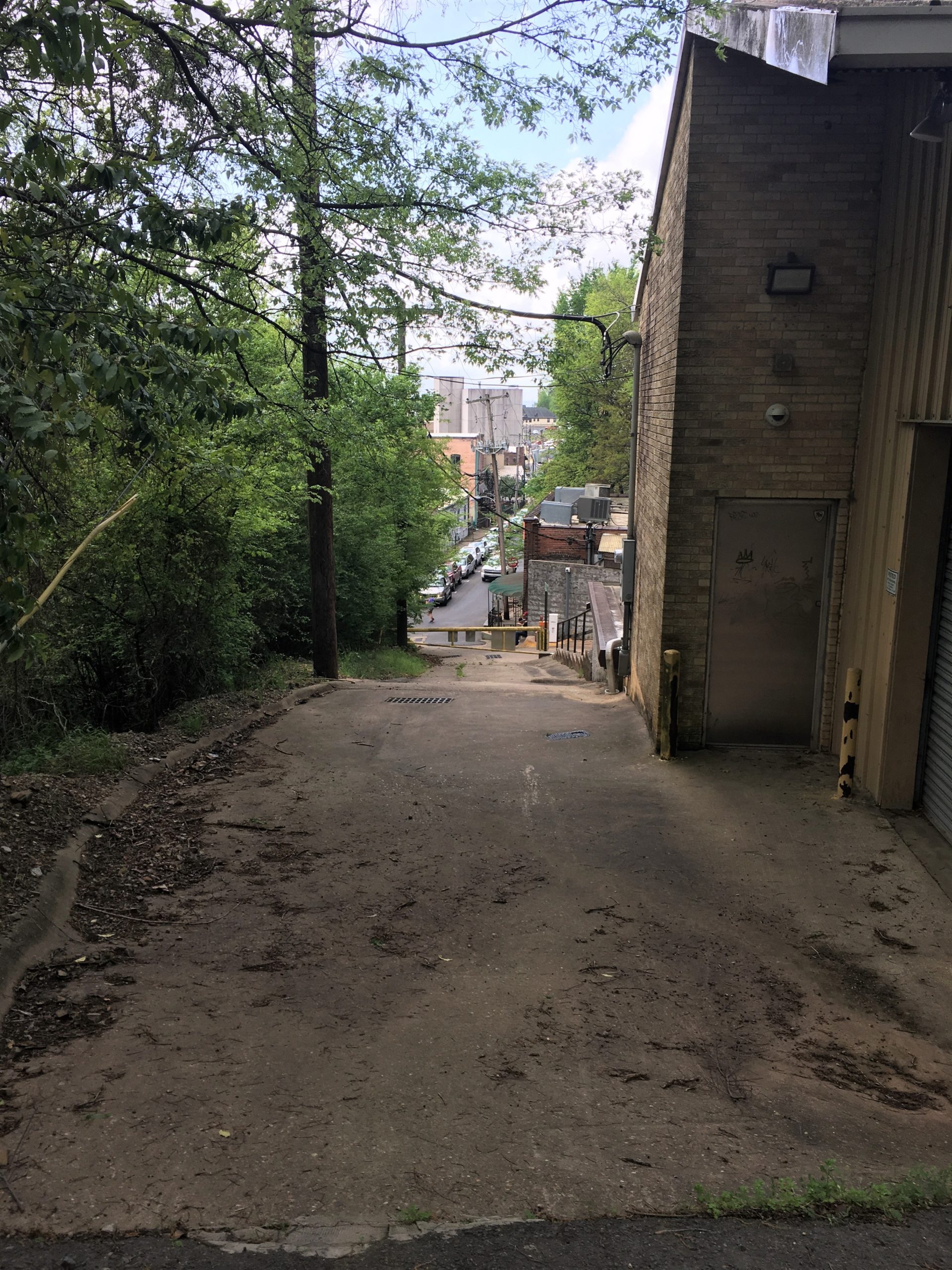

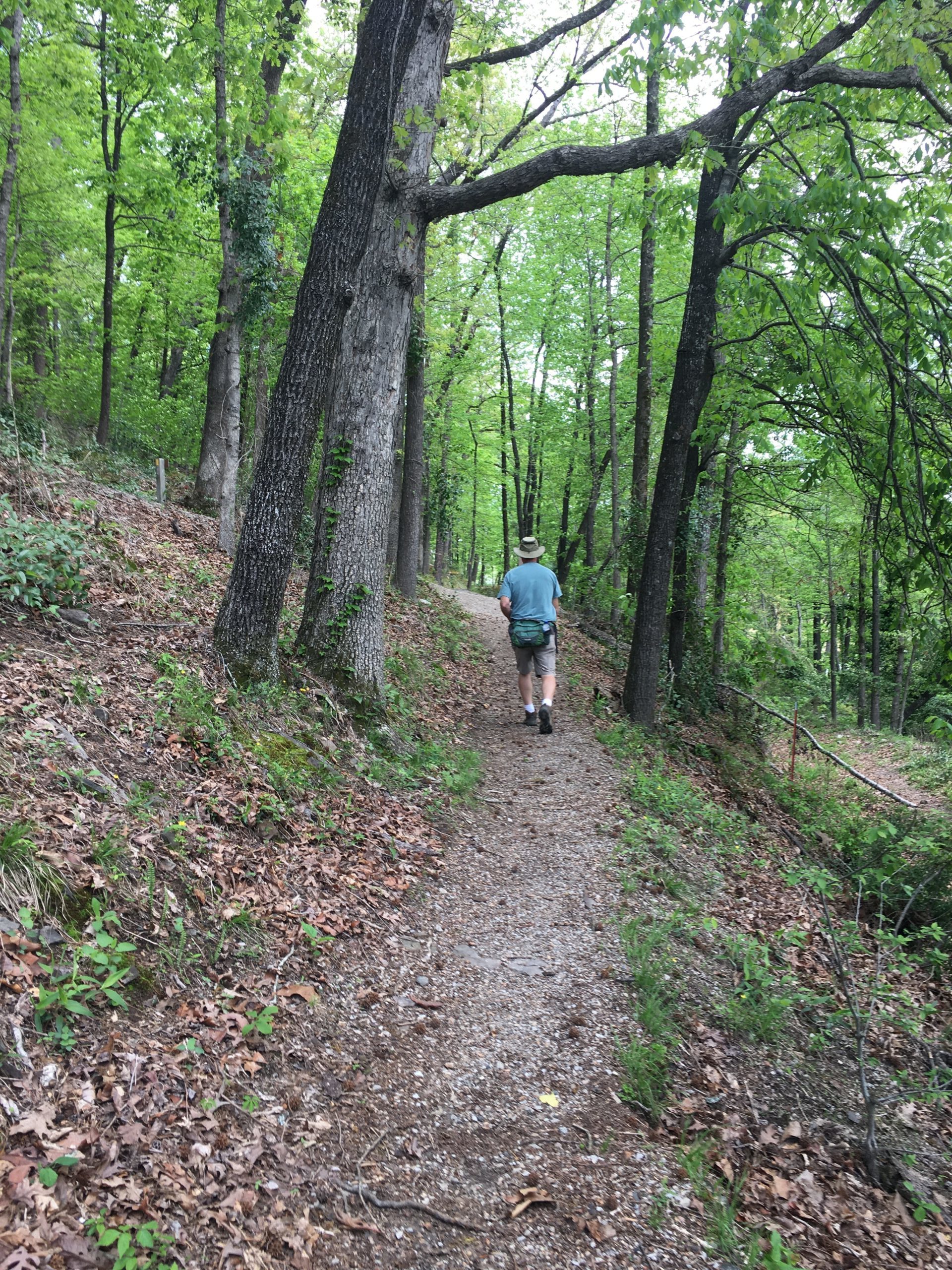
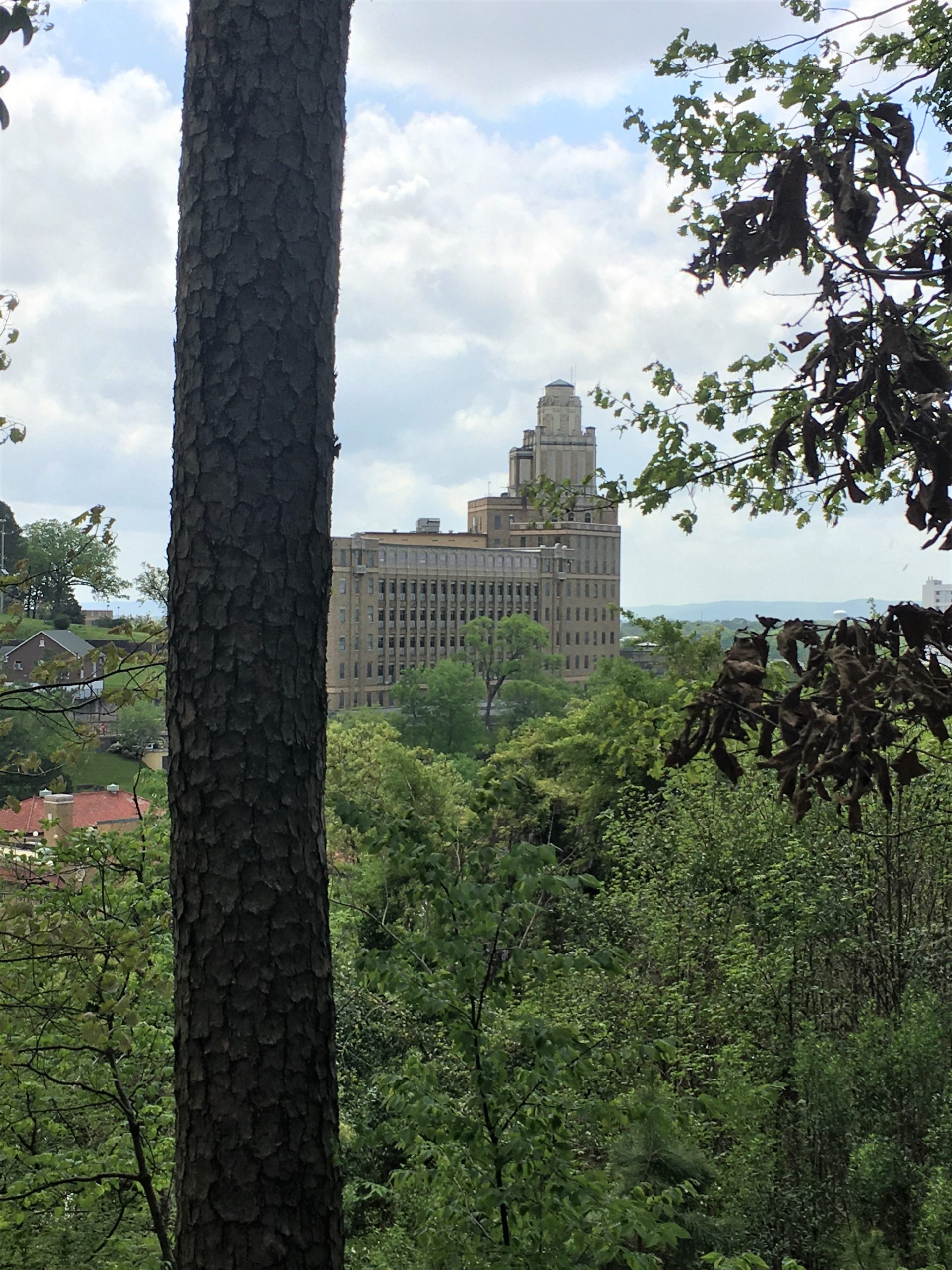
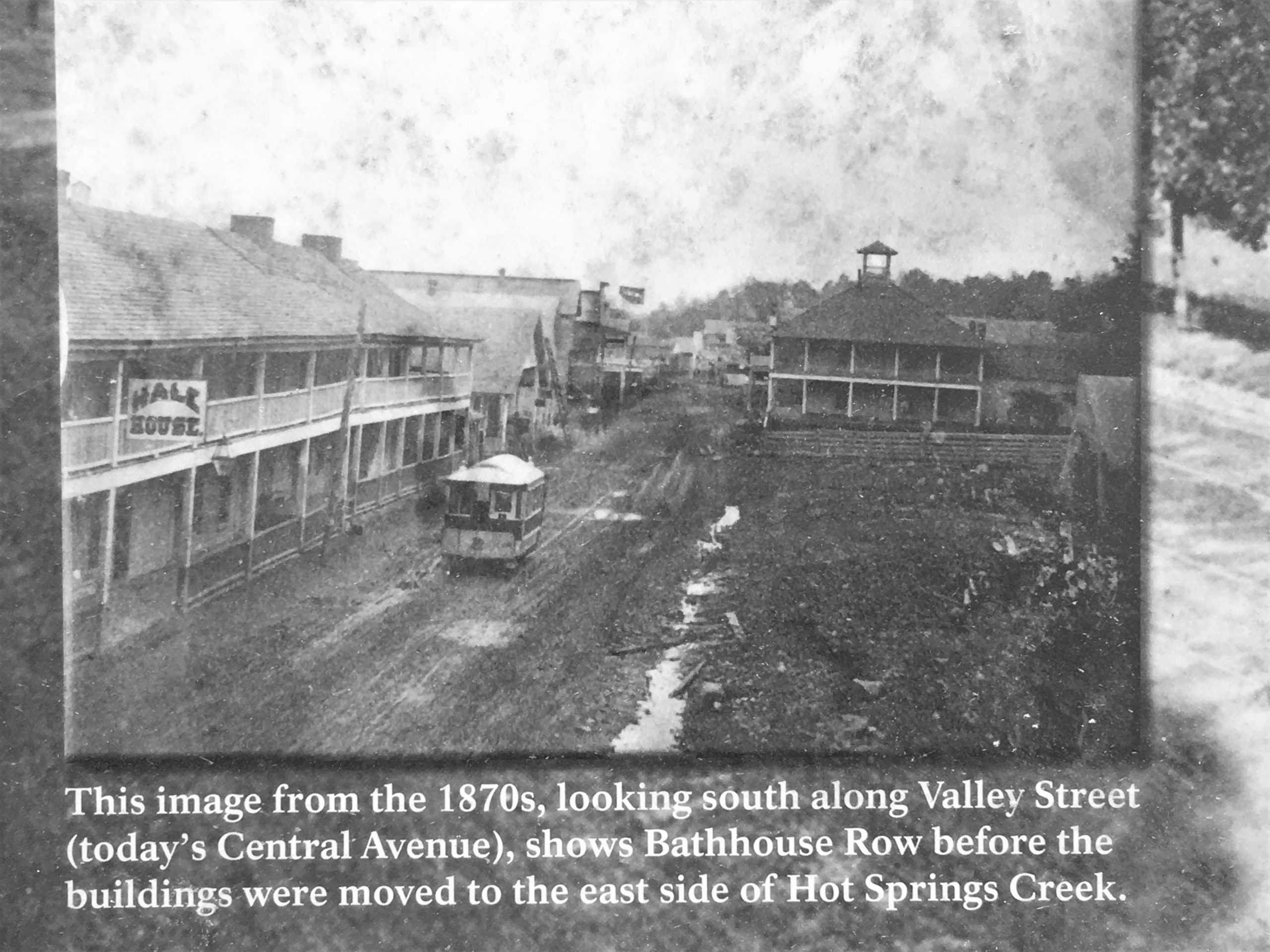
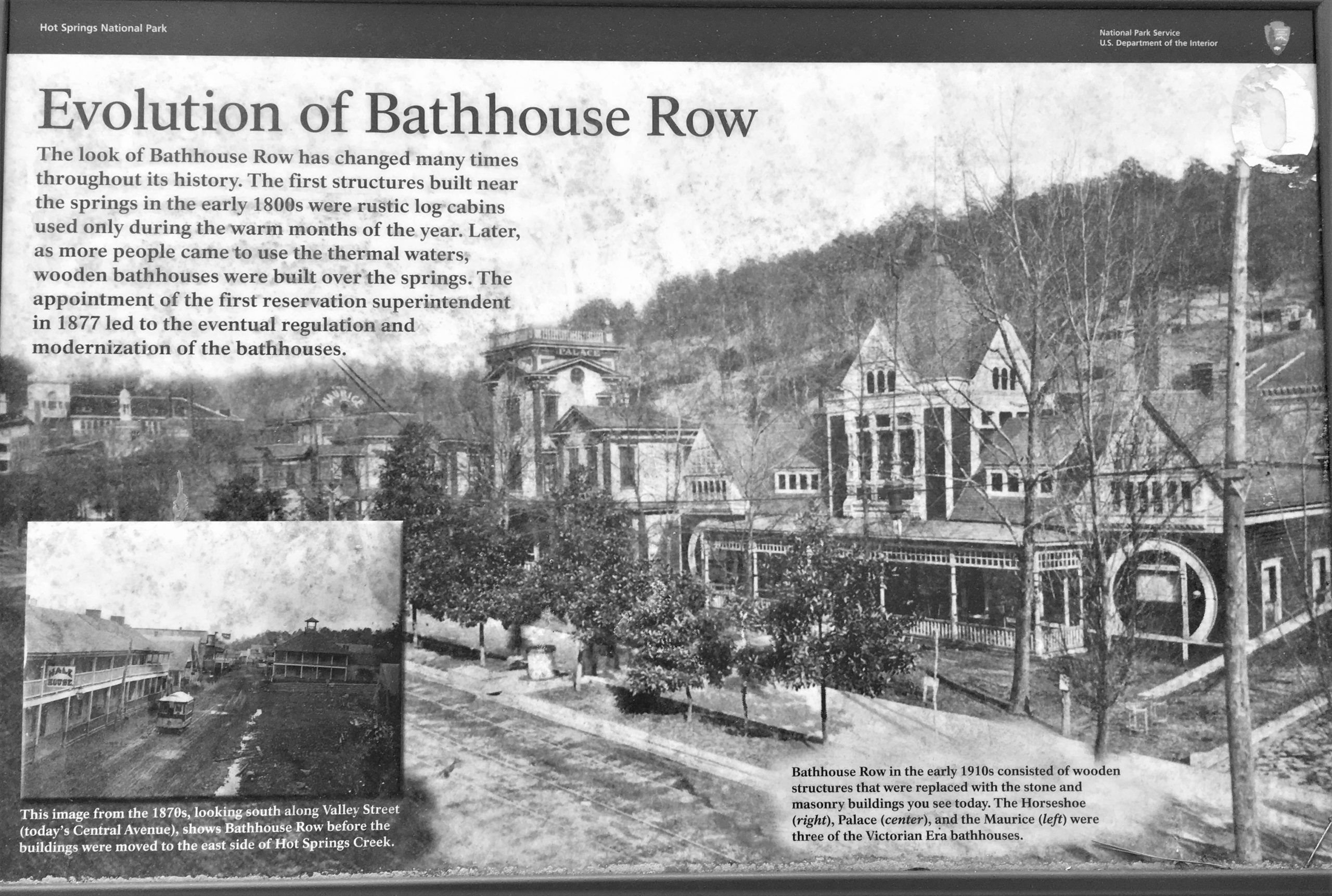

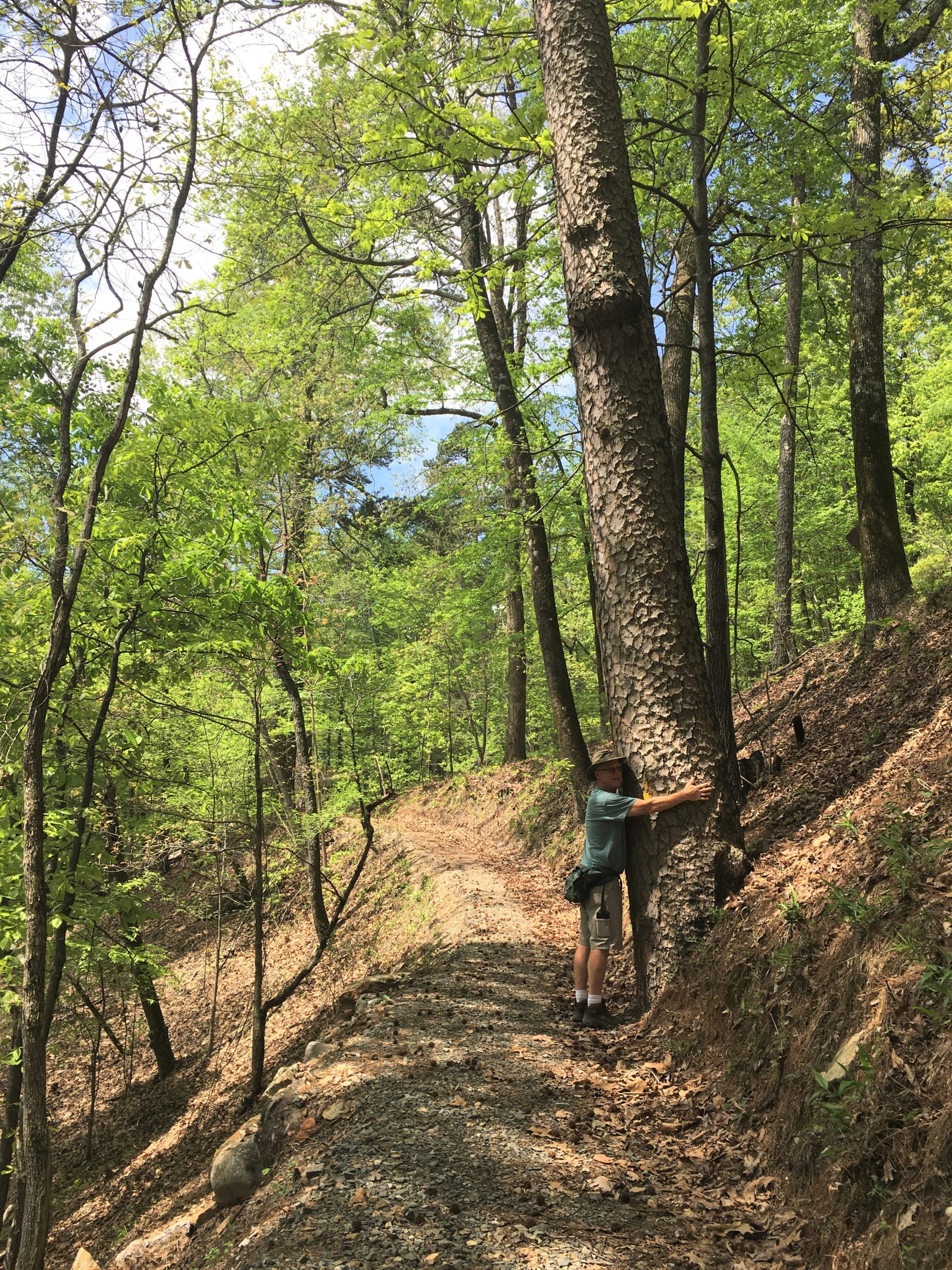
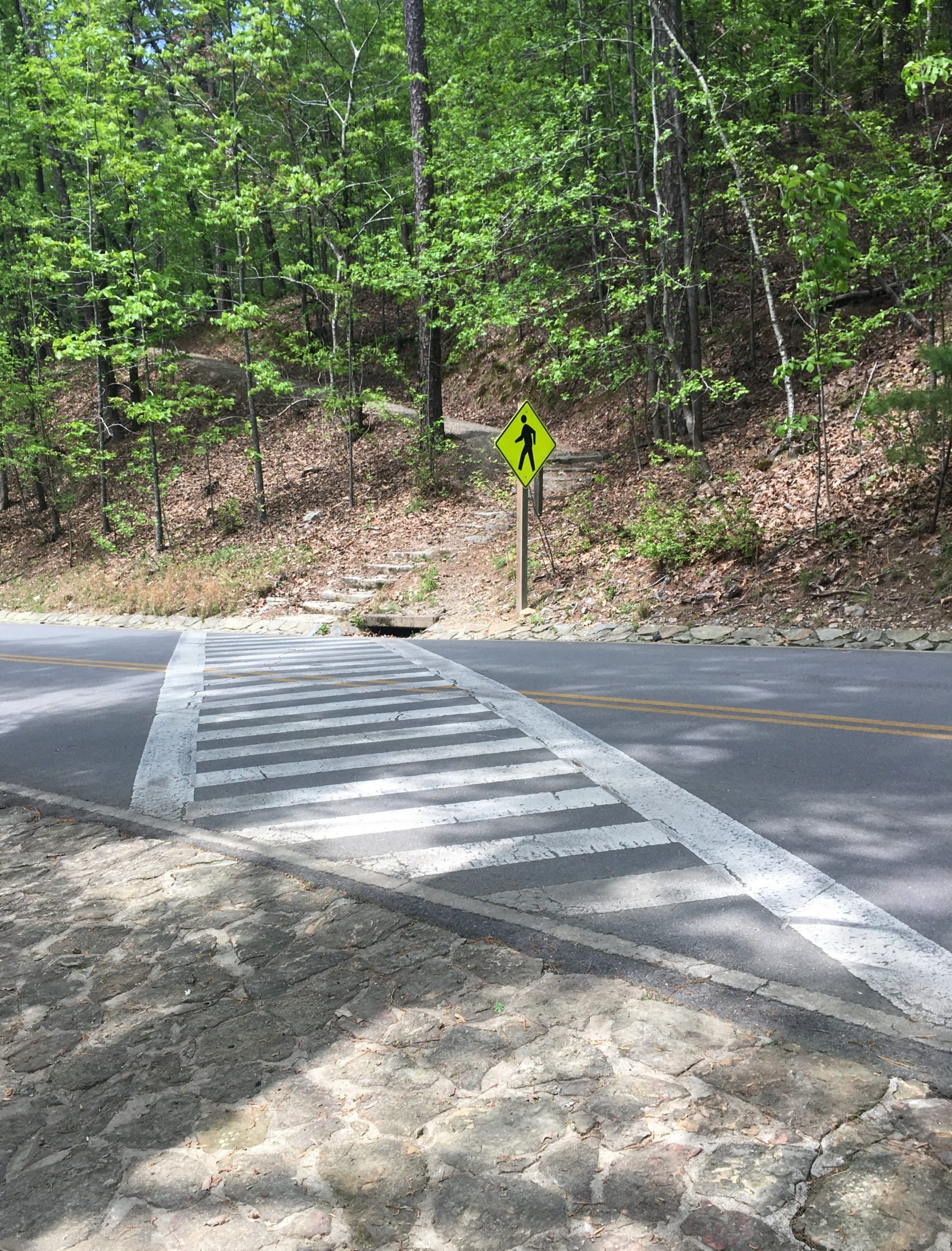
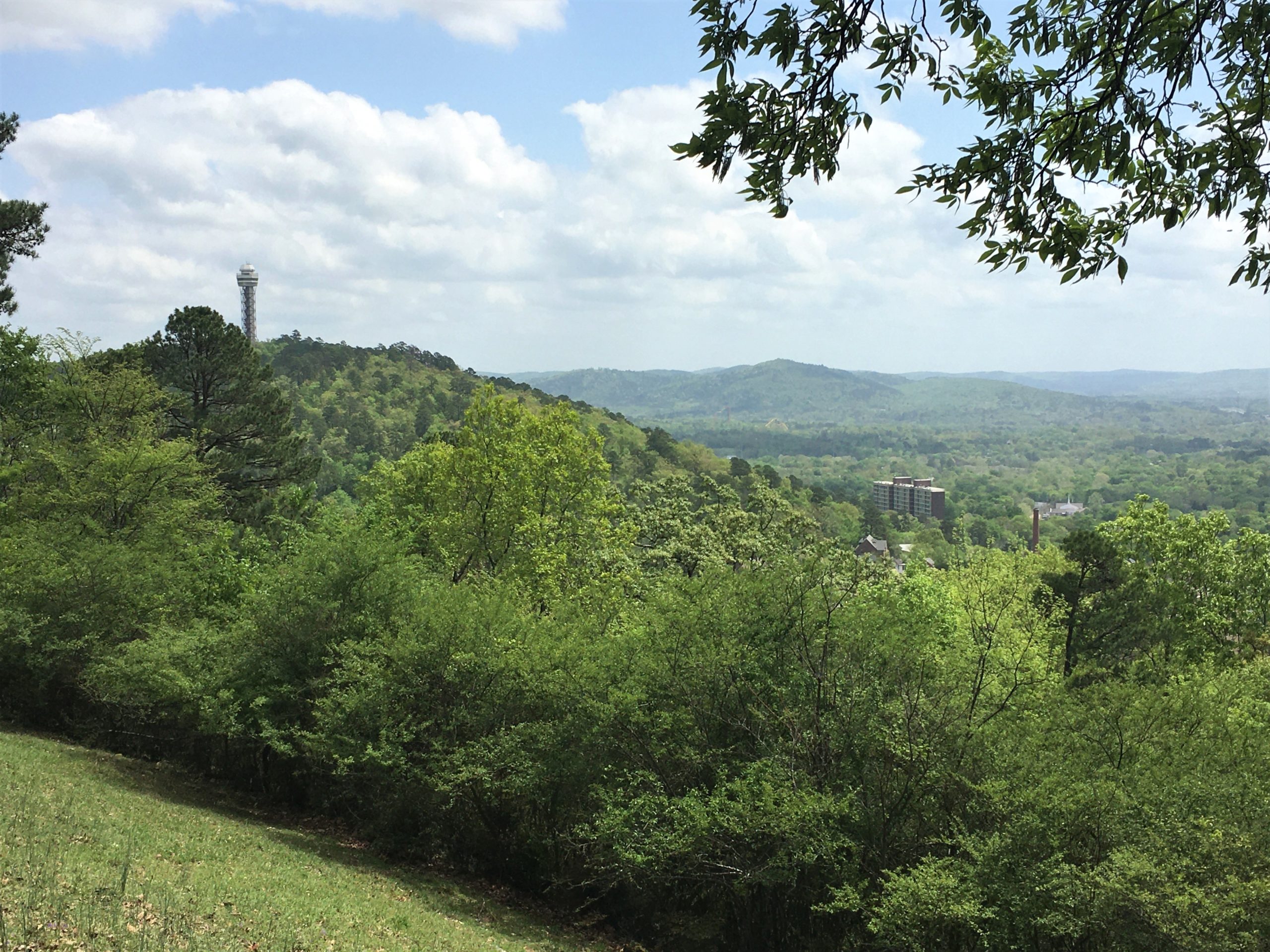

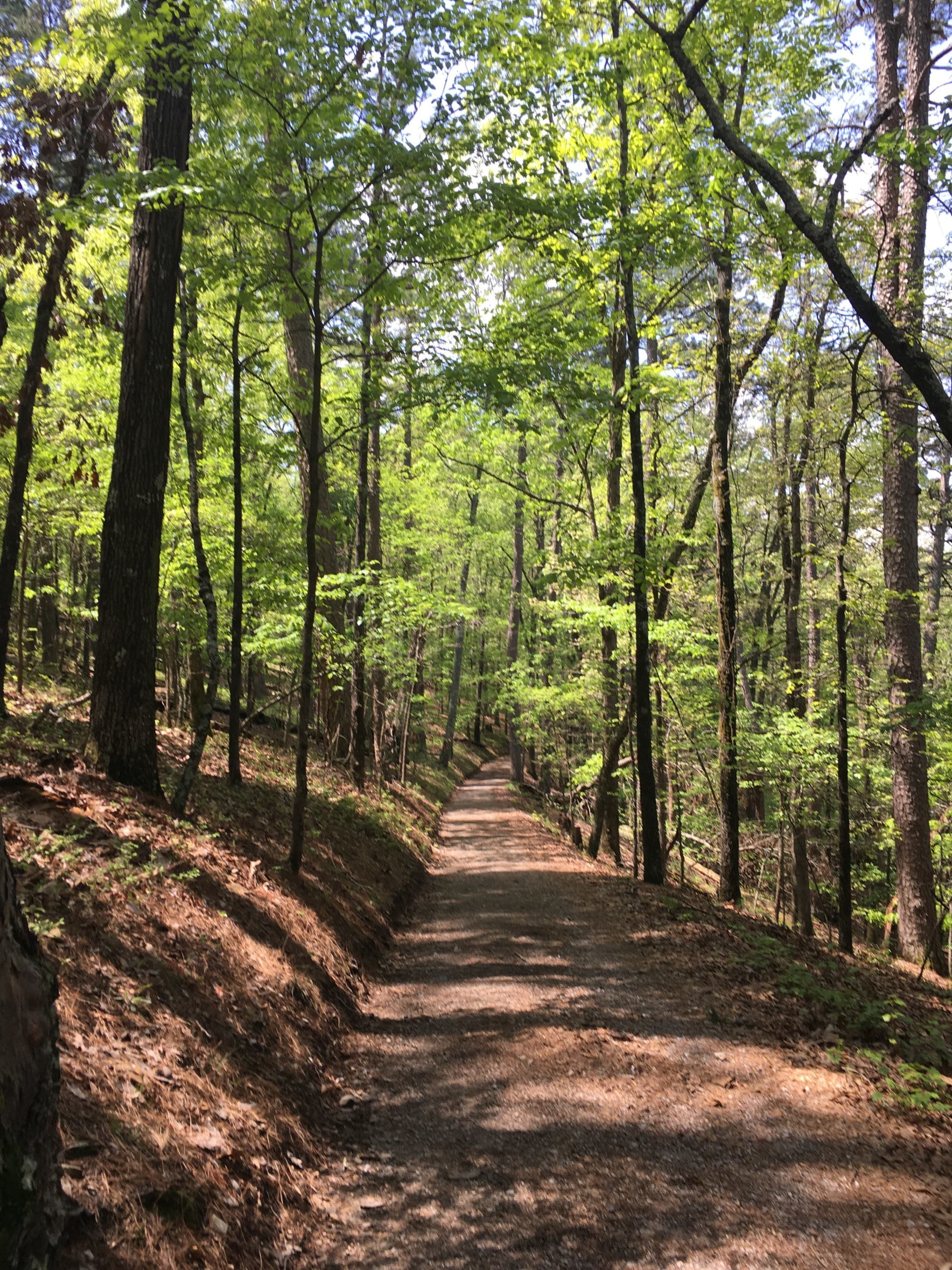

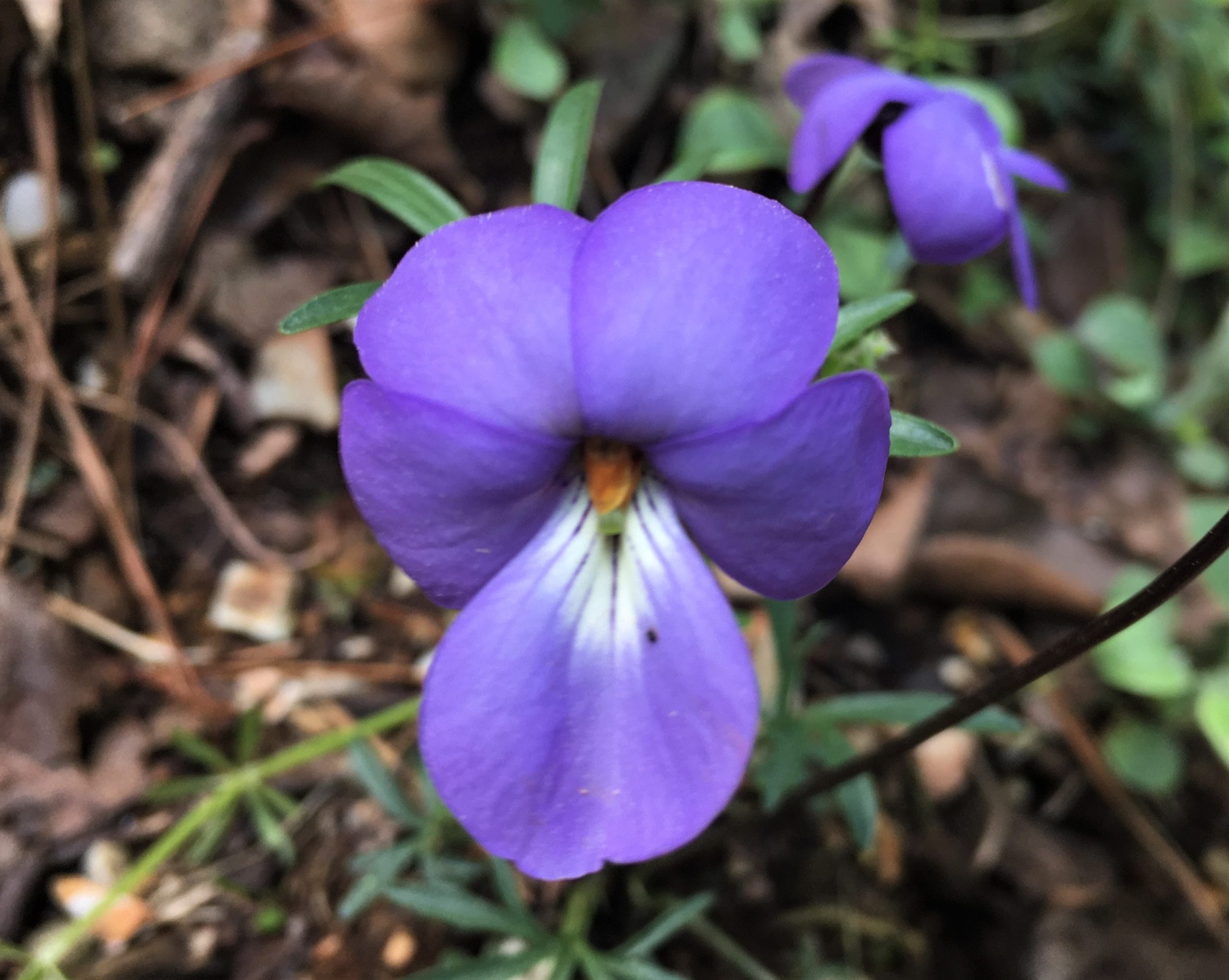
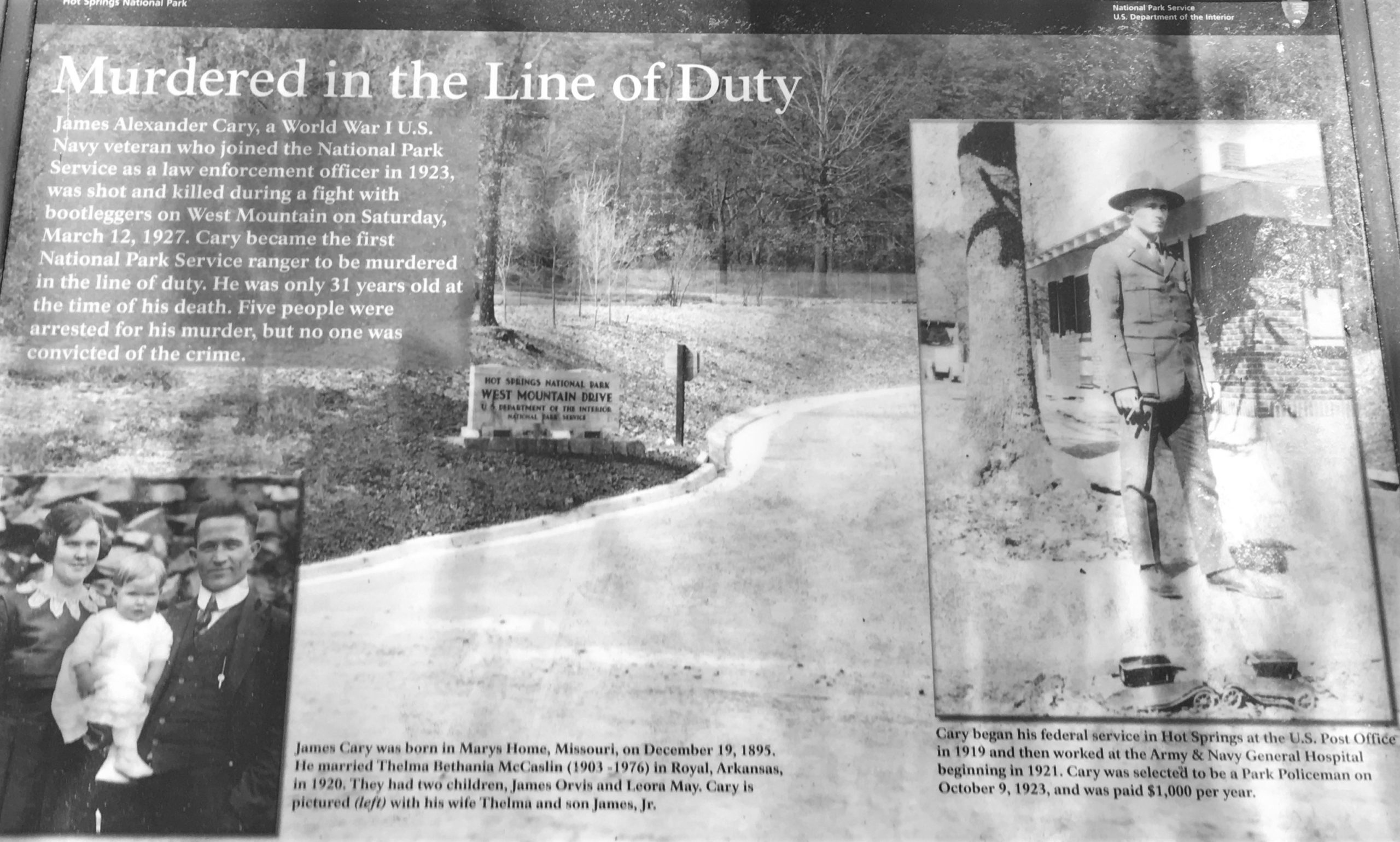
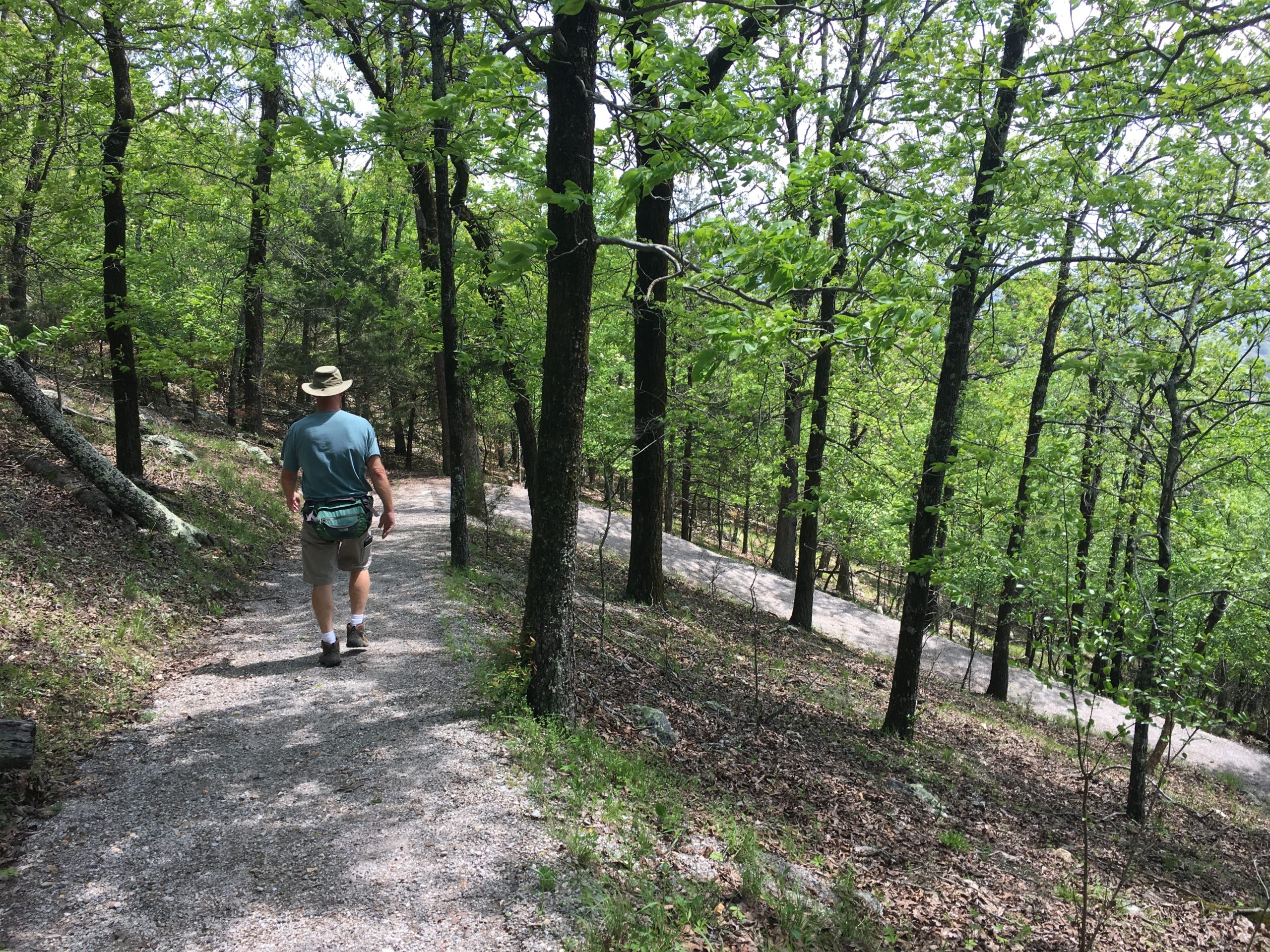
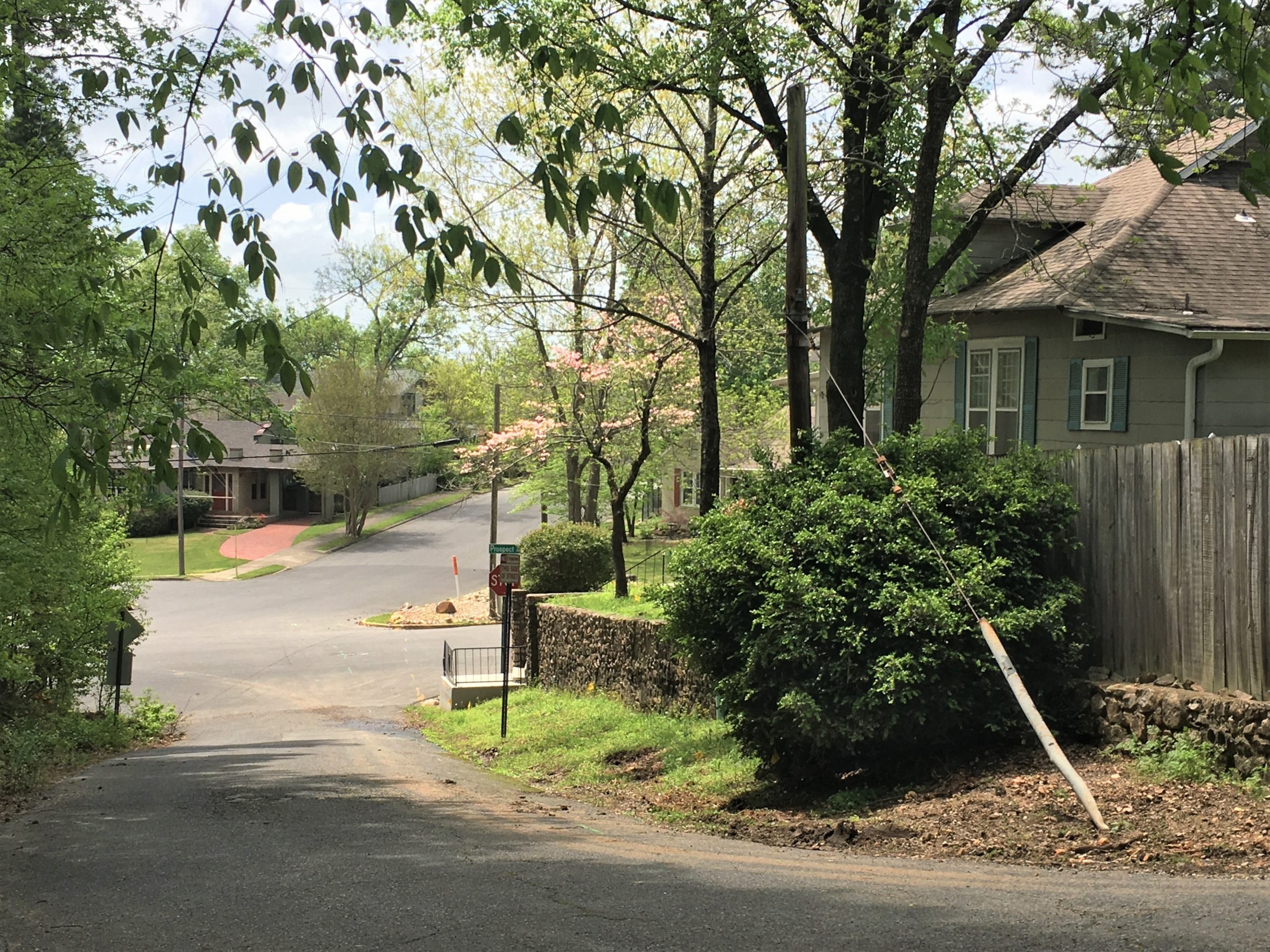
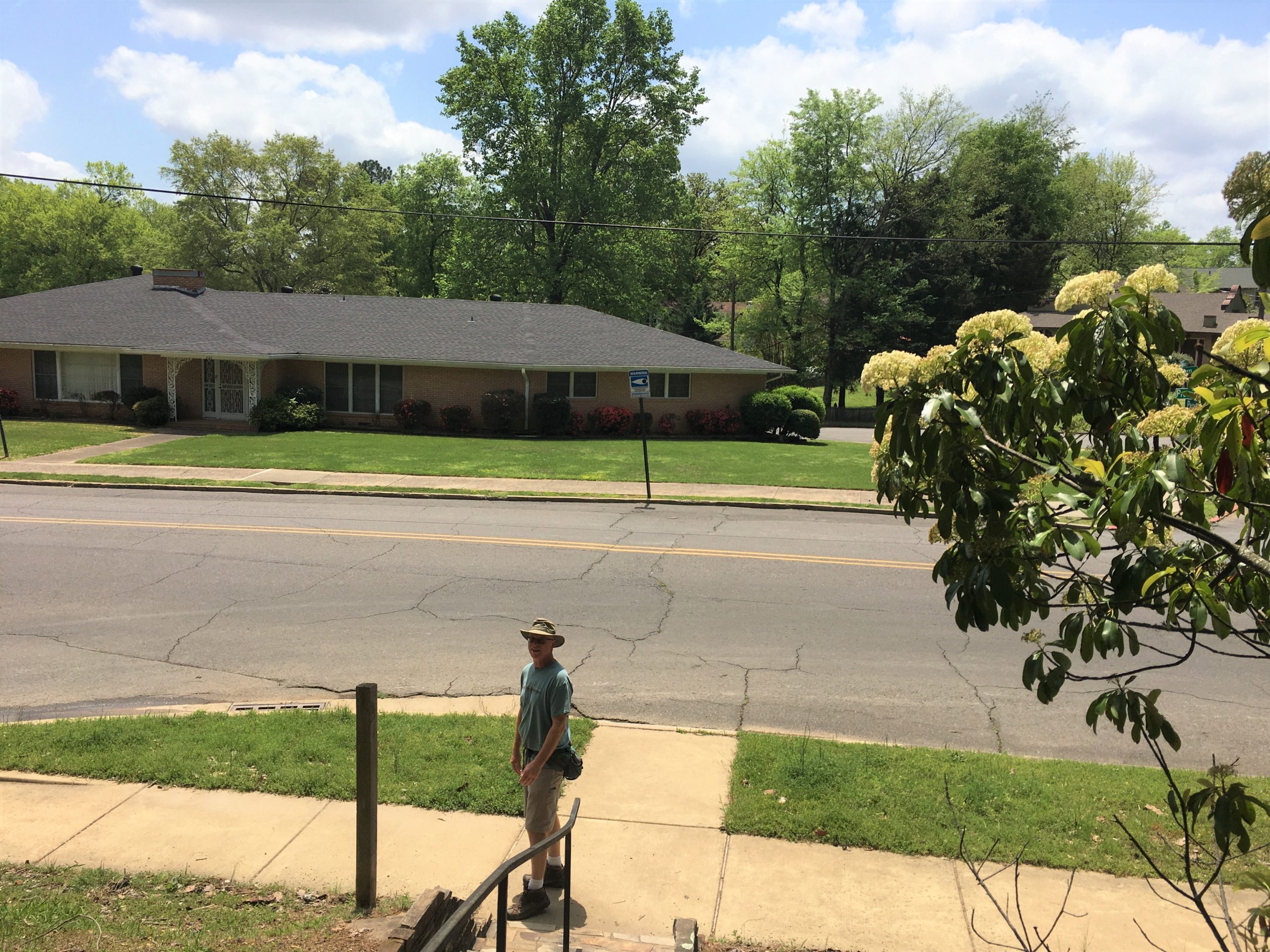
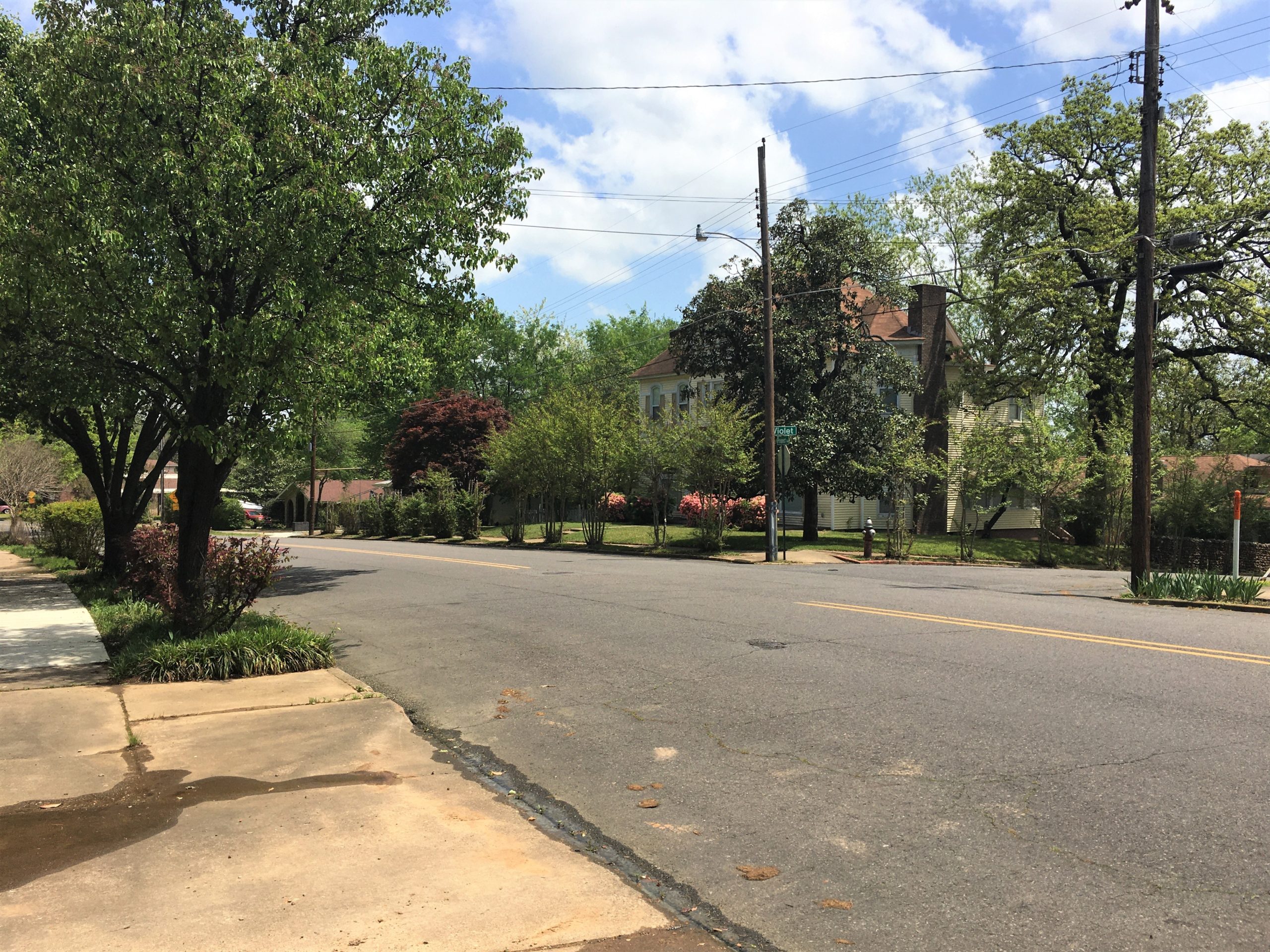
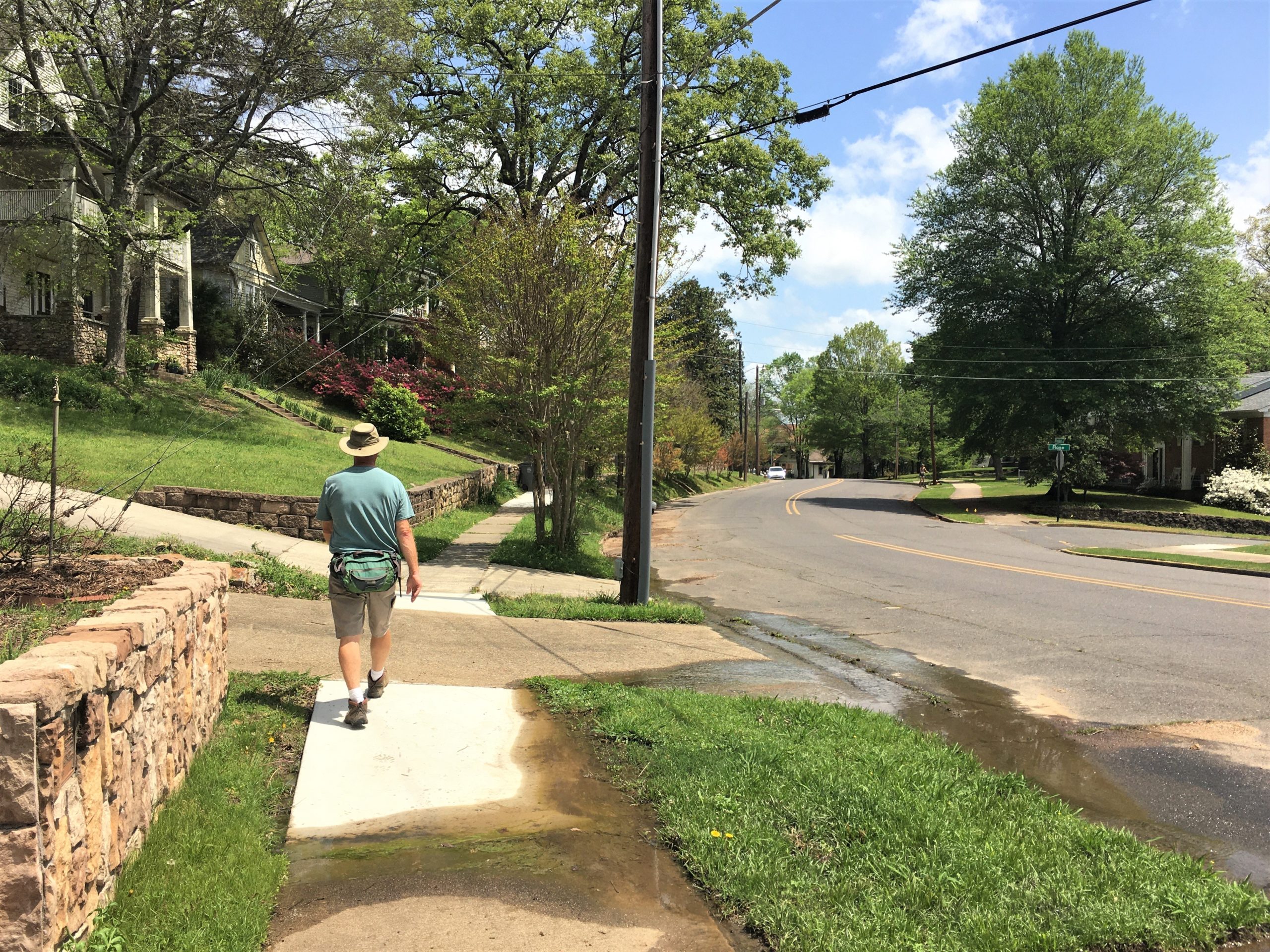
And the weird thing? There was water running out from a lot of them.
As there was all over town. I guess it’s springs.
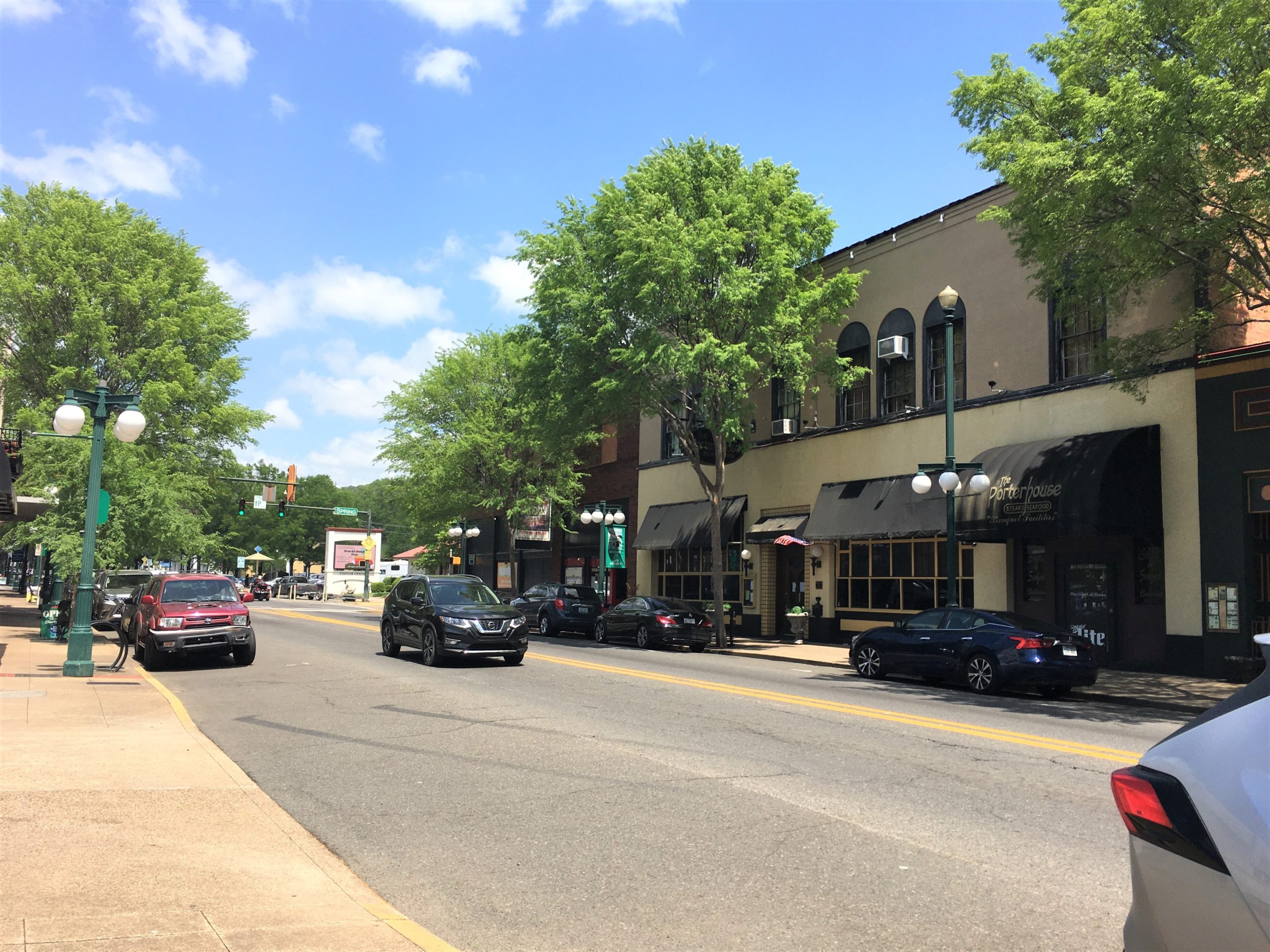

The other trail took us up a mountainside for views of the town that, in truth, we not great views, except that you could see for a long ways. But the actual town was hidden by trees. ☹
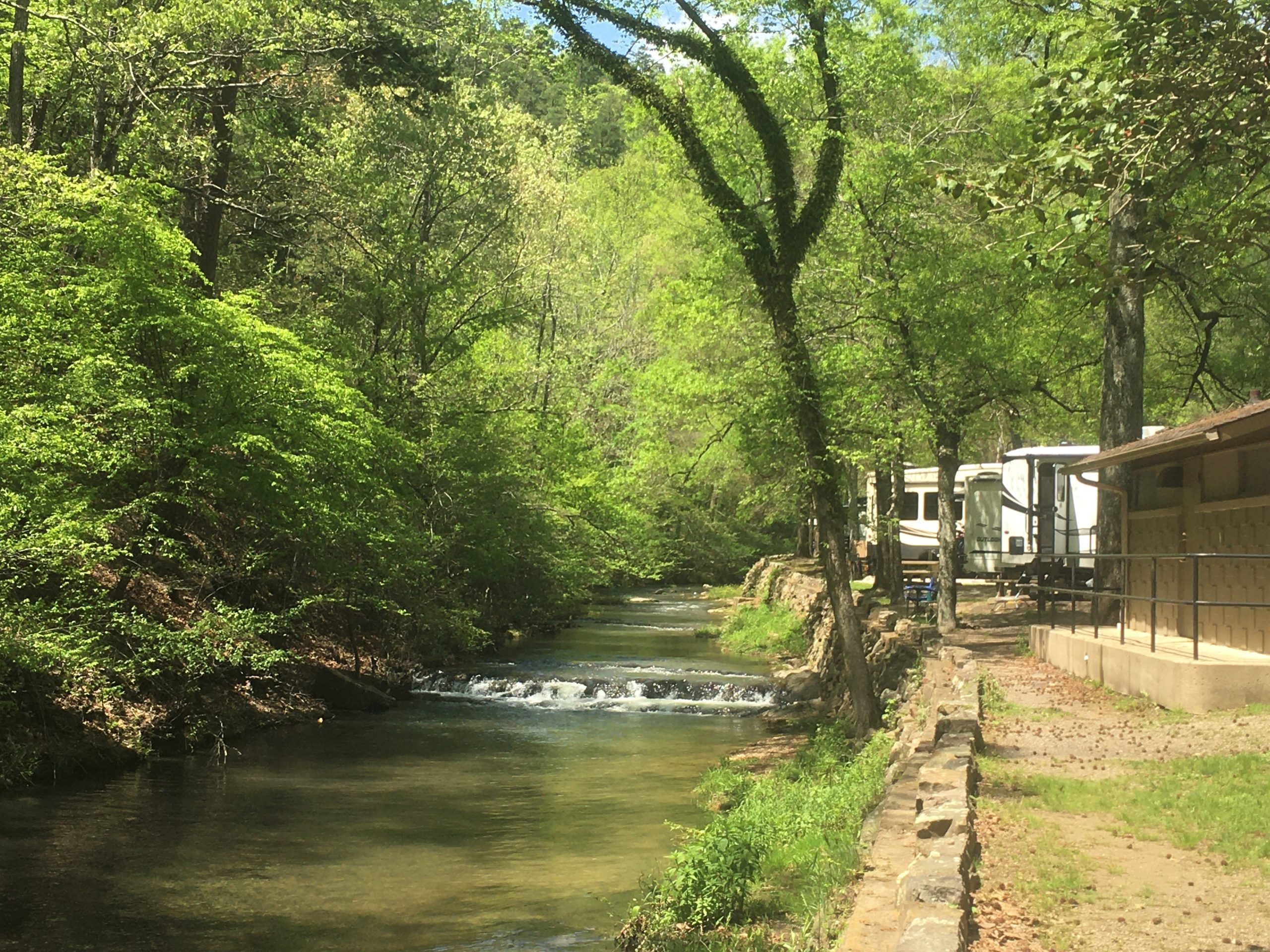

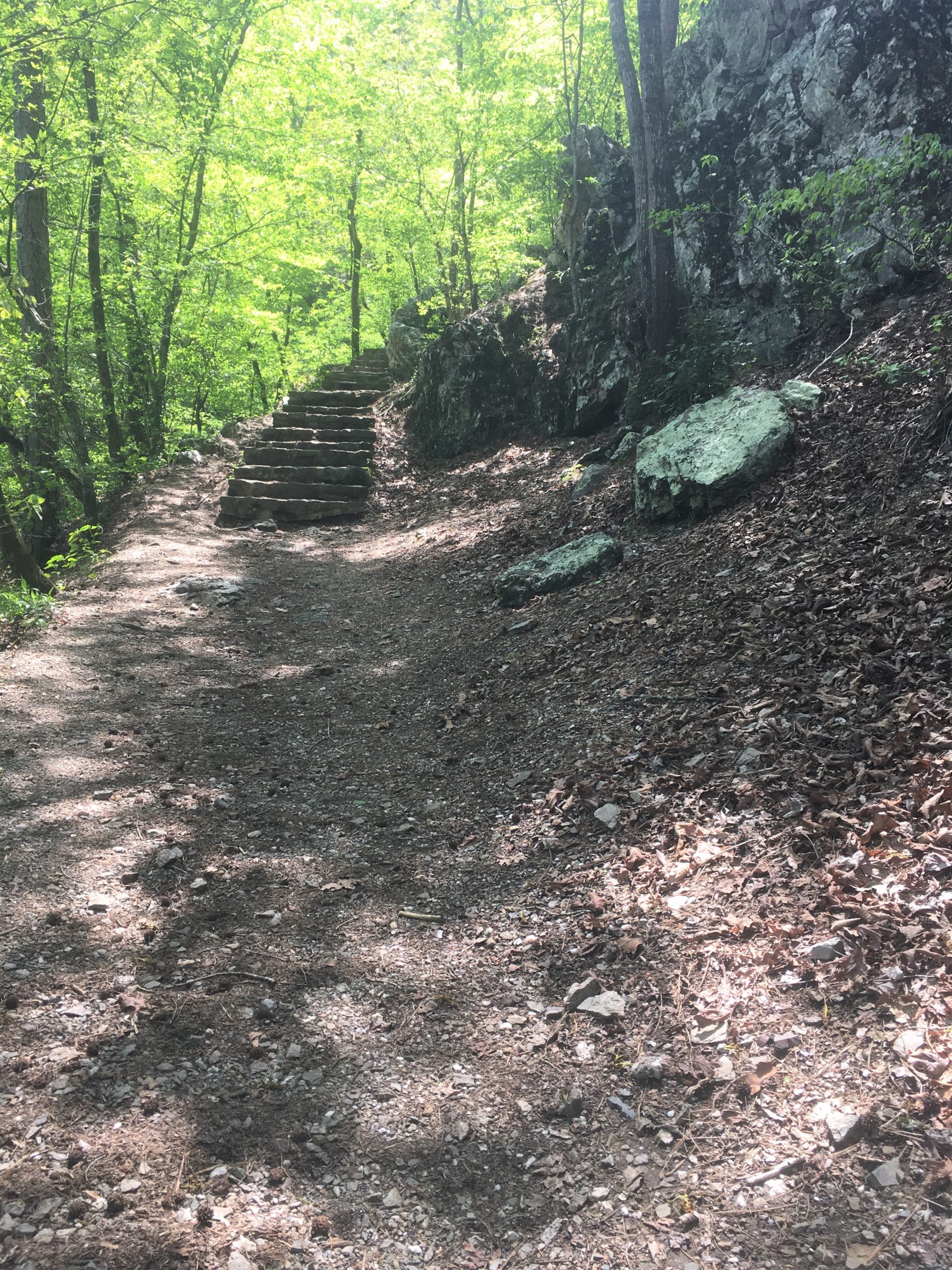
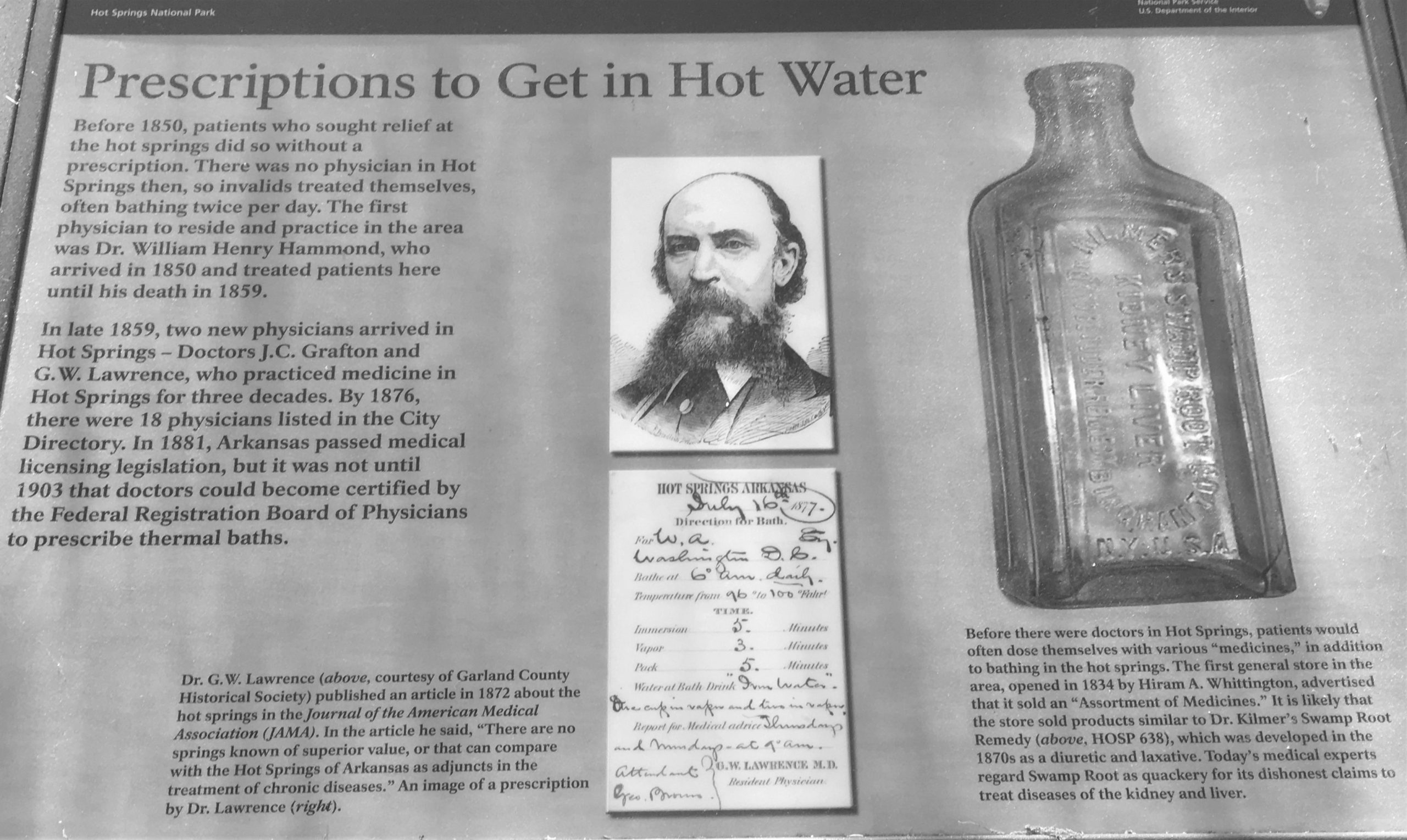
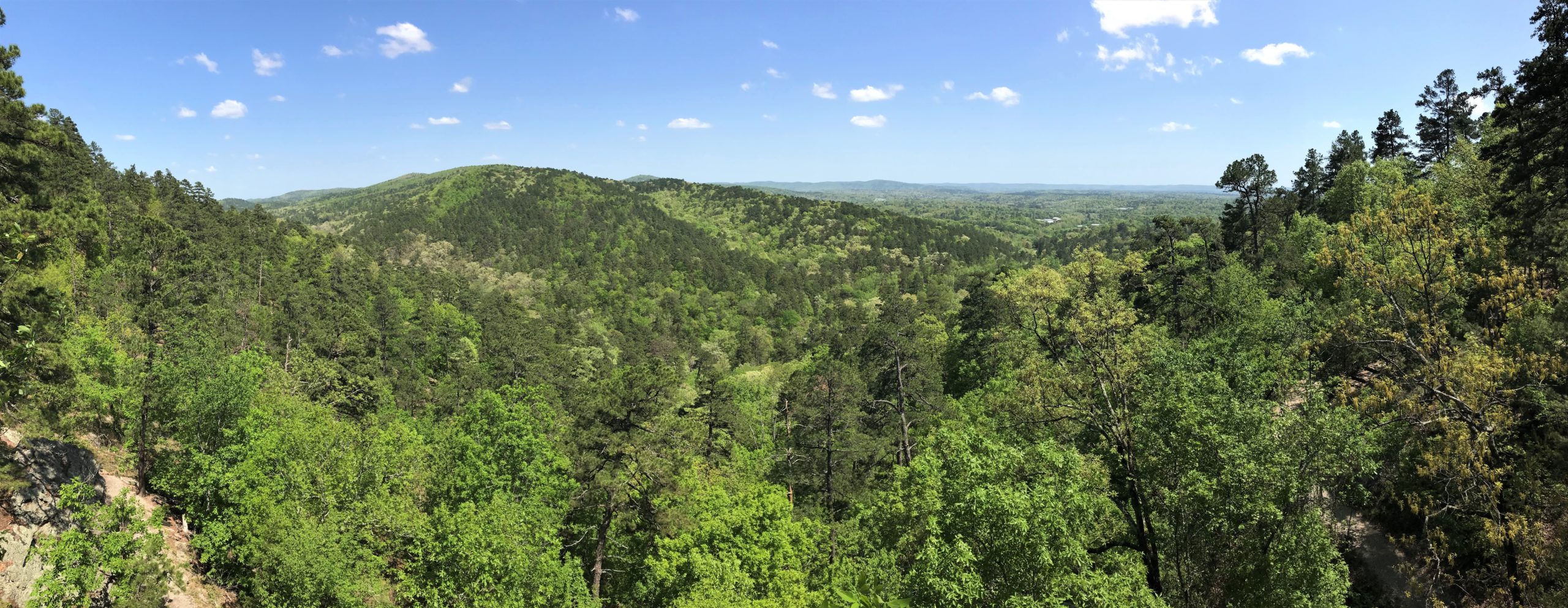

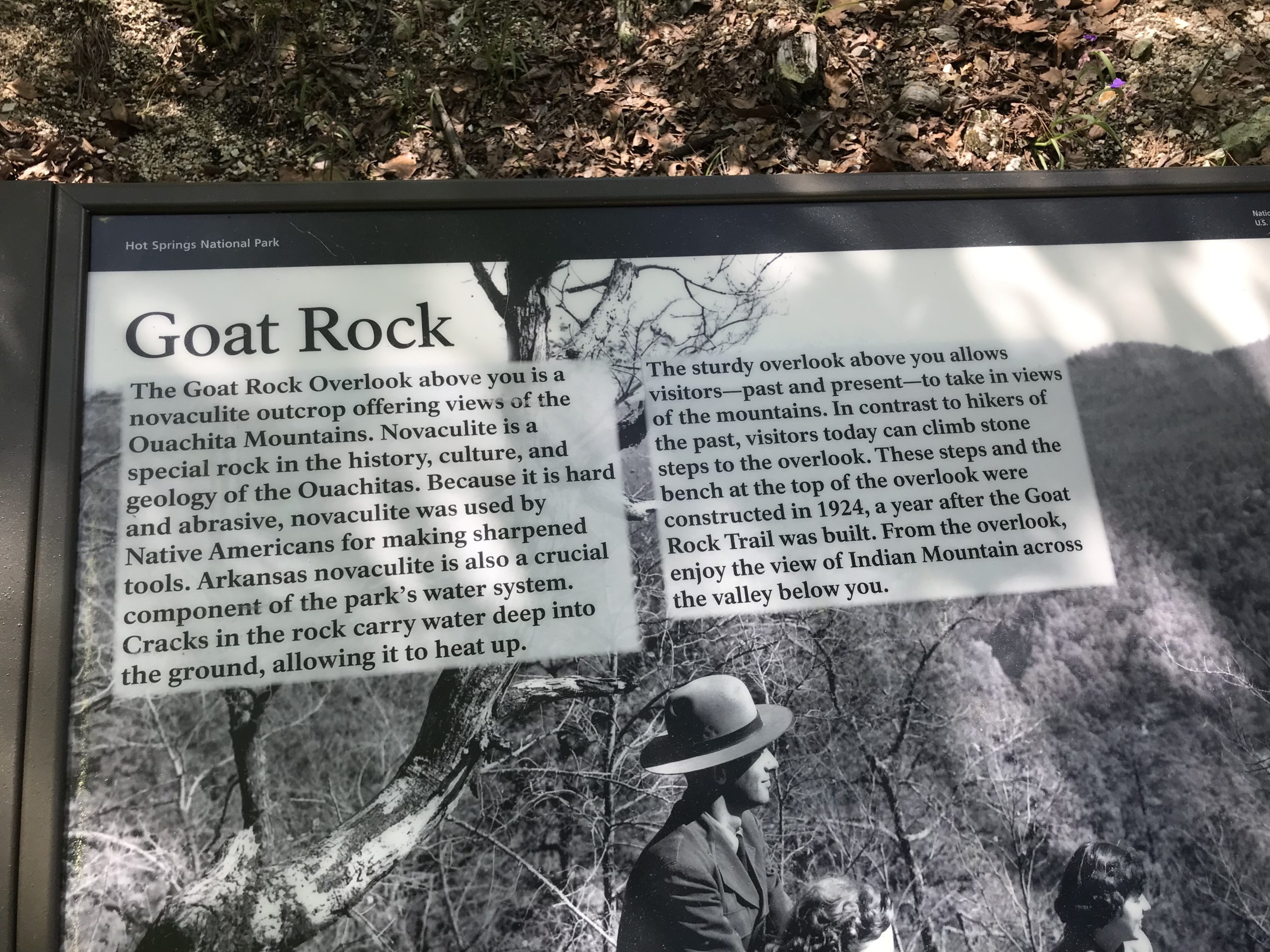
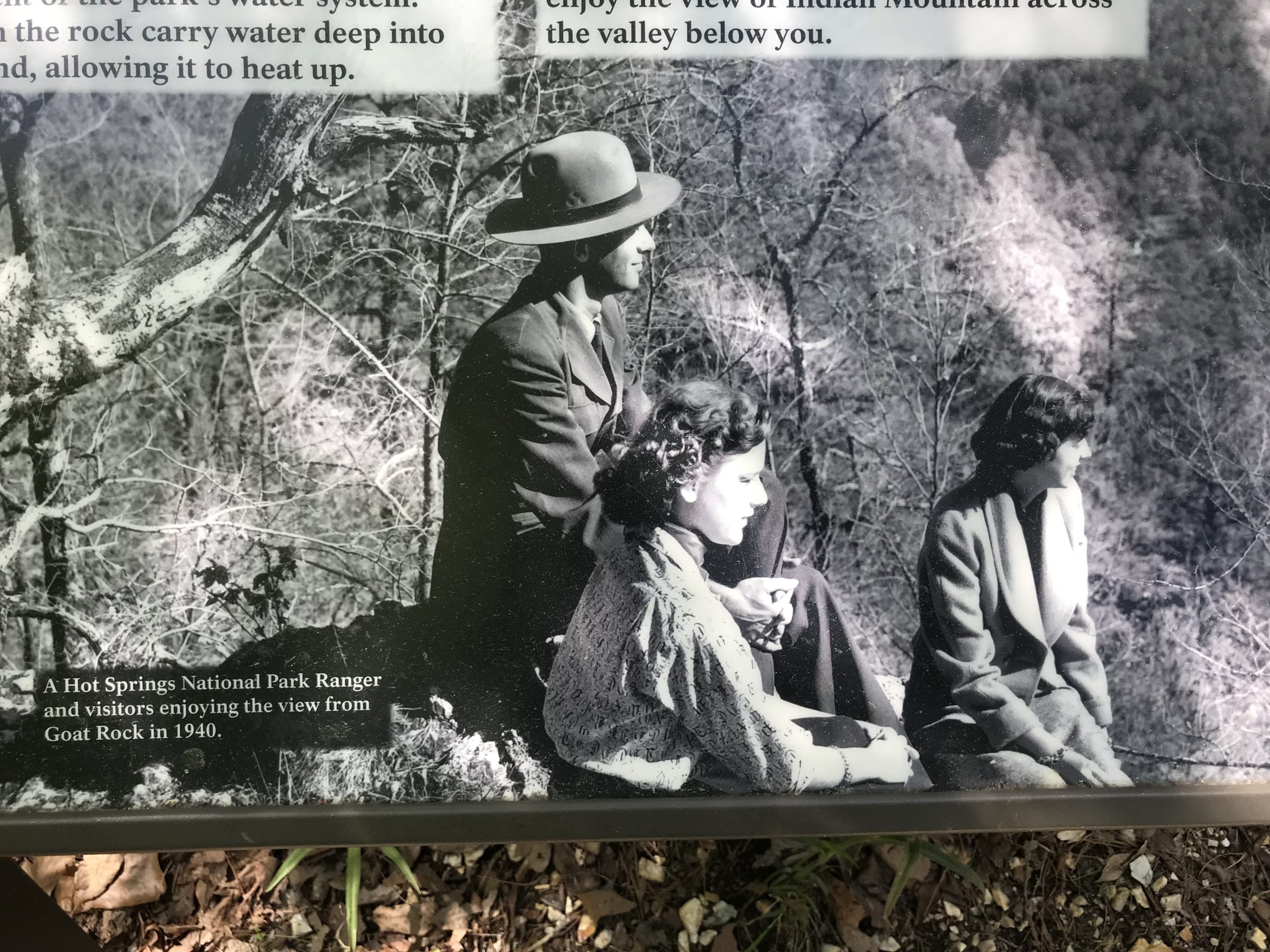
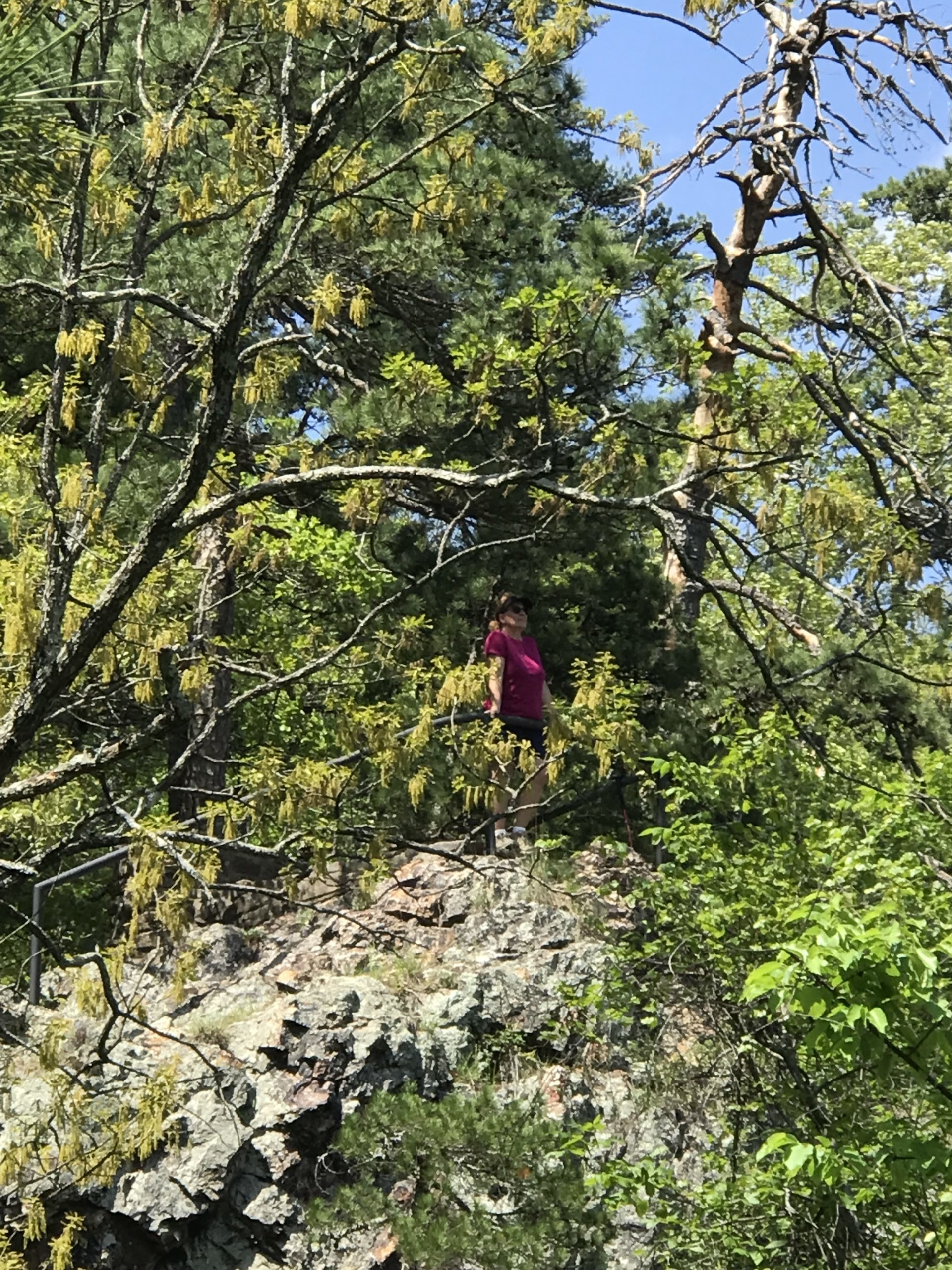
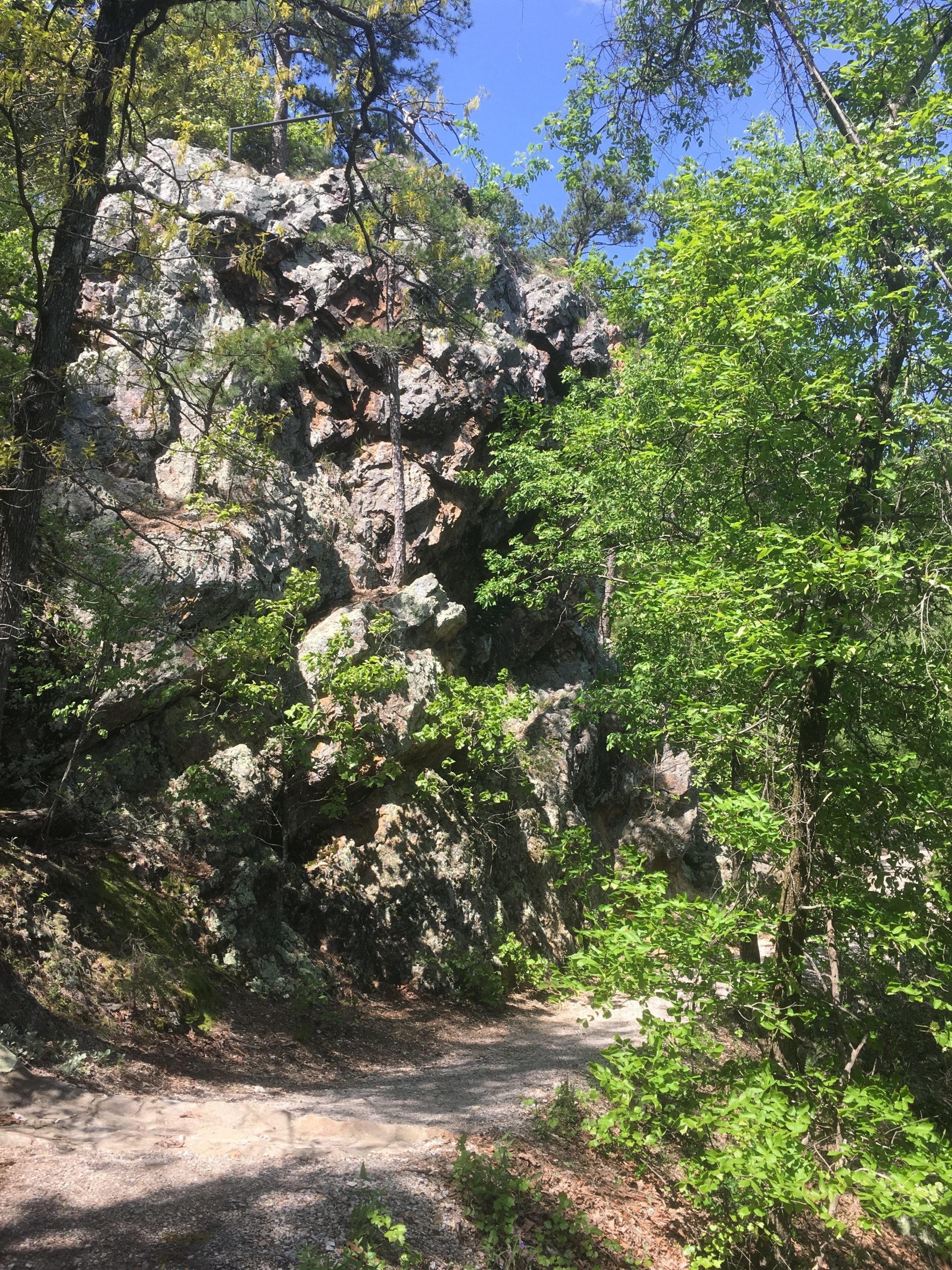
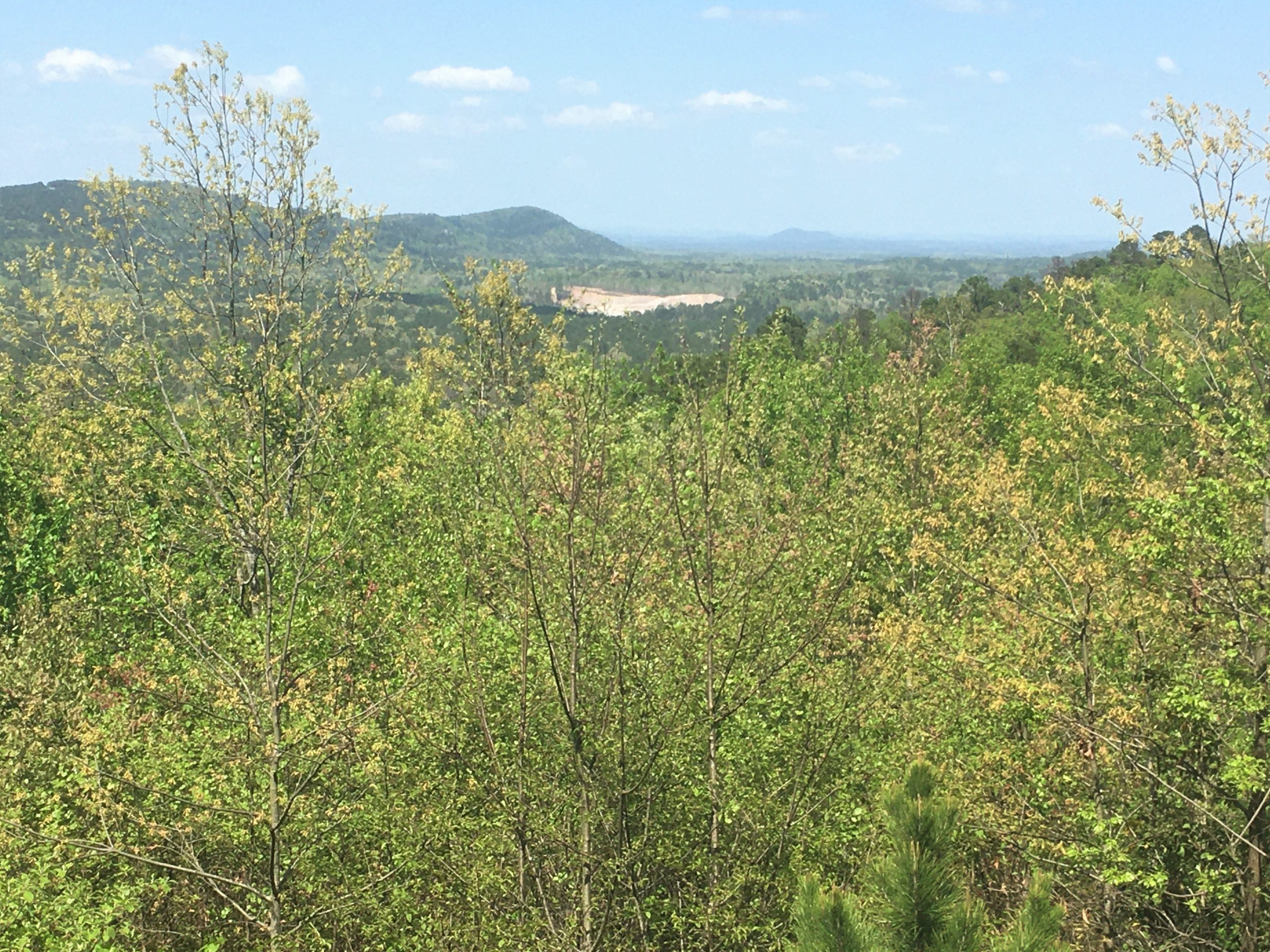

And that’s all she wrote!
Tomorrow, we move to Memphis. Well, technically it’s West Memphis, Arkansas, but we’ll be just across the river from Memphis, Tennessee. And we’ll be that much closer to home!
